Session Organizer: Alexander Chernyshev
Session Organizer: Eteri Svanidze
Session Organizer: Özhan Özatay
Session Organizer: Shiv Singh

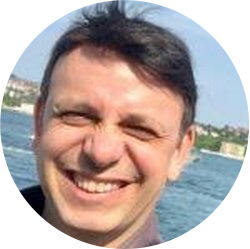
Session Organizer: Masahiro Yamashita, Shinya Hayami
Session Organizer: Ana Arauzo, Elena Bartolomé
Session Organizer: Emil Bozin, Nenad Lazarević
Session Organizer: Anatolie Sidorenko, Alexander A. Golubov


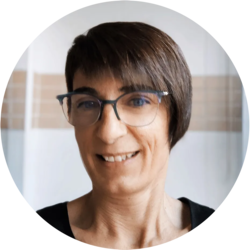
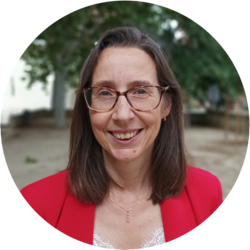




Session Organizer: Vladimir Fomin, Denys Makarov, Claire Donnelly
Session Organizer: Yılmaz Simsek, Olcay Kızılaslan
Session Organizer: Arcady Zhukov
Session Organizer: Volodymyr Chernenko, Arkady Zhukov, Jose María Porro
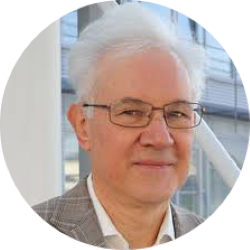


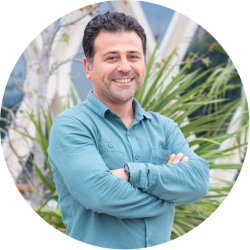

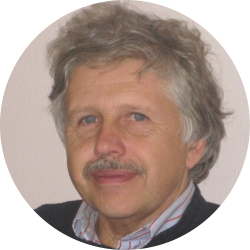
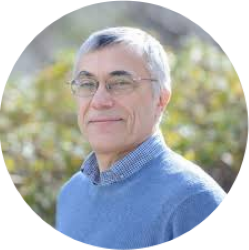


Session Organizer: Daniel Braithwaite, Duygu Yazici
Session Organizer: Ziad Melhem
Session Organizer: Amit Goyal
Session Organizer: Can Onur Avci, Jordi Sort

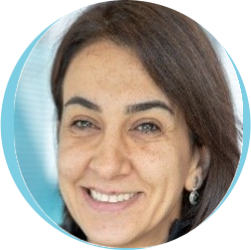
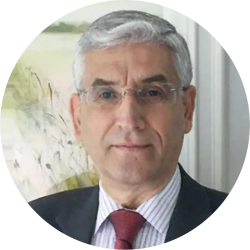



Session Organizer: Sebastian Wintz, Sabri Koraltan
Session Organizer: Claas Abert, Lukas Exl
Session Organizer: Yuriy Yerin
Session Organizer: Can Onur Avci, Saül Vélez

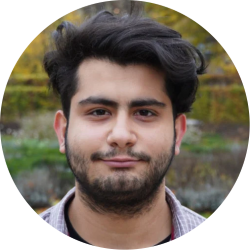

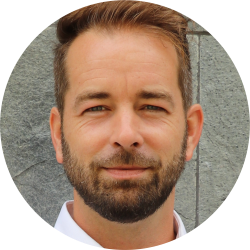



Session Organizer: Andrii Chumak, Sabri Koraltan, Sebastian Wintz
Session Organizer: Javier Campo, Andrei Rogalev
Session Organizer: Peter Švec, Ugur Topal
Session Organizer: Maciej Sawicki




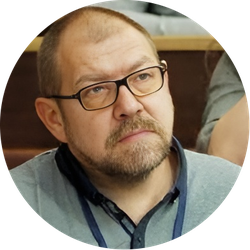
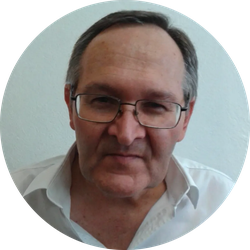

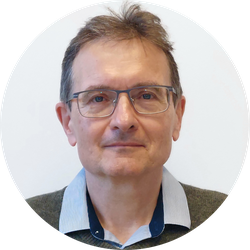
Session Organizer: Roberto Lo Conte
Session Organizer: Vadim Geshkenbein
Session Organizer: Thomas Ortlepp, Timur V. Filippov, Jie Ren
Session Organizer: Rustem Khasanov, Alexander Shengelaya

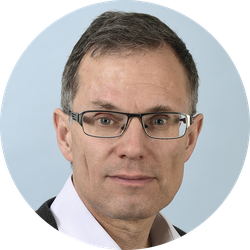

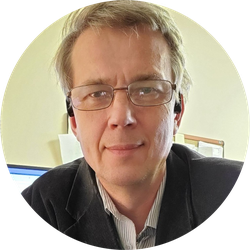
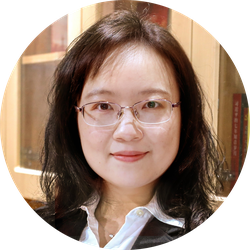


Session Organizer: Barış Güner, Kévin Berger
Session Organizer: Xiangrong Wang
Session Organizer: Mehmet Ali Aksan
Session Organizer: Toni Shiroka





Session Organizer: Bernd Büchner
Session Organizer: Hiroaki Kumakura, Daniel Gajda, Burcu Savaşkan
Session Organizer: Alexander Eaton, Vadim Grinenko, Egor Babaev, Hans-Henning Klauss
Session Organizer: Jonathan Pelliciari, Valentina Bisogni, Claudio Mazzoli
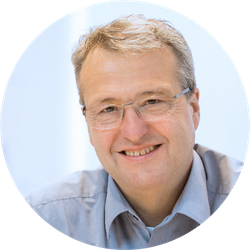


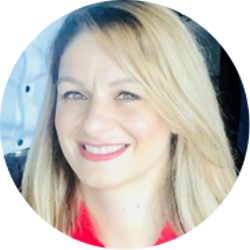







Session Organizer: Jonathan Pelliciari, Gabriele Grosso
Session Organizer: Umut Aydemir
Session Organizer: Sastry Pamidi, Yasuharu Kamioka
Session Organizer: Mahmoud Abdel-Hafiez



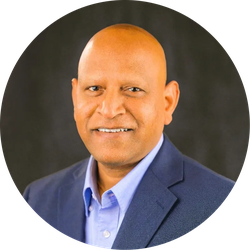
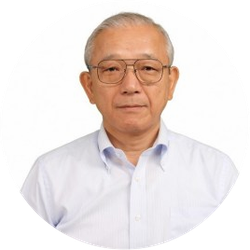

New Developments in Quantum Magnetism
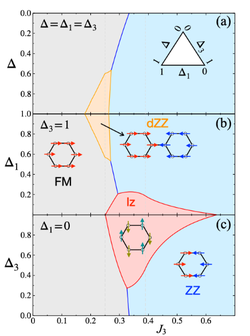 Research in quantum, frustrated, and low-dimensional magnets is at the forefront of condensed matter physics, inspiring a multitude of quests for exotic states, non-trivial phenomena, models to realize them, and real materials that can host them. Novel platforms to create and study these magnetic phenomena are offered by the families of the new magnetic materials, frustrated magnets, and transition-metal compounds with strong spin-orbit coupling. The abundance of magnetic systems and their high tunability provides a fertile ground for future developments in this area of research.
Research in quantum, frustrated, and low-dimensional magnets is at the forefront of condensed matter physics, inspiring a multitude of quests for exotic states, non-trivial phenomena, models to realize them, and real materials that can host them. Novel platforms to create and study these magnetic phenomena are offered by the families of the new magnetic materials, frustrated magnets, and transition-metal compounds with strong spin-orbit coupling. The abundance of magnetic systems and their high tunability provides a fertile ground for future developments in this area of research.
Competing magnetic interactions provided either by both lattice geometry and spin-orbit coupling give rise to elusive spin-liquid states with fractional excitations, quantum spin nematics with unusual properties, valence-bond phases with unexpected spatial symmetry breaking, and unconventionally ordered phases with exotic excitations and phase transitions.
In the proposed session, several recent theoretical and experimental developments in this exciting field of research will be presented by distinguished international experts.
Session Topics Include (but not limited to):
Magnetism in Quantum Materials
New Developments in Orbital Physics and Kitaev materials
Quantum Spin Liquids
Frustrated Magnetism and Spin Systems
Exotic excitations in Quantum Magnets
Low Dimensional Magnetism and van der Waals materials
To register your abstract for this session, please select “CS-36 New Developments in Quantum Magnetism” as one of the “Preferred Topics” during the abstract submission process.
Session Organizer/Moderator
Alexander Chernyshev
 Alexander (Sasha) Chernyshev is a Professor at the Department of Physics and Astronomy, University of California, Irvine. His research interests are in the theory of strongly-correlated electronic systems and quantum magnetism, unconventional quantum phases in quantum materials with anisotropic-exchange interactions.
Alexander (Sasha) Chernyshev is a Professor at the Department of Physics and Astronomy, University of California, Irvine. His research interests are in the theory of strongly-correlated electronic systems and quantum magnetism, unconventional quantum phases in quantum materials with anisotropic-exchange interactions.
Confirmed invited speakers include:
Frederich Mila (Ecole Polytechnique Fédérale de Lausanne, Switzerland)(Keynote)
Shiyan Li (Fudan University, China)(Keynote)
Alexander Chernyshev (University of California, Irvine, USA)
Bruce Gaulin (McMaster University, Canada)
Yasir Iqbal (Indian Institute of Technology, Chennai, India)
Giniyat Khaliullin (MPI Stuttgart, Germany)
Adrian Feiguin (Northeastern University, Boston, USA)
Sergey Zvyagin (Helmholtz-Zentrum Dresden-Rossendorf, Germany)
Huimei Liu (Nanjing University, China)
Jeffrey Rau (University of Windsor, Canada)
Judit Romhanyi (University of California, Irvine, USA)
Mykhaylo Ozerov (National High Magnetic Field Laboratory, USA, tentative)
Abstract IDs:
TBA
Unconventional superconductors and magnets based on light elements
Superconductors based on light elements will be discussed from two complementary perspectives. First, we will highlight the remarkable success of hydride-based superconductors and then examine this approach by exploring similar experimental and theoretical methodologies in other light elements, such as boron, nitrogen, and beryllium. Second, we will focus on low-temperature superconductors – primarily binary and ternary compounds – which, to date, exhibit conventional pairing mechanisms. The overarching aim is to bridge the gap between conventional and unconventional superconductors, thereby paving the way for the discovery of novel materials. In the realm of magnetic materials, our attention will turn to cluster-like structures typically centered around heavier atoms, such as lanthanides and actinides. In this context, we will explore not only complex magnetic ordering but also phenomena such as effective electron mass enhancement, spin textures, and chirality. Symposium will include chemists and physicists, working in theory and experiment in order to thoroughly examine this peculiar topic.
Session Topics Include (but not limited to):
- TBA
To register your abstract for this session, please select “CS-75 Unconventional Superconductors and Magnets Based on Light Elements” as one of the “Preferred Topics” during the abstract submission process.
Session Organizer/Moderator
Eteri Svanidze
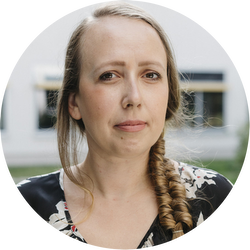 Dr. Eteri Svanidze, research group leader at the Max Planck Institute for Chemical Physics of Solids in Dresden, was appointed TUD Young Investigator. TU Dresden awards this status to outstanding scientists to strengthen their position within the faculty. TUD Young Investigators are allowed to review doctoral theses and participate in various activities within the faculty, including teaching.
Dr. Eteri Svanidze, research group leader at the Max Planck Institute for Chemical Physics of Solids in Dresden, was appointed TUD Young Investigator. TU Dresden awards this status to outstanding scientists to strengthen their position within the faculty. TUD Young Investigators are allowed to review doctoral theses and participate in various activities within the faculty, including teaching.
Dr. Svanidze has been head of the REALM research group at the Max Planck Institute for Chemical Physics of Solids in Dresden since July of 2019. The research group works on solid-state materials containing lanthanides and actinides, showing exotic properties such as unconventional superconductivity and complex magnetic orders. This work provides insights into the interplay of chemical and physical properties of these peculiar systems, pushing us closer to unveiling their application potential.
Confirmed invited speakers include:
George Sawatzky (University of British Columbia, Canada)
Markus Koenig (MPI CPfS, Germany)
Sven Friedemann (University of Bristol, UK)
Uri Vool (MPI CPfS, Germany)
Gianni Profeta (L’Aquila University, Italy)
Petr Dolezal (Charles University, Czechia)
Evgenia Tereshina-Chitrova (Institute of Physics of the Czech Academy of Sciences, Czechia)
Ali Arda Aydin Koç (University, Turkey)
Sofer Zdenek UCT (Prague, Czech Republic)
Libor Smejkal (Max Planck Institute, Germany)
Jan Priessnitz (Max Planck Institute, Germany)
Linda Ye (California Institute of Technology, USA)
Ivan Soldatov (IFW Dresden, Germany)
Abstract IDs:
TBA
The Spintronic Revolution in Neuromorphic Computing
The next frontier of computing demands devices and architectures that break free from the constraints of classical CMOS logic and the von Neumann bottleneck. Spintronics—leveraging the electron’s spin degree of freedom—offers a path to realize compact, low-power, nonvolatile, and adaptive neuromorphic hardware. This session will bring together leading researchers who are pioneering the marriage of spin-based devices with brain-inspired circuits and systems. We aim to cover the latest progress in spintronic synapses, spiking and oscillatory neurons, spin-wave and magnonic networks, hybrid CMOS-spintronic integration, and the architecture-level implications for large-scale neuromorphic systems. The session seeks to foster discussion of both fundamental physics and system-level challenges, inviting contributions from materials, device, circuit, algorithm, and architecture perspectives.
Session Topics Include (but not limited to):
- TBA
To register your abstract for this session, please select “CS-76 The Spintronic Revolution in Neuromorphic Computing” as one of the “Preferred Topics” during the abstract submission process.
Session Organizer/Moderator
Özhan Özatay

Prof. Dr. Özhan Özatay is a Professor of Physics at Boğaziçi University, Istanbul, where he leads research in nanomagnetism and spintronics. His work focuses on spin-torque phenomena, magnetization dynamics, and nanoscale magnetic memory architectures. He heads the Boğaziçi University Spintronics (BUSPIN) Group, which explores magnetic textures such as vortices, domain walls, and skyrmions, and their potential applications in spin-based oscillators and neuromorphic computing devices.
Prof. Özatay was a Fulbright Visiting Scholar at Argonne National Laboratory (USA) and has been principal investigator for several TÜBİTAK-funded projects on spintronic nano-oscillators and antiferromagnetic thin films. His publications in journals such as Physical Review Applied and Applied Physics Letters contribute to advancing energy-efficient spin-based information technologies.
For more information (Lab’s website):
https://buspin.bogazici.edu.tr/
Confirmed invited speakers include:
Andrew Kent (New York University, USA)(Keynote)
Kerem Çamsarı (University of California, Santa Barbara,USA)
Pedram Khalili (Northwestern University, USA)
Axel Hoffmann (University of Illinois Urbana-Champaign, USA)
Yan Zhou (The Chinese University of Hong Kong, Shenzhen, China)
Abstract IDs:
TBA
Current Progress of Iron-Based Superconductors: Fundamental and Applied research
The discovery of iron-based superconductors occurred in 2008, leading to the identification of numerous compounds associated with this category of high-temperature superconductors. Reports indicate a high transition temperature (Tc) of up to 58 K, an upper critical field (Hc2) value reaching 100 T, and a critical current density ranging from 107 to 108 A/cm2. The different types of hole and electron doping present a fascinating and intricate phase diagram that is essential for comprehending the fundamental physical mechanisms at play. The observed properties indicate that these high Tc materials exhibit an unexpected complexity in their physics. Conversely, various characteristics render FBS highly appealing for practical applications and potential alternative materials in high-field superconducting magnets, such as those used in particle physics or fusion. Additionally, FBS demonstrates certain potential benefits compared to the more advanced high-Tc cuprate superconductors, particularly in that grain boundaries (GBs) are less harmful to current flow than in the cuprates (REBCO). Furthermore, FBS conductors have the potential to address several key limitations and tackle current challenges associated with HTS conductors in high field magnets. These include issues like AC losses, magnetic hysteresis, low quench propagation velocity, high stored energy density in coils, sensitivity to conductor stress/strain, and degradation. At present, considerable attention is directed towards improving the performance and tackling the various technological challenges associated with established HTS materials.
This session will focus on the current advancements in FBS, particularly in relation to both fundamental and applied research efforts. A brief comparison of the ongoing studies conducted by various groups will significantly improve our understanding of the developmental issues discussed during this session.
Session Topics Include (but not limited to):
- Growth process of IBS at ambient and applied pressure: Polycrystalline, single crystal, and thin films
- Current progress and exciting research results of IBS
- Flux pinning, grain boundaries, and critical current properties in extreme conditions with pressure and strain
- Fabrication of bulks, wires, and tapes under ambient and high-pressure conditions
- Fabrication of bulk and investigation of the trapped magnetic field
To register your abstract for this session, please select “CS-4 Current Progress of Iron-Based Superconductors: Fundamental and Applied research” as one of the “Preferred Topics” during the abstract submission process.
Session Organizer/Moderator
Shiv Singh
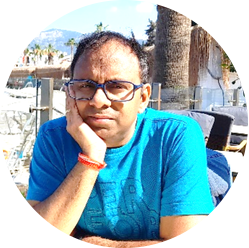 Shiv Singh is working as an institute professor (Associate Professor) at the Institute of High-Pressure Physics (IHPP) (UNIPRESS) Warsaw, Poland. He earned his Ph.D. in Physics from Jawaharlal Nehru University (JNU) in New Delhi, India, in 2012. Before joining UNIPRESS, he served as a research staff member in the Department of Physics at Oxford University, Oxford, UK, from 2017 to 2019. Earlier in his career, Prof. Singh was a JSPS (Japan Society for the Promotion of Science) Fellow at the University of Tokyo, Japan; a DAAD (German Academic Exchange Service) Fellow at the Leibniz Institute for Solid State and Materials Research (IFW) in Dresden, Germany; and an institute fellow at the Muroran Institute of Technology Japan. His research focuses on the growth processes, physical and magnetic characterization of iron-based superconductors under both ambient and high-pressure conditions. He is also interested in the fabrication of superconducting wires and tapes for magnet applications. More details about his research activities can be found here: https://orcid.org/0000-0001-5769-1787
Shiv Singh is working as an institute professor (Associate Professor) at the Institute of High-Pressure Physics (IHPP) (UNIPRESS) Warsaw, Poland. He earned his Ph.D. in Physics from Jawaharlal Nehru University (JNU) in New Delhi, India, in 2012. Before joining UNIPRESS, he served as a research staff member in the Department of Physics at Oxford University, Oxford, UK, from 2017 to 2019. Earlier in his career, Prof. Singh was a JSPS (Japan Society for the Promotion of Science) Fellow at the University of Tokyo, Japan; a DAAD (German Academic Exchange Service) Fellow at the Leibniz Institute for Solid State and Materials Research (IFW) in Dresden, Germany; and an institute fellow at the Muroran Institute of Technology Japan. His research focuses on the growth processes, physical and magnetic characterization of iron-based superconductors under both ambient and high-pressure conditions. He is also interested in the fabrication of superconducting wires and tapes for magnet applications. More details about his research activities can be found here: https://orcid.org/0000-0001-5769-1787
Confirmed invited speakers include:
Xianping Zhang (Chinese Academy of Sciences, China)
Omar Chmaissem (Northern Illinois University, USA)
Pascal Reiss (Max Planck Institute for Solid State Research, Germany)
Abstract IDs:
TBA
Molecular Spin Qubits and Molecular Spintronics Based on Molecular Magnets
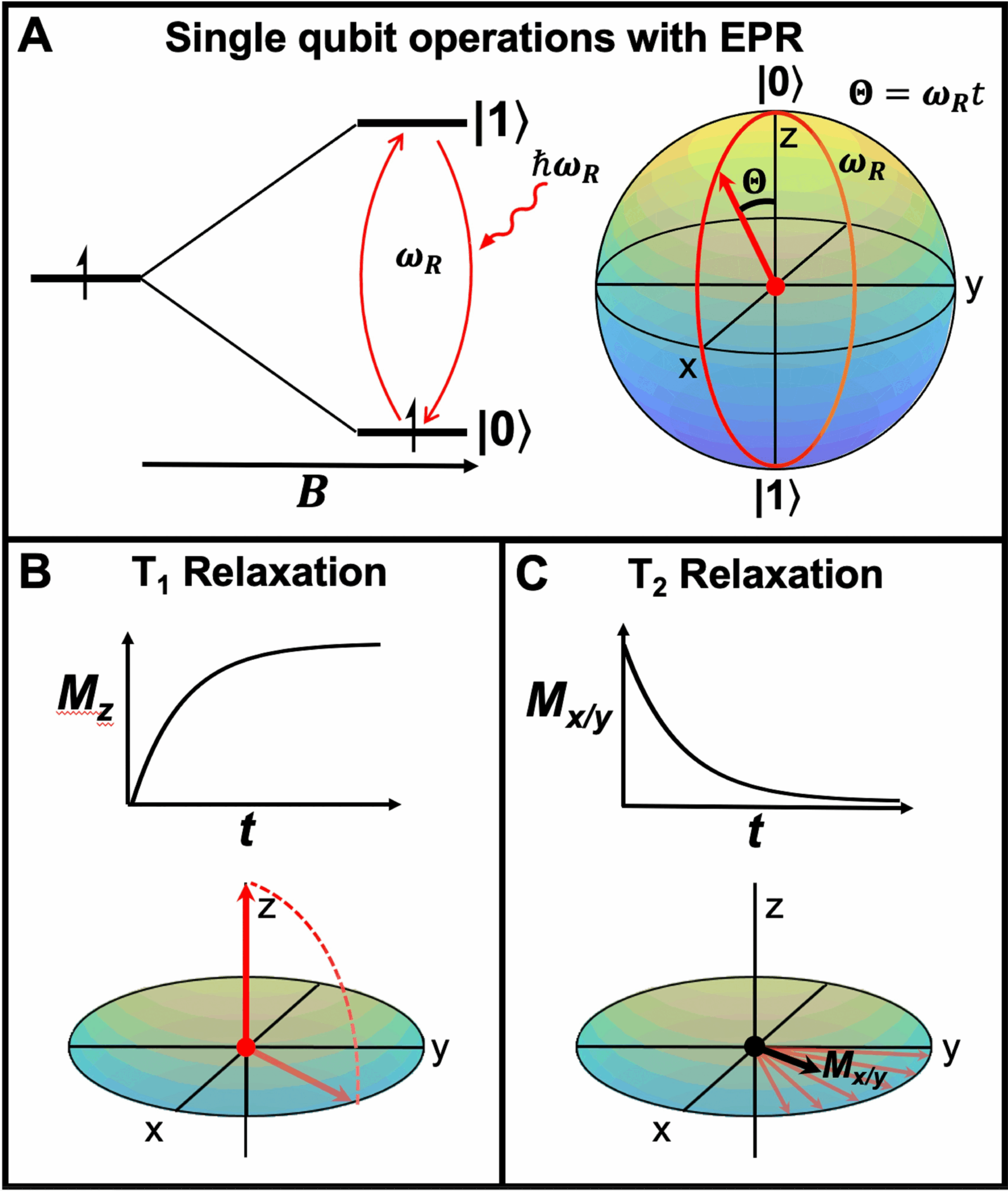 Classical bits are composed of 0 and 1, whereas quantum bits (Qubits) are composed of the superposition of 0 and 1 (ψ = a|0> + b|1>). Qubits are very promising for quantum computers. So far, several qubits have been realized. More recently, molecular spin qubits have become the candidates of next-generation qubits because of (1) spin phase control by pulse ESR, (2) high spin-polarization of electron spin, and (3) high molecular designability. However, we must lengthen both T1 and T2, and realize room temperature performance with a long coherence of the molecular spin qubits for real applications.
Classical bits are composed of 0 and 1, whereas quantum bits (Qubits) are composed of the superposition of 0 and 1 (ψ = a|0> + b|1>). Qubits are very promising for quantum computers. So far, several qubits have been realized. More recently, molecular spin qubits have become the candidates of next-generation qubits because of (1) spin phase control by pulse ESR, (2) high spin-polarization of electron spin, and (3) high molecular designability. However, we must lengthen both T1 and T2, and realize room temperature performance with a long coherence of the molecular spin qubits for real applications.
On the other hand, spintronics, based on the freedoms of charge and spin of electrons, is a key technology in the 21st century. Magnetic random-access memory (MRAM), which uses giant magnetoresistance (GMR) has several advantages over electronics. Although conventional magnets are typically used, we must use nano-size magnets, such as single-molecule magnets (SMMs), to overcome “Moore`s Limitation”. For future of SMM research, we must focus on SMMs with new electronic and crystal structures with new functionalities, and the actual applications for high-density memory devices.
Session Topics Include (but not limited to):
Molecular Spin Qubits
Quantum Computer
Molecular Spintronics
Molecule-Based Magnets
Single-Molecule Magnets
High-Density Memory Devices
Giant Magnetoresistance
Tunneling Magnetoresistance
Spin Crossover and Spin-Transition Compounds
Others
To register your abstract for this session, please select “CS-45 Molecular Spin Qubits and Molecular Spintronics Based on Molecular Magnets” as one of the “Preferred Topics” during the abstract submission process.
Session Organizer/Moderator
Masahiro Yamashita, Shinya Hayami
 Masahiro Yamashita received PhD in 1982 from Kyushu University. After his graduation, he was appointed as Assistant Professor at Kyushu University in 1983. In 1989, he was appointed as Associate Professor at Nagoya University, and he was promoted to full Professor at the same university in 1998. He was a full Professor at Tokyo Metropolitan University from 2000 to 2004. Then he moved to Tohoku University as a full Professor. He is now an Emeritus Professor of Tohoku University. He has been honored with the Inoue Scientific Award (2002), the Chemical Society of Japan Award for Creative Work (2005), the Award of Japan Society of Coordination Chemistry (2014), the Mukai Award (2018), and the Chemical Society of Japan Award for 2019.
Masahiro Yamashita received PhD in 1982 from Kyushu University. After his graduation, he was appointed as Assistant Professor at Kyushu University in 1983. In 1989, he was appointed as Associate Professor at Nagoya University, and he was promoted to full Professor at the same university in 1998. He was a full Professor at Tokyo Metropolitan University from 2000 to 2004. Then he moved to Tohoku University as a full Professor. He is now an Emeritus Professor of Tohoku University. He has been honored with the Inoue Scientific Award (2002), the Chemical Society of Japan Award for Creative Work (2005), the Award of Japan Society of Coordination Chemistry (2014), the Mukai Award (2018), and the Chemical Society of Japan Award for 2019.
 Shinya Hayami is a professor of inorganic chemistry in Kumamoto University (Japan). He received his Ph.D. degree in 1997 from Kyushu University. Following two post-doctoral stints in Institute for Molecular Science (IMS), Apr. 1998–Mar. 1999 and Kanagawa Academy of Science and Technology (KAST), Apr. 1999–Sep. 2000. He joined Kyushu University as an Assistant Professor in Oct. 2000 and moved to Hiroshima University as an Associate Professor in Jan. 2007, and then to Kumamoto University as a Professor in Apr. 2009. His research interests include the study of spin crossover and LIESST compounds, advanced materials, and graphene hybrids.
Shinya Hayami is a professor of inorganic chemistry in Kumamoto University (Japan). He received his Ph.D. degree in 1997 from Kyushu University. Following two post-doctoral stints in Institute for Molecular Science (IMS), Apr. 1998–Mar. 1999 and Kanagawa Academy of Science and Technology (KAST), Apr. 1999–Sep. 2000. He joined Kyushu University as an Assistant Professor in Oct. 2000 and moved to Hiroshima University as an Associate Professor in Jan. 2007, and then to Kumamoto University as a Professor in Apr. 2009. His research interests include the study of spin crossover and LIESST compounds, advanced materials, and graphene hybrids.
Confirmed invited speakers include:
Masahiro Yamashita Tohoku (University, Japan)
Shinya Hayami (Kumamoto University, Japan)
Valentin Alek Dediu (CNR-ISMN Bologna, Italy)
Guillem Aromí (Laboratory of Molecular Design, University of Barcelona, Spain)
Joris van Slageren (University of Stuttgart, Germany)
Abhishek Mondal (Indian Institute of Science, India)
Marco Affronte (Universita’ di Modena e Reggio, Italy)
Bin Hu (University of Tennessee, USA)
Leoni Barrios (Universitat de Barcelona, Spain)
Toyo Kazu Yamada (Chiba University, Japan)
Fernando Luis (CSIC-Universidad de Zaragoza, Spain)
Eufemio Moreno Pineda (Universidad De Panama, Panama)
Andrea Cornia (University of Modena and Reggio Emilia, Italy)
ShangDa Jiang (South China University of Technology from China, China)
Abstract IDs:
TBA
Emerging Phenomena and Applications in Molecular and Metal-Organic Magnetic Materials
 Molecular and metal-organic magnetic materials have attracted growing attention due to their potential in advanced technologies, particularly in the emerging field of quantum science and technology. These materials combine the intrinsic advantages of bottom-up synthesis—structural tunability, nanoscale dimensions, reproducibility, and chemical versatility—with magnetic functionalities that can be tailored from isolated molecules to extended frameworks. Current research spans all dimensionalities, from zero-dimensional molecular clusters to one-, two-, and three-dimensional metal–organic networks, providing opportunities to explore intriguing physical phenomena such as slow magnetic relaxation, quantum tunneling, spin coherence, and light–magnetism interactions, with implications for quantum computing.
Molecular and metal-organic magnetic materials have attracted growing attention due to their potential in advanced technologies, particularly in the emerging field of quantum science and technology. These materials combine the intrinsic advantages of bottom-up synthesis—structural tunability, nanoscale dimensions, reproducibility, and chemical versatility—with magnetic functionalities that can be tailored from isolated molecules to extended frameworks. Current research spans all dimensionalities, from zero-dimensional molecular clusters to one-, two-, and three-dimensional metal–organic networks, providing opportunities to explore intriguing physical phenomena such as slow magnetic relaxation, quantum tunneling, spin coherence, and light–magnetism interactions, with implications for quantum computing.
Particular focus is given to multifunctional and switchable systems, where external stimuli—such as light, temperature, pressure, or electric and magnetic fields—can reversibly modulate magnetic, electronic, or optical properties. These advances open pathways toward applications in quantum technologies, including molecular qubits for quantum computing, spin-based information processing, quantum sensors, and hybrid opto-magnetic devices. The session aims to bring together contributions on novel molecular and metal–organic magnetic materials, highlighting both fundamental discoveries and their potential technological impact.
Session Topics Include (but not limited to):
• Molecular Magnetism
• Low dimensional magnetism
• Novel functional magnetic materials
• Molecular Spintronics
• Molecular refrigeration
• Quantum Technologies
• Magnetic Metal-Organic Frameworks
• Organic magnets
• Organic superconductors
• Carbon Based Superconductivity
• Carbon based magnetism and grapheme
To register your abstract for this session, please select “CS-34 Emerging Phenomena and Applications in Molecular and Metal-Organic Magnetic Materials” as one of the “Preferred Topics” during the abstract submission process.
Session Organizer/Moderator
Ana Arauzo and Elena Bartolomé
 Ana Arauzo is associate professor in the Condensed Matter Physics Department at the University of Zaragoza and researcher at the Institute of Nanoscience and Materials of Aragon. She obtained her PhD in Physics in 1997 from the University of Zaragoza. Her research focuses on the thermomagnetic and thermophysical properties of materials, particularly in the study of multifunctional molecular magnets for applications in molecular spintronics and information technology. She is also involved in investigating the thermophysics of new materials for energy and environmental applications. She has expertise in magnetism, thermodynamic properties, EPR and optical spectroscopies and scientific instrumentation. She is the scientific director of the Physical Measurements Service (SMF) research laboratories in the University of Zaragoza.
Ana Arauzo is associate professor in the Condensed Matter Physics Department at the University of Zaragoza and researcher at the Institute of Nanoscience and Materials of Aragon. She obtained her PhD in Physics in 1997 from the University of Zaragoza. Her research focuses on the thermomagnetic and thermophysical properties of materials, particularly in the study of multifunctional molecular magnets for applications in molecular spintronics and information technology. She is also involved in investigating the thermophysics of new materials for energy and environmental applications. She has expertise in magnetism, thermodynamic properties, EPR and optical spectroscopies and scientific instrumentation. She is the scientific director of the Physical Measurements Service (SMF) research laboratories in the University of Zaragoza.
Before her current position, she was the laboratory manager of the SMF from 2004 to 2022, where she combined technological and managerial responsibilities with research and teaching activities. From 2016 to 2022, she held the position of Adjunct Professor and teaching collaborator within the Department of Condensed Matter Physics at the University of Zaragoza. Her professional track also includes research experience in the private sector. From 2001 to 2004, she worked for the international high-tech company Philips Semiconductors Zurich in Switzerland. Prior to that, she was a Senior Fellowship at CERN (European Laboratory for Particle Physics) in Geneva from 1998 to 2000, following a postdoctoral stay at the University of Montpellier II in France from 1997 to 1998.
The main original contributions made in the last 10 years are framed within two main research lines: materials with new magnetic phases and molecular magnets. In the realm of new magnetic phases, she has conducted significant studies on frustration, quantum entanglement, disorder, and spin-glass-type behaviors with ludwigite and warwickite-type oxyborates. Her work has resulted in numerous high-relevance publications, shedding light on the spin-glass state, anisotropic effects, macroscopic observation of quantum entanglement, and rationalizing properties based on structural characteristics.
In the field of molecular magnets, her studies concentrated on magnetic relaxation mechanisms and quantum tunnelling in molecules of a single ion (SIM) or several (SMM). She explored their correlation with magnetic order, both short and long range, resulting in numerous scientific publications. One important outcome of these studies is the publication of a chapter of the prestigious series ‘Handbook of Magnetic Materials’ in 2017. Very remarkable are the pioneering studies of the Nd(III), very cited in the field, and the works in luminescent molecular magnets at the forefront of current lines of research in molecular magnetism.
ORCID: 0000-0002-5999-341X
SCOPUS Author ID: 6507972992
WoS Researcher ID: K-8679-2014
Email: aarauzo@unizar.es
https://rasmia.unizar.es/rushmore_teams/ana-arauzo/
 Elena Bartolomé is a Tenured Scientist at the Institute of Materials Science of Barcelona (ICMAB), CSIC, within the Department of Smart Molecular Inorganic and Hybrid Materials. She earned her PhD in Applied Physics in 2002 from the University of Twente (The Netherlands) and University of Zaragoza (Spain). Following her doctoral studies, she moved to Barcelona, where she completed two postdoctoral fellowships between 2002 and 2006: an I3P Fellowship with the Superconductivity Group at ICMAB and a Juan de la Cierva Fellowship with the Electromagnetism Group at the Universitat Autònoma de Barcelona (UAB). From 2006 to 2023, she held a Full Professor position at the EUSS School of Engineering, associated to UAB, where she was Head of the EUSS Research Group. She combined teaching and management with scientific research, while also advancing active and inquiry-based learning methodologies to improve university education.
Elena Bartolomé is a Tenured Scientist at the Institute of Materials Science of Barcelona (ICMAB), CSIC, within the Department of Smart Molecular Inorganic and Hybrid Materials. She earned her PhD in Applied Physics in 2002 from the University of Twente (The Netherlands) and University of Zaragoza (Spain). Following her doctoral studies, she moved to Barcelona, where she completed two postdoctoral fellowships between 2002 and 2006: an I3P Fellowship with the Superconductivity Group at ICMAB and a Juan de la Cierva Fellowship with the Electromagnetism Group at the Universitat Autònoma de Barcelona (UAB). From 2006 to 2023, she held a Full Professor position at the EUSS School of Engineering, associated to UAB, where she was Head of the EUSS Research Group. She combined teaching and management with scientific research, while also advancing active and inquiry-based learning methodologies to improve university education.
Her research centers on the magneto-thermal and optical properties of multifunctional molecular materials, such as Single-Molecule Magnets (SMMs) and magnetic Metal-Organic Frameworks (MOFs), with application in information storage, quantum computing, magnetocaloric refrigeration, and luminescence, among others. She has extensive expertise in magnetic and specific heat characterization of materials down to mK, luminescence, and synchrotron radiation spectroscopies.
Over the past 25 years, her contributions have advanced the understanding of magnetic properties of materials at cryogenic temperatures. In the field of Applied Superconductivity, she has conducted significant studies on the critical state of YBCO materials with various types of micro- and nanodefects, and the vortex pinning of YBCO thin-films and nanocomposites prepared by the chemical route for power applications. She has also contributed to the development of ultra-sensitive SQUIDs for electrical quantum metrology applications.
Since 2012, her research has shifted to Molecular Magnetism, with a focus on magnetic relaxation and quantum tunneling in lanthanide and transition-metal compounds. Her studies encompass materials ranging from 0D single-ion and molecular SMMs to 1D polymeric nanomagnets, and 2D and 3D MOFs. Very remarkable are the recent studies of multifunctional multi-lanthanide MOFs through element-selective XMCD technique. These efforts have resulted in over 145 publications and numerous seminars and congress contributions.
ORCID: 0000-0001-5108-0977
SCOPUS Author ID: 55886522900
WoS Researcher ID: K-9014-2017
Email: ebartolome@icmab.es
https://rasmia.unizar.es/rushmore_teams/elena-bartolome/
Confirmed invited speakers include:
Elena Bartolomé (Materials Science Institute of Barcelona, Spain)
Ana Arauzo (University of Zaragoza and Aragón Nanoscience and Materials Institute, Spain)
Aitor Mugarza (ICN2: Catalan Institute of Nanoscience and Nanotechnology, Spain)
Annie Powell (KIT: Karlsruhe Institue of Technology, Germany)
Diego Venegas (University of Santiago de Chile, Chile)
Lidia Armelao (University of Padova, Italy)
Li-Min Zheng (Nanjing University, China)
Nuria Crivillers (ICMAB: Institute of Materials Science of Barcelona, Spain)
Andrei Rogalev (ESRF: European Synchrotron Radiation Facility, France)
Tatiana Guidi (University of Camerino, Italy)
Jeremy Rawson (University of Windsor, Canada)
Dominique Luneau (University of Lyon, France)
Abstract IDs:
TBA
Metastability, Disorder, and Hidden Orders in 2D Quantum Materials
Technologically relevant complex behaviors in systems with reduced dimensionality are typically associated with disorder and frustration due to competing interactions, often leading to various subtle forms of intrinsic short-range order as well as external stimuli-induced hidden metastable states. These behaviors span a wide range of theoretical and experimental challenges in systems that host a rich variety of exotic phases, unusual quasiparticle excitations, and non-equilibrium dynamics, where fundamental issues remain elusive. This session aims to provide a forum for these fascinating phenomena, highlighting diverse characterization methods and novel theoretical approaches, and to give an overview of recent observations and advances. It will discuss open questions whose understanding may be essential for propelling quantum materials science and unlocking the potential for quantum technologies.
Session Topics Include (but not limited to):
•Impact of disorder on competing orders in electronic systems
•Geometric frustration and short-range order driven phenomena
•Glassy dynamics vs. pre-thermal regimes of correlated electrons
•Hidden and metastable states and their manipulation
To register your abstract for this session, please select “CS-17 From disorder to metastability and hidden phases in 2D quantum materials” as one of the “Preferred Topics” during the abstract submission process.
Session Organizer/Moderator
Emil Bozin, Nenad Lazarević
 Dr. Emil Bozin is a senior physicist and a newly appointed European Research Area Chair at the Center for Solid State Physics and New Materials at the Institute of Physics in Belgrade, Serbia, where he will establish a Laboratory for Structural Characterization of Quantum Matterials. Previously he led the total scattering based advanced Fourier analysis and pair distribution function (PDF) research and associated technique development, including ultrafast nanoscale structural characterization, within the X-ray scasttering group at the Condensed Matter Physics and Materials Science Division of Brookhaven National Laboratory, Upton, New York. His expertise encompasses x-ray diffraction, neutron diffraction, PDF analysis and 3D Fourier mapping. His research primarily focuses on hierarchical atomic structure and nanoscale fluctuations characterization of precursor, emergent, and hidden states in quantum materials exhibiting emergent phenomena. His research interests include phase transitions, charge ordering, orbital ordering, unconventional superconductivity, phase competition and phase separation, and high performance thermoelectricity, among others.
Dr. Emil Bozin is a senior physicist and a newly appointed European Research Area Chair at the Center for Solid State Physics and New Materials at the Institute of Physics in Belgrade, Serbia, where he will establish a Laboratory for Structural Characterization of Quantum Matterials. Previously he led the total scattering based advanced Fourier analysis and pair distribution function (PDF) research and associated technique development, including ultrafast nanoscale structural characterization, within the X-ray scasttering group at the Condensed Matter Physics and Materials Science Division of Brookhaven National Laboratory, Upton, New York. His expertise encompasses x-ray diffraction, neutron diffraction, PDF analysis and 3D Fourier mapping. His research primarily focuses on hierarchical atomic structure and nanoscale fluctuations characterization of precursor, emergent, and hidden states in quantum materials exhibiting emergent phenomena. His research interests include phase transitions, charge ordering, orbital ordering, unconventional superconductivity, phase competition and phase separation, and high performance thermoelectricity, among others.
 Dr. Nenad Lazarević is the Head of the Center for Solid State Physics and New Materials at the Institute of Physics in Belgrade, where he also leads the Laboratory for Quantum Materials. His research primarily focuses on high-temperature superconductors and quantum 2D materials, along with expertise in various nanomaterials and their applications. Dr. Lazarević specializes in using electronic Raman scattering to investigate lattice, spin, and charge excitations, with a focus on how these phenomena are influenced by temperature and uniaxial strain.
Dr. Nenad Lazarević is the Head of the Center for Solid State Physics and New Materials at the Institute of Physics in Belgrade, where he also leads the Laboratory for Quantum Materials. His research primarily focuses on high-temperature superconductors and quantum 2D materials, along with expertise in various nanomaterials and their applications. Dr. Lazarević specializes in using electronic Raman scattering to investigate lattice, spin, and charge excitations, with a focus on how these phenomena are influenced by temperature and uniaxial strain.
Confirmed invited speakers include:
Emil Bozin (Brookhaven National Laboratory, USA)
Nenad Lazarevic (Institute of Physics Belgrade, Serbia)
Dragana Popovic (National High Magnetic Field Laboratory, Tallahassee, FL, USA)
Vladimir (Dobrosavljevic Florida State University, Tallahassee, FL, USA)
Qiang Li (Brookhaven National Laboratory, NY, USA)
Igor Vaskivskyi (Department of Complex Matter, Jožef Stefan Institute, Ljubljana, Slovenia)
Mazhar N. Ali (Kavli Institute of Nanoscience, TU Delft, Netherlands)
Gheorghe L. Pascut (Stefan cel Mare University, Suceava, Romania)
Bojana Višić (University of Belgrade, Serbia)
Jelena Pešić (University of Belgrade, Serbia)
Abstract IDs:
TBA
Superconducting Base Elements for Spintronics and Neural Networks

The urgent need for high-performance computing with minimal energy dissipation finds a promising solution in superconducting digital technology (SDT), which leverages Josephson junctions to achieve energy consumption as low as 10⁻¹⁹ Joule—up to seven orders of magnitude more efficient than semiconductor analogs. This radical efficiency aligns with the goals of spintronics, which utilizes electron spin for advanced memory and quantum computing. By integrating superconductors with ferromagnets (SF) in superconducting spintronics, researchers aim to overcome the heat issues of conventional high-resistance spintronic devices. The fundamental science underpinning this technology is the unique proximity effect in SF structures, where two competing orders coexist, leading to nonuniform states and proximity-induced superconducting triplet correlations. This session brings together leading experts to present new results on these SF interactions, fostering the development of a fast and ultra-low-energy superconducting spintronic technology.
Session Topics Include (but not limited to):
Proximity effects in SF structures
Josephson pi-junctions
Spin-triplet supercurrents
Memory devices
Superconducting neural networks
Superconducting non-von Neumann computers
Quantum and spintronic circuits
Memristors and other the base elements of ANN
To register your abstract for this session, please select “CS-47 Superconducting Base Elements for Artificial Neural Networks and Quantum Circuits” as one of the “Preferred Topics” during the abstract submission process.
Session Organizer/Moderator
Anatolie Sidorenko, Alexander Golubov
 Prof. Dr. Anatolie Sidorenko specializes in spintronics and functional superconducting nanostructures. He has worked as an invited professor at the University of Augsburg and the Technical University of Karlsruhe, served for 12 years as Director of the Institute of Electronic Engineering and Nanotechnologies of the Academy of Sciences of Moldova, and is currently a professor at the Technical University of Moldova. He is the author of over 500 scientific articles, review papers, and book chapters, as well as 60 patents. Additionally, he is the editor of five books published by Springer, the editor of four thematic series on “Functional Nanostructures” for the Beilstein Journal of Nanotechnology, an associate editor of the Journal of Mesoscience & Nanotechnology, a full member of the Moldovan Academy of Sciences, and a member of the Deutsche Physikalische Gesellschaft (DPG)
Prof. Dr. Anatolie Sidorenko specializes in spintronics and functional superconducting nanostructures. He has worked as an invited professor at the University of Augsburg and the Technical University of Karlsruhe, served for 12 years as Director of the Institute of Electronic Engineering and Nanotechnologies of the Academy of Sciences of Moldova, and is currently a professor at the Technical University of Moldova. He is the author of over 500 scientific articles, review papers, and book chapters, as well as 60 patents. Additionally, he is the editor of five books published by Springer, the editor of four thematic series on “Functional Nanostructures” for the Beilstein Journal of Nanotechnology, an associate editor of the Journal of Mesoscience & Nanotechnology, a full member of the Moldovan Academy of Sciences, and a member of the Deutsche Physikalische Gesellschaft (DPG)
 Prof. Dr. Alexander A. Golubov graduated in 1983 from the Department of Physical Chemistry at the Moscow Institute of Steel and Alloys (now the National University of Science and Technology MISIS). He obtained his Ph.D. in 1987 and his Doctor of Science (habilitation) degree in 1997 from the Institute of Solid State Physics, Russian Academy of Sciences, Chernogolovka. From 1997 to 2024, he was a faculty member at the University of Twente, the Netherlands. He is currently a Professor and Head of Laboratory at the Moscow Institute of Physics and Technology, Russia. His research interests include the theory of electronic transport in superconductors, superconducting spintronics, and the physics of unconventional and topological superconductivity. Elected a Fellow of the American Physical Society in 2021, he has authored over 400 publications in international journals and holds an h-index of 68.
Prof. Dr. Alexander A. Golubov graduated in 1983 from the Department of Physical Chemistry at the Moscow Institute of Steel and Alloys (now the National University of Science and Technology MISIS). He obtained his Ph.D. in 1987 and his Doctor of Science (habilitation) degree in 1997 from the Institute of Solid State Physics, Russian Academy of Sciences, Chernogolovka. From 1997 to 2024, he was a faculty member at the University of Twente, the Netherlands. He is currently a Professor and Head of Laboratory at the Moscow Institute of Physics and Technology, Russia. His research interests include the theory of electronic transport in superconductors, superconducting spintronics, and the physics of unconventional and topological superconductivity. Elected a Fellow of the American Physical Society in 2021, he has authored over 400 publications in international journals and holds an h-index of 68.
Confirmed invited speakers include:
Valery Ryazanov (Moscow Institute of Physics and Technology, Russia)
Alexander Buzdin (University of Bordeaux, France)
Andrey Vasenko (HSE Tikhonov Moscow Institute of Electronics and Mathematics, Russia)
Tairzhan Karabassov (Higher School of Economics, Moscow)
Igor Lukyanchuk (LPMC, University of Picardie Jules Verne, France)
Valery Koshelets (Radioengineering and Electronics RAS, Russia)
Carla Cirillo (University of Salerno, Italy)
Vladimir Krasnov (Stockholm University, Sweden)
Carmine Attanasio (University of Salerno, Italy)
Oleg Mukhanov (SEEQC, USA)
Nikolay Klenov (Moscow State University, Russia)
Igor Soloviev (Moscow State University, Russia)
Sergey Bakurskiy (Moscow State University, Russia)
Vadim Geshkenbein (Institute for Theoretical Physics, ETH Zurich, Switzerland)
Irina Bobkova (Moscow Institute of Physics and Technology, Russia)
Alexander Bobkov (Moscow Institute of Physics and Technology, Russia)
Jan Aarts (Leiden University/Huygens-Kamerlingh Onnes Laboratory, Netherlands)
Norman O. Birge (Michigan State University, USA)
Sebastian Bergeret (Centro de Fisica de Materiales (CFM-MPC), Spain)
Kaveh Lahabi (Leiden University, Netherlands)
Yury Shukrinov (Bogoliubov Laboratory of Theoretical Physics, Joint Institute for Nuclear Research, Russia)
Abstract IDs:
TBA
Curvilinear and 3D Nanoarchitectures for Superconductivity and Magnetism
 Physical properties of condensed and soft matter systems are determined by the interplay between the physical order parameter, geometry and topology. Specifically to condensed matter, spin textures, static and dynamic responses become sensitive to bends and twists in physical space. In this respect, curvature effects emerged as a novel tool in various areas of physics to tailor electromagnetic properties and responses relying on geometrical deformations.
Physical properties of condensed and soft matter systems are determined by the interplay between the physical order parameter, geometry and topology. Specifically to condensed matter, spin textures, static and dynamic responses become sensitive to bends and twists in physical space. In this respect, curvature effects emerged as a novel tool in various areas of physics to tailor electromagnetic properties and responses relying on geometrical deformations.
The influence of a curvilinear geometry on the electromagnetic and electron transport properties of matter is a hot topic in condensed matter and field theories. Until recently, the impact of a curvature on electronic and magnetic properties of solids was mainly studied theoretically. The remarkable development in nanotechnology, e.g. preparation of high-quality extended thin films and nanowires/tubes and nanoparticles as well as the potential to arbitrarily reshape those architectures after their fabrication, has enabled first experimental insights into the fundamental properties of 3D shaped superconducting and magnetic architectures.
 This focus session will bring together experts in superconductivity and magnetism, where the geometric shape of (nano)objects plays a fundamental role in governing physical responses to external stimulation including electric currents, electric and magnetic fields. Both theoretical and experimental advances in the field will be covered in the focus session.
This focus session will bring together experts in superconductivity and magnetism, where the geometric shape of (nano)objects plays a fundamental role in governing physical responses to external stimulation including electric currents, electric and magnetic fields. Both theoretical and experimental advances in the field will be covered in the focus session.
Session Topics Include (but not limited to):
•Curvilinear magnetism and superconductivity.
•Fabrication of curvilinear and 3D superconducting and magnetic architectures.
•Characterization of geometrically curved superconducting and magnetic architectures.
•Curvilinear architectures with complex magnetic ordering (ferromagnets, antiferromagnets, altermagnets, 2D magnetic materials).
•Magnetization dynamics in 3D and 2D magnetic architectures.
•Additive manufacturing of advanced superconducting and magnetic materials (e.g., FEBID/FIBID).
•3D nanoarchitectures using van der Waals structures.
•Vortex dynamics in ferromagnet/superconductor 3D heterostructures.
•Hybrid Josephson junctions and nanodevices for quantum hardware.
•Application of AI tools to speed up development of functional 3D architectures.
To register your abstract for this session, please select “CS-11 Curvilinear and 3D Nanoarchitectures for Superconductivity and Magnetism” as one of the “Preferred Topics” during the abstract submission process.
Session Organizer/Moderator
Vladimir Fomin, Denys Makarov, Claire Donnelly
 Vladimir M. Fomin received his Ph.D. from the Moldova State University in 1978 and Dr. habil. from the Academy of Sciences of Moldova in 1990. Since 1991 Professor in Theoretical Physics at the Moldova State University (Chişinău, Republic of Moldova). Since 2009 Research Professor at the Institute for Integrative Nanosciences (IIN), Leibniz Institute for Solid State and Materials Research (IFW) Dresden (Germany). Awards: State Prize of Moldova 1987. Diploma of a Scientific Discovery of the Phenomenon of the Propagation of Spatially-Extended Interface Phonon Polaritons in Composite Superlattices (Academy of Natural Sciences of Russia, 1999). Medal “Academician P. L. Kapitsa” (Academy of Natural Sciences of Russia, 2000). Honorary Member of the Academy of Sciences of Moldova (2007). Scientific interests: theory of strain-induced self-rolled nanoarchitectures, topological effects in quantum rings and curved 3D micro-and nanoarchitectures, phase boundaries and vortex matter in micro-and nanoarchitectures and patterned superconductors, superconducting properties of metallic nanograins, phonons, vibrational excitations and polaronic effects in nanostructures, topological states of light and spin-orbit coupling in microcavities, optical properties of quantum dots, thermoelectric properties of semiconductor nanostructures, surface-induced magnetic anisotropy in mesoscopic systems of dilute magnetic alloys.
Vladimir M. Fomin received his Ph.D. from the Moldova State University in 1978 and Dr. habil. from the Academy of Sciences of Moldova in 1990. Since 1991 Professor in Theoretical Physics at the Moldova State University (Chişinău, Republic of Moldova). Since 2009 Research Professor at the Institute for Integrative Nanosciences (IIN), Leibniz Institute for Solid State and Materials Research (IFW) Dresden (Germany). Awards: State Prize of Moldova 1987. Diploma of a Scientific Discovery of the Phenomenon of the Propagation of Spatially-Extended Interface Phonon Polaritons in Composite Superlattices (Academy of Natural Sciences of Russia, 1999). Medal “Academician P. L. Kapitsa” (Academy of Natural Sciences of Russia, 2000). Honorary Member of the Academy of Sciences of Moldova (2007). Scientific interests: theory of strain-induced self-rolled nanoarchitectures, topological effects in quantum rings and curved 3D micro-and nanoarchitectures, phase boundaries and vortex matter in micro-and nanoarchitectures and patterned superconductors, superconducting properties of metallic nanograins, phonons, vibrational excitations and polaronic effects in nanostructures, topological states of light and spin-orbit coupling in microcavities, optical properties of quantum dots, thermoelectric properties of semiconductor nanostructures, surface-induced magnetic anisotropy in mesoscopic systems of dilute magnetic alloys.
 Denys Makarov received his Master Degree (2005) at the National University of Kyiv in Ukraine, followed by a Ph.D. in physics (2008) from the University of Konstanz in Germany. Currently, he is head of department “Intelligent materials and systems” at the Helmholtz-Zentrum Dresden-Rossendorf and leads the Helmholtz Innovation Lab FlexiSens. With his activities, Denys Makarov made a decisive contribution to the development of the field of curvilinear magnetism and stimulated research on spintronics on flexible, bendable and stretchable surfaces. Mechanically flexible and skin-conformal magnetic field sensors enable new application scenarios for human-machine interfaces, eMobility and medicine. These activities are supported via major national and European projects. Denys Makarov is Senior Member of the IEEE and Fellow of the Young Academy of Europe.
Denys Makarov received his Master Degree (2005) at the National University of Kyiv in Ukraine, followed by a Ph.D. in physics (2008) from the University of Konstanz in Germany. Currently, he is head of department “Intelligent materials and systems” at the Helmholtz-Zentrum Dresden-Rossendorf and leads the Helmholtz Innovation Lab FlexiSens. With his activities, Denys Makarov made a decisive contribution to the development of the field of curvilinear magnetism and stimulated research on spintronics on flexible, bendable and stretchable surfaces. Mechanically flexible and skin-conformal magnetic field sensors enable new application scenarios for human-machine interfaces, eMobility and medicine. These activities are supported via major national and European projects. Denys Makarov is Senior Member of the IEEE and Fellow of the Young Academy of Europe.
 Following her MPhys at the University of Oxford, Claire went to Switzerland to carry out her PhD studies at the Paul Scherrer Institute and ETH Zurich. She was awarded her PhD in 2017 for her work on 3D systems, which was recognised by a number of prizes including the APS Richard Greene Dissertation Award, the Werner Meyer-Ilse Memorial Award, the ETH Medal, and the SPS Award for Computational Physics. After a postdoc at the ETH Zurich, she moved to the University of Cambridge and the Cavendish Laboratory as a Leverhulme Early Career Research Fellow, where she was awarded the L’Oreal For Women In Science Fellowship, and the European Magnetism Association Young Scientist Award. Since September 2021 she is a Lise Meitner Group Leader of Spin3D at the Max Planck Institute for Chemical Physics of Solids in Dresden, Germany.
Following her MPhys at the University of Oxford, Claire went to Switzerland to carry out her PhD studies at the Paul Scherrer Institute and ETH Zurich. She was awarded her PhD in 2017 for her work on 3D systems, which was recognised by a number of prizes including the APS Richard Greene Dissertation Award, the Werner Meyer-Ilse Memorial Award, the ETH Medal, and the SPS Award for Computational Physics. After a postdoc at the ETH Zurich, she moved to the University of Cambridge and the Cavendish Laboratory as a Leverhulme Early Career Research Fellow, where she was awarded the L’Oreal For Women In Science Fellowship, and the European Magnetism Association Young Scientist Award. Since September 2021 she is a Lise Meitner Group Leader of Spin3D at the Max Planck Institute for Chemical Physics of Solids in Dresden, Germany.
Confirmed invited speakers include:
Antonio Badia (Universidad de Zaragoza, Spain)(Keynote)
Oleksandr Dobrovolskiy (Technische Universität Braunschweig, Germany)(Keynote)
Francesco Tafuri (University of Napoli Federico II, Naples, Italy)(Keynote)
Carmine Ortix (University of Salerno, Italy)(Keynote)
Claire Donnelly (Max-Planck-Institute for Chemical Physics of Solids, Germany)(Keynote)
Vladimir Fomin (IFW Dresden, Germany)
Denys Makarov (Helmholtz-Zentrum Dresden-Rossendorf, Germany)
Claas Abert (University of Vienna, Austria)
Filipp Rybakov (Uppsala Universitet, Sweden)
Oleksandr Pylypovskyi (HZDR – Helmholtz-Zentrum Dresden-Rossendorf, Germany)
Thomas Mühl (IFW Dresden, Germany)
Vladislav Kataev (Leibniz Institute of Solid State and Materials Research IFW Dresden, Germany)
Sabri Koraltan (TU Vienna, Austria)
Vagson L. Carvalho-Santos (Universidad Federal de Viçosa, Brazil)
Alexander Edström (KTH Royal Institute of Technology, Sweden)
Alejandro V. Silhanek (Université de Liège, Belgium)
Hans Hug (EMPA, Switzerland)
Xerman de la Fuente Leis (Universidad de Zaragoza, Spain)
Abstract IDs:
TBA
Device Physics of Josephson Junctions and Their Fundamental Technologies
 The Josephson effect is observed when two superconducting electrodes are weakly coupled and a Josephson junction is a natural converter of a d.c. voltage into a high-frequency current. From the prediction of the Josephson effect, tremendous progress has been made in the technology of superconducting electronics. In this session, there will be discussions on the Josephson effect from theoretical aspects up to applications. Many applications of superconductivity in electronics, sensors, and high-frequency devices are based on the Josephson effect.
The Josephson effect is observed when two superconducting electrodes are weakly coupled and a Josephson junction is a natural converter of a d.c. voltage into a high-frequency current. From the prediction of the Josephson effect, tremendous progress has been made in the technology of superconducting electronics. In this session, there will be discussions on the Josephson effect from theoretical aspects up to applications. Many applications of superconductivity in electronics, sensors, and high-frequency devices are based on the Josephson effect.
Session Topics Include (but not limited to):
- Superconducting Quantum Interference Devices (SQUIDs)
- Superconducting Photon and Particle Detectors
- Digital Electronics
- Microwave Applications
- Superconducting Quantum Bits
- Superconducting THz emitters
- Topological superconductor-based Josephson junction
- Proximity and tunneling phenomena in JJ
To register your abstract for this session, please select “CS-12 Device Physics of Josephson Junctions and Their Fundamental Technologies” as one of the “Preferred Topics” during the abstract submission process.
Session Organizer/Moderator
Yılmaz Simsek, Olcay Kızılaslan
 Dr. Yılmaz Şimşek works in the area of Physics-based Materials Science including the design, synthesis, characterization, and understanding of new materials in a single crystal bulk/thin-film form to functionalize them for potential applications in innovative electronic devices.
Dr. Yılmaz Şimşek works in the area of Physics-based Materials Science including the design, synthesis, characterization, and understanding of new materials in a single crystal bulk/thin-film form to functionalize them for potential applications in innovative electronic devices.

Dr. Olcay Kizilaslan has worked on superconductor materials from different points of view, ranging from superconducting single crystal growth to the potential application of superconductivity. His main research area is on the intrinsic Josephson effect and superconducting THz emitters.
Confirmed invited speakers include:
Abstract IDs:
TBA
Novel Functional Magnetic Materials- Basic Approach and Applications
Sessions Topics Include (but not limited to) :
- Functional Magnetic Materials and Applications
- Advances in Nanomagnetism
- Magnetic Meta-materials
- Magnetic Recording, Sensors and Microwave Devices
- Novel Functional Magnetic Materials: Basic Approach and Applications
- Soft and Hard Magnetic Materials
- Boron Based Permanent Magnets & Magnetic Materials for Applications
- Magnet Science and Technology
- Biomedical applications of magnetism and magnetic materials
- Other Aspects of Magnetism and Magnetic Materials
To register your abstract for this session, please select “CS-35 Novel Functional Magnetic Materials- Basic Approach and Applications” as one of the “Preferred Topics” during the abstract submission process.
Session Organizer/Moderator
Arcady Zhukov
Invited speakers include:
Prof. Dr. A.P. Zhukov graduated in 1980 from the Physics Chemistry Department of the Moscow Steel and Alloys Institute (presently the National University of Science and Technology). In 1988 he received a Ph.D. degree from the Institute of Solid State Physics (Chernogolovka) of the Russian Academy of Science, and in 2010 Doctor of Science (habilitation) in Moscow State Lomonosov University. Present employment Ikerbasque Research Professor at the Department of the Polymers and Advanced Materials of the University of Basque Country, Spain. Current fields of interest: amorphous and nanocrystalline ferromagnetic materials, magnetic micro-wires, giant magneto-impedance, giant magnetoresistance, and magnetoelastic sensors. He has published more than 600 referred papers in international journals (total number of citations of A. Zhukov’s papers, updated December 21, 2023: 11265, Citation H Index=58). A. Zhukov is included in the ‘Ranking of the World Scientists: World´s Top 2 % Scientists” by Stanford University, in the Rankings of 175 most relevant researchers in Material Science and of 224 most relevant researchers in Physics residents in Spain (DIH, https://grupodih.info), in the ranking of top Materials Science scientists ranking by www.Research.com, in the list of Most cited authors of J. Magn. Magn. Mater. (https://exaly.com/journal/12443/journal-of-magnetism-and-magnetic-materials/top-authors) and of Sensors and Actuators A: (https://exaly.com/journal/13143/sensors-and-actuators-a-physical/top-authors). A. Zhukov is an Associate Editor of IEEE Magnetic letters and International Journal on Smart Sensing and Intelligent Systems, member of several editorial boards (Crystals, Sensors by MDPI) guest Editor of J. Alloys Compounds (currently of the Special issue Honouring Prof. K.H.J Buschow), J. Magn. Magn. Mater, edited two books: “Novel Functional Magnetic Materials” and “High Performance Soft Magnetic Materials” in Springer, wrote two books: “Magnetic Properties and Applications of ferromagnetic microwires with amorphous and nanocrystalline structure” and “Magnetic sensors based on thin magnetically soft wires with tuneable magnetic properties and its applications”, more than 20 book chapters (including one published in the Handbook of Magnetic Materials ed. by Prof. K. Buschow).
Confirmed invited speakers include:
Alejandro Gómez Roca (ICN2: Catalan Institute of Nanoscience and Nanotechnology, Spain)
Marta Estrader Bofarull (LM2N: Laboratory of Nanostructured and Nanocomposite Materials,Spain)
Kornel Richter (University of Kiel, Germany)
Ivan Skorvanek (Slovak Academy of Sciences, Slovakia)
Peter Svec (Institute of Physics, Slovak Academy of Sciences, Slovakia)
Vasily Milyutin (Institute of Materials Research, Slovak Academy of Sceinces,Slovakia )
Rastislav Varga (RVmagnetics a.s., Kosice, Slovakia)
Abstract IDs:
TBA
Ferromagnetic Shape Memory Alloys and Magnetocalorics
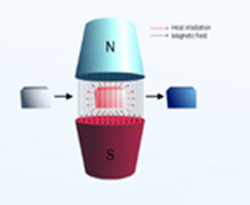 The Special Session will provide a forum for discussions of the latest results in the innovative field of the ferromagnetic shape memory alloys and other ferroic materials, exhibiting giant magneto-strain and magnetocaloric effects, respectively. The session will cover all the fundamental and applied aspects related to these materials and the physical phenomena they demonstrate.
The Special Session will provide a forum for discussions of the latest results in the innovative field of the ferromagnetic shape memory alloys and other ferroic materials, exhibiting giant magneto-strain and magnetocaloric effects, respectively. The session will cover all the fundamental and applied aspects related to these materials and the physical phenomena they demonstrate.

Session Topics Include (but not limited to):
- Heusler Materials
- Magnetic Shape Memory Alloys and Applications
- Magnetocaloric Effect
- Magnetostructural Transitions and Related Effects
- Giant magnetostriction
To register your abstract for this session, please select “CS-28 Ferromagnetic Shape Memory Alloys and Magnetocalorics” as one of the “Preferred Topics” during the abstract submission process.
Session Organizer/Moderator
Volodymyr Chernenko, Arkady Zhukov, Jose María Porro

Prof. Dr. Volodymyr Chernenko graduated and has got a Ph.D. from Moscow State University. 38 years of research experience in centers in Ukraine, Germany, Japan, Italy, United States, France, Switzerland, Australia, Spain, Hong Kong and Russia. He has a permanent position as Ikerbasque Research Professor at BCMaterials & University of Basque Country, Spain. Professional interest is in the physics of phase transitions in solids and magnetism. Focused on research and development of the multifunctional magnetic shape-memory materials. Author of 320 original papers in ISI scientific journals and 6 book chapters with more than 8500 citations and h-index equal to 46. He is the International Fellow Awardee of the Helmholtz Association (Germany) in 2014. He is world-wide known as one of the founders of the new research area “Ferromagnetic shape memory alloys” being the organizer and/or invited speaker of many International conferences and symposia on this subject.
 Dr. Prof. A.P. Zhukov graduated in 1980 from the Physics Chemistry Department of the Moscow Steel and Alloys Institute (presently National University of Science and Technology). In 1988 he received a Ph.D. degree from the Institute of Solid State Physics (Chernogolovka) of the Russian Academy of Science, in 2010 Doctor of Science (habilitation) in Moscow State ‘Lomonosov’ University. Present employment Ikerbasque Research Professor at the Department of the Polymers and Advanced Materials of the University of Basque Country, Spain. Current fields of interest: amorphous and nanocrystalline ferromagnetic materials, magnetic micro-wires, giant magneto-impedance, giant magnetoresistance, magnetoelastic sensor. He has published more than 600 referred papers in the international journals (total number of citations of A. Zhukov’s papers, updated December 21, 2023: 11265, Citation H Index=58). A. Zhukov is included in the ‘Ranking of the World Scientists: World´s Top 2 % Scientists” by Stanford University, in the Rankings of 175 most relevant researchers in Material Science and of 224 most relevant researchers in Physics residents in Spain (DIH, https://grupodih.info), in the ranking of top Materials Science scientists ranking by www.Research.com, in the list of Most cited authors of J. Magn. Magn. Mater. (https://exaly.com/journal/12443/journal-of-magnetism-and-magnetic-materials/top-authors) and of Sensors and Actuators A: (https://exaly.com/journal/13143/sensors-and-actuators-a-physical/top-authors). A. Zhukov is an associate Editor of IEEE Magnetic letters and International Journal on Smart Sensing and Intelligent Systems, member of several editorial boards (Crystals, Sensors by MDPI) guest Editor of J. Alloys Compounds (currently of the Special issue Honouring Prof. K.H.J Buschow), J. Magn. Magn. Mater, edited two books: “Novel Functional Magnetic Materials” and “High Performance Soft Magnetic Materials” in Springer, wrote two books: “Magnetic properties and applications of ferromagnetic microwires with amorphous and nanocrystalline structure” and “Magnetic sensors based on thin magnetically soft wires with tuneable magnetic properties and its applications”, more than 20 book chapters (including one published in the Handbook of Magnetic Materials ed. by Prof. K. Buschow).
Dr. Prof. A.P. Zhukov graduated in 1980 from the Physics Chemistry Department of the Moscow Steel and Alloys Institute (presently National University of Science and Technology). In 1988 he received a Ph.D. degree from the Institute of Solid State Physics (Chernogolovka) of the Russian Academy of Science, in 2010 Doctor of Science (habilitation) in Moscow State ‘Lomonosov’ University. Present employment Ikerbasque Research Professor at the Department of the Polymers and Advanced Materials of the University of Basque Country, Spain. Current fields of interest: amorphous and nanocrystalline ferromagnetic materials, magnetic micro-wires, giant magneto-impedance, giant magnetoresistance, magnetoelastic sensor. He has published more than 600 referred papers in the international journals (total number of citations of A. Zhukov’s papers, updated December 21, 2023: 11265, Citation H Index=58). A. Zhukov is included in the ‘Ranking of the World Scientists: World´s Top 2 % Scientists” by Stanford University, in the Rankings of 175 most relevant researchers in Material Science and of 224 most relevant researchers in Physics residents in Spain (DIH, https://grupodih.info), in the ranking of top Materials Science scientists ranking by www.Research.com, in the list of Most cited authors of J. Magn. Magn. Mater. (https://exaly.com/journal/12443/journal-of-magnetism-and-magnetic-materials/top-authors) and of Sensors and Actuators A: (https://exaly.com/journal/13143/sensors-and-actuators-a-physical/top-authors). A. Zhukov is an associate Editor of IEEE Magnetic letters and International Journal on Smart Sensing and Intelligent Systems, member of several editorial boards (Crystals, Sensors by MDPI) guest Editor of J. Alloys Compounds (currently of the Special issue Honouring Prof. K.H.J Buschow), J. Magn. Magn. Mater, edited two books: “Novel Functional Magnetic Materials” and “High Performance Soft Magnetic Materials” in Springer, wrote two books: “Magnetic properties and applications of ferromagnetic microwires with amorphous and nanocrystalline structure” and “Magnetic sensors based on thin magnetically soft wires with tuneable magnetic properties and its applications”, more than 20 book chapters (including one published in the Handbook of Magnetic Materials ed. by Prof. K. Buschow).
 Dr. Jose María Porro is currently Ikerbasque and Ramón y Cajal Fellow at BCMaterials (Bilbao, Spain), where he co-leads the Neutron Science research line of the center. He developed his PhD (obtained in 2014) at CIC nanoGUNE (Donostia-San Sebastián, Spain), followed by a PDRA position at the ISIS neutron and muon source of the Rutherford Appleton Laboratory (Oxfordshire, UK) until late 2017. He obtained a Marie Sklodowska-Curie Fellowship (MSCA-IF) at BCMaterials in 2017, followed by an Ikerbasque Fellowship in late 2019 at the same institution. Currently Dr. Porro is a member of the Board of Directors of the Spanish Society of Neutron Techniques (SETN), as well as of the Magnetic Materials Committee of The Minerals, Metals and Materials Society (TMS) of the USA, and serves as member of evaluation panels of neutron beamtime proposals at the ILL (Grenoble, France; college 5b-magnetism), ANSTO (Sydney, Australia) and SpINS (Spanish access to CRG instruments). His current research activities include the study of magnetic shape memory alloys, all-optical switching phenomena, artificial spin ice systems and magnetic multilayers for spintronic applications, together with the use of synchrotron x-ray and neutron scattering techniques to investigate new materials.
Dr. Jose María Porro is currently Ikerbasque and Ramón y Cajal Fellow at BCMaterials (Bilbao, Spain), where he co-leads the Neutron Science research line of the center. He developed his PhD (obtained in 2014) at CIC nanoGUNE (Donostia-San Sebastián, Spain), followed by a PDRA position at the ISIS neutron and muon source of the Rutherford Appleton Laboratory (Oxfordshire, UK) until late 2017. He obtained a Marie Sklodowska-Curie Fellowship (MSCA-IF) at BCMaterials in 2017, followed by an Ikerbasque Fellowship in late 2019 at the same institution. Currently Dr. Porro is a member of the Board of Directors of the Spanish Society of Neutron Techniques (SETN), as well as of the Magnetic Materials Committee of The Minerals, Metals and Materials Society (TMS) of the USA, and serves as member of evaluation panels of neutron beamtime proposals at the ILL (Grenoble, France; college 5b-magnetism), ANSTO (Sydney, Australia) and SpINS (Spanish access to CRG instruments). His current research activities include the study of magnetic shape memory alloys, all-optical switching phenomena, artificial spin ice systems and magnetic multilayers for spintronic applications, together with the use of synchrotron x-ray and neutron scattering techniques to investigate new materials.
Confirmed invited speakers include:
Adler Gamzatov (Amirkhanov Institute of Physics, Dagestan Republic)
Vladimir V Sokolovskiy (Chelyabinsk University, Russia)
Vasily Buchelnikov (Chelyabinsk State University, Russia)
Mariya Matyunina (Chelybinsk State University, Russia)
Milad Takhsha (IMEM-CNR, Italy)
Natalia Ahiova Río López (Basque Center for Materials Applications and Nanostructures, Spain)
Xiao Xu (Tohoku University, Japan)
Jacek Ćwik (Instytut Niskich Temperatur i Badań Strukturalnych PAN, Poland)
Olga Miroshkina (University of Duisburg-Essen, Germany)
Maciej Szczerba (Institute of Metallurgy and Materials Science, Poland)
Abstract IDs:
TBA
Superconductivity and Magnetism in Heavy Fermion Systems
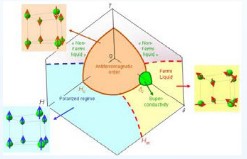 Heavy Fermion systems offer some of the most exciting phenomena in the fields of superconductivity and magnetism, including the coexistence of magnetic order and superconductivity. They are also the family where unconventional superconductivity was discovered and to date the only systems in which a magnetic origin of the superconducting pairing mechanism has been clearly demonstrated. This session will explore some recent breakthroughs in the field.
Heavy Fermion systems offer some of the most exciting phenomena in the fields of superconductivity and magnetism, including the coexistence of magnetic order and superconductivity. They are also the family where unconventional superconductivity was discovered and to date the only systems in which a magnetic origin of the superconducting pairing mechanism has been clearly demonstrated. This session will explore some recent breakthroughs in the field.
Session Topics Include (but not limited to):
- Heavy Fermion Superconductors
- Low Temperature Superconductors
- Unconventinal Superconductors
- Magnetic Superconductors and Triplet Superconductivity
- The Coexistence of Superconductivity and Magnetism
- Kondo Effect/Systems
- Quantum Critically and Spin Liquids
- Quantum Phase Transition
To register your abstract for this session, please select “CS-52 Superconductivity and Magnetism in Heavy Fermion Systems ” as one of the “Preferred Topics” during the abstract submission process.
Session Organizer/Moderator
Daniel Braithwaite, Duygu Yazici
 Prof. Daniel Braithwaite Works on the physics of strongly correlated electron systems, mainly rare earth or uranium based intermetallic compounds with the effects on the unconventional superconductivity and its interaction with magnetism. Also Works on the Extreme conditions of high pressure, low temperature, and sometimes magnetic field, to tune the microscopic parameters of the sample in order to explore the phase diagram and attain the new quantum phases we search for. Experimental studies require sensitive measuring techniques, if possible of various kinds, in order to gain as much information as possible. The measurements that are performed at high pressure include sensitive resistivity measurements, using low temperature transformers and lock-in detection techniques, but also specific heat and magnetic susceptibility (using an a.c. techniques). We also use more and more the powerful tool that is synchrotron radiation for high pressure studies and regularly perform experiments at the ESRF such as resonant absorption spectroscopy to determine valence change as a function of pressure, and even resonant magnetic x-ray scattering at high pressure.
Prof. Daniel Braithwaite Works on the physics of strongly correlated electron systems, mainly rare earth or uranium based intermetallic compounds with the effects on the unconventional superconductivity and its interaction with magnetism. Also Works on the Extreme conditions of high pressure, low temperature, and sometimes magnetic field, to tune the microscopic parameters of the sample in order to explore the phase diagram and attain the new quantum phases we search for. Experimental studies require sensitive measuring techniques, if possible of various kinds, in order to gain as much information as possible. The measurements that are performed at high pressure include sensitive resistivity measurements, using low temperature transformers and lock-in detection techniques, but also specific heat and magnetic susceptibility (using an a.c. techniques). We also use more and more the powerful tool that is synchrotron radiation for high pressure studies and regularly perform experiments at the ESRF such as resonant absorption spectroscopy to determine valence change as a function of pressure, and even resonant magnetic x-ray scattering at high pressure.
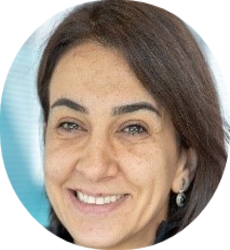
Duygu Yazici is an Advisor to the President of the Scientific and Technological Research Council of Türkiye (TUBİTAK), since 2021. She is also EUREKA High Level Representative of Turkey and a Board Member of the European Open Science Cloud (EOSC). She was a Scientific Officer at the ERC between 2019-2021. She has performed her postdoctoral research in the Physics Department at the University of California, San Diego (UCSD) with Prof. M. Brian Maple, working on materials exhibiting strongly correlated electron phenomena after completing both her Masters’s and Ph.D. degrees in Condensed Matter Physics at Cukurova University. Her research addresses strongly correlated electron phenomena in a novel transition metal, rare earth, and actinide-based oxides and intermetallic compounds.
Confirmed invited speakers include:
Michihiro Hirata (Los Alamos National Laboratory, USA)
Maloto Shimizt (Kyoto University, Japan)
Malte Grosche (Cambridge University, UK)
Abstract IDs:
TBA
Advances and Challenges in the Commercialization of Superconductivity Applications
Superconductivity, known for its promise of zero electrical resistance and magnetic field expulsion, holds transformative potential across various industries. This special session aims to explore the latest advancements and address the critical challenges in the commercialisation of superconductivity applications.
Key applications:
• Superconducting magnets for Fusion: A review of the current state and future potential of superconducting magnets, including specifications, characterisation, and radiation effects on coils in the pursuit of sustainable commercial fusion energy.
• High-Efficiency Industry, Power, and Energy Applications: Examining the role of superconductors in developing highly reliable and efficient industrial applications, including energy generation (e.g., fusion) and future power grids that feature minimal energy losses in storage, transmission, and distribution.
• Superconductivity for Transport: Discuss how superconductors facilitate magnetic levitation, electric planes, and electric ships, thereby offering efficient transportation solutions.
• Superconductivity for Healthcare: Examining the use of superconductors in medical imaging, cancer therapy, and scientific research, particularly in MRI systems and particle accelerators.
• Superconductivity for Electronics and Quantum information processing: Exploring Superconductivity solutions for electronics and quantum information processing.
• High-Field Superconducting Magnets: Highlighting the importance of superconductors in high-field magnets used for materials discovery, particle accelerators, and nuclear fusion reactors, which push the boundaries of scientific research.
Challenges:
• High Production Costs: Addressing the economic barriers due to the high costs of manufacturing and materials.
• Cooling Requirements: Discussing the sophisticated and costly cooling systems needed to maintain superconducting properties.
• Material Limitations: Exploring the technical challenges in optimizing superconducting materials’ electromagnetic and mechanical properties as well as radiation effects for fusion applications.
• Scalability: Evaluating the difficulties in scaling up production to meet industrial demands.
• Market Adoption: Understanding the resistance to change and the need to demonstrate clear economic benefits to industries.
Future Perspectives:
• Emerging Applications: Identifying new markets and applications for superconductivity.
• Long-Term Vision: Outlining a roadmap for future research and development to overcome
• Scalability: Evaluating the difficulties in scaling up production to meet industrial demands.
• Market Adoption: Understanding the resistance to change and the need to demonstrate clear economic benefits to industries.
This special session will provide a comprehensive platform to discuss and address the critical aspects of commercialising superconductivity applications, fostering innovation and collaboration in this exciting field. The session will include the current state of superconductivity applications, the hurdles to their commercialisation, and the innovative solutions being developed to address these challenges. By fostering a deeper understanding of these issues, we can accelerate the transition from research to real-world applications, unlocking the full potential of superconductivity.
Session Topics Include (but not limited to):
- TBA
To register your abstract for this session, please select “CS-2 Advances and Challenges in the Commercialization of Superconductivity Applications” as one of the “Preferred Topics” during the abstract submission process.
Session Organizer/Moderator
Ziad Melhem
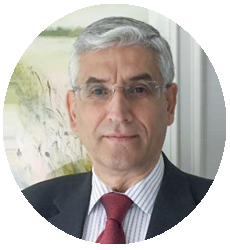 Professor Ziad Melhem is the Founder and CEO of Oxford Quantum Solutions Ltd (OQS). OQS is an independent Consultancy Business launched in Feb 2021 focusing on Innovations and Advanced Solutions, Strategic Business Development, Executive Mentoring, Strategic Road mapping, and Technical Authority on Superconducting, Cryogenics, Instrumentation in Quantum and Nanotechnology applications for Quantum, Energy, Life Sciences, Physical Sciences, Transport and Power Applications. From 1st Dec 2022, Ziad has been appointed as a Professor at the Physics Department, Lancaster University with a particular focus on Business Development and Technology Transfer of Advanced Technologies in Low-Temperature Cryogenics, Condensed Matter, Superconducting Devices, and Quantum Technologies for diverse sectors. Since 1st Jan 2022, Ziad has been a Non-Executive Director for Intelliconnect Europe Ltd, focusing on product development of solutions for Quantum Technologies. Before retiring from Oxford Instruments NanoScience (OINS), Ziad, the Strategic Business Development Manager, managed OINS Strategic Business Development activities, Alliances, and Collaborative R&D projects on quantum, nanoscience, and nanotechnology applications.
Professor Ziad Melhem is the Founder and CEO of Oxford Quantum Solutions Ltd (OQS). OQS is an independent Consultancy Business launched in Feb 2021 focusing on Innovations and Advanced Solutions, Strategic Business Development, Executive Mentoring, Strategic Road mapping, and Technical Authority on Superconducting, Cryogenics, Instrumentation in Quantum and Nanotechnology applications for Quantum, Energy, Life Sciences, Physical Sciences, Transport and Power Applications. From 1st Dec 2022, Ziad has been appointed as a Professor at the Physics Department, Lancaster University with a particular focus on Business Development and Technology Transfer of Advanced Technologies in Low-Temperature Cryogenics, Condensed Matter, Superconducting Devices, and Quantum Technologies for diverse sectors. Since 1st Jan 2022, Ziad has been a Non-Executive Director for Intelliconnect Europe Ltd, focusing on product development of solutions for Quantum Technologies. Before retiring from Oxford Instruments NanoScience (OINS), Ziad, the Strategic Business Development Manager, managed OINS Strategic Business Development activities, Alliances, and Collaborative R&D projects on quantum, nanoscience, and nanotechnology applications.
Ziad has over 34 years of experience in product, partnerships, alliances, and business development activities in applied superconductivity, Low and High-temperature superconducting (LTS & HTS) materials, cryogenics, advanced instrumentation, quantum, and nanotechnology applications for scientific, medical, physical and life sciences, energy, and industrial sectors.
Ziad is the Chairman of the British Cryogenic Council (BCC), a member of the IOP Superconductivity Group, a Chairman of the IOP Superconductivity Summer School series in Oxford, a Member of the International Organizing Committee of the Magnet Technology Conference series, and Coordinator of the Superconductivity Global Alliance (ScGA). Ziad is active at the national and international levels and is a member of a variety of international and national committees and organizations and sits on Advisory Boards for different projects and initiatives on superconducting, quantum, and cryogenic applications.
Confirmed Invited speakers include:
TBA
Abstract IDs:
TBA
Advanced REBCO-based conductors for Large-scale HTS Applications in Energy Generation, Transmission, Storage and use in Energy-Efficient Devices
High-performance, low-cost, high-temperature superconducting (HTS) REBCO tapes or coated conductors have the potential to revolutionize many energy-related applications and could have major implications in the energy transition towards clean and renewable energy generation, storage, transmission and use in large-scale electric devices. These coated conductors are enabling for applications such as commercial nuclear fusion, superconducting cables for the electric grid, electric aviation, and superconductor-based electric generators/motors, etc. This symposium or focused session will highlight talks from leading REBCO wire manufacturers and focus on REBCO wire performance in applied magnetic fields, cost, thruput, yield, etc.
We plan to have a panel discussion for 30-45 mins following each session in this symposium with 4 invited/keynote talks of 30mins each moderated by the session chairs
Session Topics Include (but not limited to):
• TBA
To register your abstract for this session, please select “CS-1 Advanced REBCO-based conductors for Large-scale HTS Applications in Energy Generation, Transmission, Storage and use in Energy-Efficient Devices” as one of the “Preferred Topics” during the abstract submission process.
Session Organizer/Moderator
Amit Goyal

AMIT GOYAL is a SUNY Distinguished Professor and SUNY Empire Innovation Professor at the State University of New York (SUNY) at Buffalo. He is an Emeritus Corporate Fellow at the Oak Ridge National Laboratory. Goyal was previously a UT-Battelle Corporate Fellow, a Battelle Distinguished Inventor and an ORNL Distinguished Scientist at Oak Ridge National Laboratories in Tennessee.
He is a leading scientist in the field of advanced energy and electronic materials, including High Temperature Superconductors. He has co-authored over 360 publications and has 88 issued patents. He has received numerous accolades including the presidential level DOE’s E. O. Lawrence Award in the inaugural category of Energy Science & Innovation. The US Department of Energy (DOE) Secretary on behalf of the President of the United States bestows the award. He is a Member of the US National Academy of Engineering (NAE) and the US National Academy of Inventors (NAI). He is a Fellow of AAAS, MRS, IEEE, APS, ASM, ACERS, IOP, WIF and WTN. Selected additional honors include: TEN R&D 100 awards which are widely regarded as the “Oscars for Innovation” as well as the R&D Magazine’s “Innovator-of-the-Year” award in 2010 for sustained innovations. Selected additional honors include: TEN R&D 100 awards which are widely regarded as the “Oscars for Innovation” as well as the R&D Magazine’s “Innovator-of-the-Year” award in 2010 for sustained innovations. He is also a Member of the US National Materials & Manufacturing Board (NMMB) and has served on numerous National Academy Committees for reviewing national initiatives and developing national plans in various areas.
He is the Director of the Laboratory for Heteroepitaxial Growth of Functional Materials & Devices as well as the Director of the NYS Center of Plastics Recycling Research & Innovation at the University. Previously he served as the Founding Director of the University-wide, multidisciplinary RENEW (Research & Education in Energy, Environment & Water) Institute cutting-across seven schools and colleges. In recognition of extraordinary service to the university, he was awarded the UB President’s Medal, the highest recognition awarded at the University.
Links:
1. https://engineering.buffalo.edu/chemical-biological/people/faculty-directory.host.html/content/shared/engineering/chemical-biological/profiles/faculty/goyal-amit.detail.html
2. https://www.buffalo.edu/iprri/about.html
3. https://en.wikipedia.org/wiki/Amit_Goyal
Confirmed invited speakers include:
TBA
Abstract IDs:
TBA
Electrical Control of Magnetism
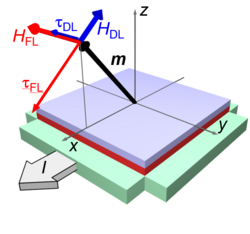 Electrical control of magnetization in ferromagnetic heterostructures is a central topic in magnetism and spintronics. Our improved understanding of spin-charge interconversion phenomena during the past two decades and new/emerging materials have provided fertile grounds for fundamental studies and application prospects for information technologies. This session aims to bring together pioneering researchers in this broad field to create a stimulating atmosphere and discuss the advances and opportunities of electric-driven magnetization control from physics, materials, and application perspectives.
Electrical control of magnetization in ferromagnetic heterostructures is a central topic in magnetism and spintronics. Our improved understanding of spin-charge interconversion phenomena during the past two decades and new/emerging materials have provided fertile grounds for fundamental studies and application prospects for information technologies. This session aims to bring together pioneering researchers in this broad field to create a stimulating atmosphere and discuss the advances and opportunities of electric-driven magnetization control from physics, materials, and application perspectives.
Session Topics Include (but not limited to):
- Spin-orbit torques
- Spin-transfer torques
- Domain wall/skyrmion devices
- Magnetic tunnel junctions
- Spin-charge interconversion
- Spin and orbital currents
To register your abstract for this session, please select “CS-3 Electrical Control of Magnetism” as one of the “Preferred Topics” during the abstract submission process.
Session Organizer/Moderator
Can Onur Avci, Jordi Sort
Invited speakers include:
 Can Onur Avci is a principal investigator at the Institute of Materials Science of Barcelona (ICMAB-CSIC) since February 2021. He received his Ph.D. degree from ETH Zürich in 2015 with an ETH medal for the outstanding doctoral thesis. He has worked at MIT (2016-2018) and ETH Zürich (2018-2021) as a postdoc before joining ICMAB. He is the recipient of an ERC Starting Grant (with the project MAGNEPIC) and the 2021 IUPAP Young Scientist Prize in the field of Magnetism. His research covers a wide breadth of subjects in spintronics and magnetism with a focus on electrical control of magnetization, spin-orbit-driven transport phenomena in thin films, spin currents, chiral spin textures, and magnetic memory and logic devices.
Can Onur Avci is a principal investigator at the Institute of Materials Science of Barcelona (ICMAB-CSIC) since February 2021. He received his Ph.D. degree from ETH Zürich in 2015 with an ETH medal for the outstanding doctoral thesis. He has worked at MIT (2016-2018) and ETH Zürich (2018-2021) as a postdoc before joining ICMAB. He is the recipient of an ERC Starting Grant (with the project MAGNEPIC) and the 2021 IUPAP Young Scientist Prize in the field of Magnetism. His research covers a wide breadth of subjects in spintronics and magnetism with a focus on electrical control of magnetization, spin-orbit-driven transport phenomena in thin films, spin currents, chiral spin textures, and magnetic memory and logic devices.
 Jordi Sort leads the ‘Group of Smart Nanoengineered Materials, Nanomechanics and Nanomagnetism’ (with ca. 20 researchers) as an ICREA Research Professor at UAB. After finishing his PhD in 2002 in the field of “magnetic interfacial effects” (Extraordinary Award), Prof. Sort performed two postdoctoral stays, at SPINTEC (Grenoble) and at Argonne National Laboratory. His research is focused on a wide variety of materials (thin films, lithographed structures, porous materials and nanocomposites) with emphasis on their magnetic, magnetoelectric and mechanical performance. He received awards from the Catalan and Spanish Physical Societies as well as the Federation of European Materials Societies. So far, Prof. Sort has supervised 20 PhD Theses, has published 380 articles (>13100 citations in WoS, h = 58), has issued 7 patents and has managed 40 research projects, being Coordinator of 2 European Training Networks (ITN), and PI of a CoG, two PoCs and an AdG from the ERC.
Jordi Sort leads the ‘Group of Smart Nanoengineered Materials, Nanomechanics and Nanomagnetism’ (with ca. 20 researchers) as an ICREA Research Professor at UAB. After finishing his PhD in 2002 in the field of “magnetic interfacial effects” (Extraordinary Award), Prof. Sort performed two postdoctoral stays, at SPINTEC (Grenoble) and at Argonne National Laboratory. His research is focused on a wide variety of materials (thin films, lithographed structures, porous materials and nanocomposites) with emphasis on their magnetic, magnetoelectric and mechanical performance. He received awards from the Catalan and Spanish Physical Societies as well as the Federation of European Materials Societies. So far, Prof. Sort has supervised 20 PhD Theses, has published 380 articles (>13100 citations in WoS, h = 58), has issued 7 patents and has managed 40 research projects, being Coordinator of 2 European Training Networks (ITN), and PI of a CoG, two PoCs and an AdG from the ERC.
Confirmed invited speakers include:
Jordi Sort (Universitat Autònoma de Barcelona, Spain)
Tom Seifert (Freie Universität Berlin, Germany)
Shinji Miwa (University of Tokyo, Japan)
Irena Spasojevic (Autonomous University Barcelona, Spain)
Dafiné Ravelosona (Univ. Paris-Saclay, & SPIN-ION Technologies, France)
Daniela Petti (The Polytechnic University of Milan, Italy)
Edoardo Albisetti (The Polytechnic University of Milan, Italy)
Aisha Aqeel (Technical University of Munich, Germany)
Safeer Chenattukuzhiyil (University of Oxford, UK)
Ssu-Yen Huang (National Taiwan University, Taiwan)
Eric Arturo (Montoya University of Utah, USA)
Berkay Kilic (Zernike Institute for Advanced Materials, University of Groningen, Netherlands)
Abstract IDs:
TBA
Nonuniform Magnetic Textures: Vortices, Skyrmions and Hopfions
 Nonuniform magnetic textures have attracted significant attention due to their interesting properties when subjected to external stimuli such as magnetic fields or currents. In this session we focus on recent experimental advances on Skyrmions, Domain Walls and other Spin Textures, e.g. hopfions, on their Micromagnetic and Atomistic Modeling, as well as soft X-Ray based imaging techniques for the direct observation of nonuniform magnetization states.
Nonuniform magnetic textures have attracted significant attention due to their interesting properties when subjected to external stimuli such as magnetic fields or currents. In this session we focus on recent experimental advances on Skyrmions, Domain Walls and other Spin Textures, e.g. hopfions, on their Micromagnetic and Atomistic Modeling, as well as soft X-Ray based imaging techniques for the direct observation of nonuniform magnetization states.
Session Topics Include (but not limited to):
•Skyrmions and Antiskyrmions
•Magnetization Dynamics of Spin Textures
•X-Ray imaging techniques
•Time-Resolved X-Ray Microscopy
•Domain Walls and their dynamics
•Stripe and Helical states
To register your abstract for this session, please select “CS-63 Nonuniform Magnetic Textures: Vortices, Skyrmions and Hopfions” as one of the “Preferred Topics” during the abstract submission process.
Session Organizer/Moderator
Sebastian Wintz, Sabri Koraltan
 Sabri Koraltan received his PhD (Dr.rer.nat) at University of Vienna in Austria at the department for Physics of Functional Materials. He is currently a Postdoctoral researcher at the Institute of Applied Physics, Technische Universität Wien. His main scientific interests are around static and dynamic characterization of nonuniform magnetic textures including their magnonic properties.
Sabri Koraltan received his PhD (Dr.rer.nat) at University of Vienna in Austria at the department for Physics of Functional Materials. He is currently a Postdoctoral researcher at the Institute of Applied Physics, Technische Universität Wien. His main scientific interests are around static and dynamic characterization of nonuniform magnetic textures including their magnonic properties.
 Sebastian Wintz received his PhD (Dr. rer. nat.) from Technische Universitaet Dresden, Germany in 2014. He currently holds a scientist position at the Helmholtz-Zentrum Berlin für Materialien und Energie. His main scientific interests are magnonic systems and their investigation using synchrotron based X-ray studies for imaging and their characterization.
Sebastian Wintz received his PhD (Dr. rer. nat.) from Technische Universitaet Dresden, Germany in 2014. He currently holds a scientist position at the Helmholtz-Zentrum Berlin für Materialien und Energie. His main scientific interests are magnonic systems and their investigation using synchrotron based X-ray studies for imaging and their characterization.
Confirmed invited speakers include:
Simone Finizio (Paul Scherrer Institute, Switzerland)
Ales Hrabec (ETH Zurich, Switzerland)
Daniel Schick (Max-Born-Institut, Germany)
Abstract IDs:
TBA
Micromagnetics, Modeling, and Scientific Machine Learning
Micromagnetic calculations and numerical simulations can confirm existing experimental results, or predict novel functionalities. In this session, we focus on recent advances in the field of micromagnetics, with special focus on new theories, algorithms, and modelings.
Session Topics Include (but not limited to):
•Micromagnetic Modeling
•Micromagnetic Theory
•Micromagnetic Simulations
•Atomistic spin simulations
•Finite-difference method
•Finite-Element method
•Inverse-design micromagnetics
To register your abstract for this session, please select “CS-62 Micromagnetics, Modeling, and Scientific Machine Learning” as one of the “Preferred Topics” during the abstract submission process.
Session Organizer/Moderator
Claas Abert, Lukas Exl

Claas Abert received his PhD at University of Hamburg in Germany. He is currently at the department for Physics of Functional Materials at the University of Vienna, Austria. He is the main developer of several micromagnetic codes, such as magnum.fe, magnum.pi and Neuralmag. His main research interests are development of novel algorithms for magnetic systems, and inverse-design calculations of magnetic systems.

Lukas Exl holds the title of PD Dr. (Privatdozent) and Dipl.-Ing./Dr.techn., and is Research Director at the Wolfgang Pauli Institute (WPI) in Vienna as well as Head of its Mathematical AI/ML Research Division.He also serves half-time as a Senior Scientist at the research platform Mathematics‑Magnetism‑Materials (MMM) at the University of Vienna.
His work sits at the intersection of applied mathematics, computational physics and scientific machine learning. Among his research interests are numerical methods and mathematical modelling of complex physical systems — in particular multiscale micromagnetism and magnetic materials for sustainable energy, mathematically-grounded machine learning methods (such as physics-informed neural networks, neural operators), and numerical low-rank tensor methods.
Since 2016 he has lectured in machine learning, computational sciences and applied mathematics across multiple faculties at the University of Vienna, and he completed his habilitation (venia docendi) in Computational Science at Vienna — the first in that field across disciplines and faculties at the university.
Confirmed invited speakers include:
Heisam Moustafa (University for Continuing Education Krems, Austria)
Lukas Körber (Radboud University, Netherlands)
Abstract IDs:
TBA
Nonreciprocal Transport Phenomena and the Diode Effect in Superconductors
The section will focus on the rapidly growing field of nonreciprocal superconducting transport, where electrical current flows asymmetrically depending on its direction, giving rise to the superconducting diode effect. This phenomenon challenges conventional views of dissipationless transport in superconductors and opens new perspectives for superconducting electronics, quantum technologies, and topological devices.
Session Topics Include (but not limited to):
• Fundamental mechanisms of nonreciprocity: broken inversion and time-reversal symmetries, spin-orbit coupling, finite-momentum pairing, chiral and multiband superconductivity, and vortex dynamics.
• Theoretical approaches: Ginzburg–Landau frameworks, microscopic models, and novel current-phase relations in Josephson junctions and SQUIDs.
• Experimental realizations: polar and noncentrosymmetric superconducting systems, van der Waals materials, artificial superlattices, hybrid nanostructures, heavy-fermion, iron-based and other unconventional superconductors.
• Device-level perspectives: diode efficiency benchmarks, controllable rectification, integration into quantum circuits, and potential applications in logic and energy-efficient technologies.
The goal is to bring together theorists and experimentalists to outline the state-of-the-art, challenges, and opportunities in engineering nonreciprocal superconducting devices.
To register your abstract for this session, please select “CS-77 Nonreciprocal Transport Phenomena and the Diode Effect in Superconductors” as one of the “Preferred Topics” during the abstract submission process.
Session Organizer/Moderator
Yuriy Yerin
 Dr. Yuriy Yerin received his PhD in Physics from the B. Verkin Institute for Low Temperature Physics and Engineering of the National Academy of Sciences of Ukraine in 2013. He is currently a researcher at the Istituto di Struttura della Materia (CNR-Rome), Italy. His previous postdoctoral research includes positions at the Institute for Physics of Microstructures (Russian Academy of Sciences), the University of Camerino, the University of Perugia, and CNR-SPIN. His research focuses on theoretical condensed matter physics, including multiband superconductivity, nano- and mesoscale phenomena in superconductors, BCS-BEC crossover, nonlinear phononics, and thermoelectricity.
Dr. Yuriy Yerin received his PhD in Physics from the B. Verkin Institute for Low Temperature Physics and Engineering of the National Academy of Sciences of Ukraine in 2013. He is currently a researcher at the Istituto di Struttura della Materia (CNR-Rome), Italy. His previous postdoctoral research includes positions at the Institute for Physics of Microstructures (Russian Academy of Sciences), the University of Camerino, the University of Perugia, and CNR-SPIN. His research focuses on theoretical condensed matter physics, including multiband superconductivity, nano- and mesoscale phenomena in superconductors, BCS-BEC crossover, nonlinear phononics, and thermoelectricity.
Confirmed invited speakers include:
Javad Shabani (New York University, USA)(Keynote)
Wei Pan (Sandia National Laboratories, USA)(Keynote)
Jorge Cayao (Uppsala University, Sweden)
Abstract IDs:
TBA
Orbitronics
The orbital degree of freedom of electrons — alongside their spin and charge — is rapidly emerging as a new axis in information storage and transport. This session focuses on the burgeoning field of orbitronics, exploring how orbital angular momentum (OAM) currents can be generated, manipulated and exploited in quantum materials and devices.
Session Topics Include (but not limited to):
•Mechanisms of orbital angular momentum generation, transport and conversion
•Interplay of spin–orbit coupling, orbital textures and quantum materials
•Magneto-electric and orbital torque phenomena, and their influence on spintronic device functionality
•Novel device architectures and materials platforms for orbitronic information processing and spin-orbit‐based technologies
To register your abstract for this session, please select “CS-78 Orbitronics” as one of the “Preferred Topics” during the abstract submission process.
Session Organizer/Moderator
Can Onur Avci, Saül Vélez
 Can Onur Avci is a principal investigator at the Institute of Materials Science of Barcelona (ICMAB-CSIC) since February 2021. He received his Ph.D. degree from ETH Zürich in 2015 with an ETH medal for the outstanding doctoral thesis. He has worked at MIT (2016-2018) and ETH Zürich (2018-2021) as a postdoc before joining ICMAB. He is the recipient of an ERC Starting Grant (with the project MAGNEPIC) and the 2021 IUPAP Young Scientist Prize in the field of Magnetism. His research covers a wide breadth of subjects in spintronics and magnetism with a focus on electrical control of magnetization, spin-orbit-driven transport phenomena in thin films, spin currents, chiral spin textures, and magnetic memory and logic devices.
Can Onur Avci is a principal investigator at the Institute of Materials Science of Barcelona (ICMAB-CSIC) since February 2021. He received his Ph.D. degree from ETH Zürich in 2015 with an ETH medal for the outstanding doctoral thesis. He has worked at MIT (2016-2018) and ETH Zürich (2018-2021) as a postdoc before joining ICMAB. He is the recipient of an ERC Starting Grant (with the project MAGNEPIC) and the 2021 IUPAP Young Scientist Prize in the field of Magnetism. His research covers a wide breadth of subjects in spintronics and magnetism with a focus on electrical control of magnetization, spin-orbit-driven transport phenomena in thin films, spin currents, chiral spin textures, and magnetic memory and logic devices.
 Since June 2021, I have been leading the Spintronics and Nanodevices group at the Condensed Matter Physics Center – IFIMAC, Universidad Autónoma de Madrid. We focus on investigating novel materials and device concepts for spintronic applications employing advanced fabrication and characterization techniques. Currently, my research focuses on investigating metal/oxide-based heterostructures containing ferrimagnetic, antiferromagnetic, or ferroelectric materials to explore new routes to transport spin, stabilize and drive topological magnetic textures at high speed, and enable voltage-control of device functionalities. Recent publications highlight our use of interfacial interactions and spin currents to manipulate magnetic moments and control magnonic spin transport in electrically insulating ferrimagnets.
Since June 2021, I have been leading the Spintronics and Nanodevices group at the Condensed Matter Physics Center – IFIMAC, Universidad Autónoma de Madrid. We focus on investigating novel materials and device concepts for spintronic applications employing advanced fabrication and characterization techniques. Currently, my research focuses on investigating metal/oxide-based heterostructures containing ferrimagnetic, antiferromagnetic, or ferroelectric materials to explore new routes to transport spin, stabilize and drive topological magnetic textures at high speed, and enable voltage-control of device functionalities. Recent publications highlight our use of interfacial interactions and spin currents to manipulate magnetic moments and control magnonic spin transport in electrically insulating ferrimagnets.
Confirmed invited speakers include:
Kazuya Ando (Keio University, Japan)
Geun-Hee Lee (KAIST, Republic of Korea)
Sachin Krishnia (Johannes Gutenberg-Universität Mainz, Germany)
Hyun-Woo Lee (Pohang University of Science and Technology, South Korea)
Ferran Macia University of Barcelona, Spain
Juan Carlos Idrobo (University of Washington, USA)
Liyang Liao (University of Tokyo, Japan)
Abstract IDs:
TBA
Magnonics and Magnetization Dynamics
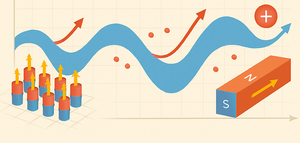 Spin waves provide a charge-free pathway for signal processing and computing. This session brings together materials, methods, and theory advancing the excitation, control, and readout of magnons at room temperature and at cryogenic temperatures for quantum-leaning applications—balancing device-oriented progress with fundamental dynamics. We will cover scalable platforms (low-damping insulators, antiferromagnets, van der Waals systems, and engineered heterostructures), versatile excitation routes (microwave, optical, and spin–orbit torque), and state-of-the-art detection and imaging—Brillouin light scattering (micro/nano-BLS), time-resolved MOKE, NV magnetometry, and X-ray pump–probe techniques. Emphasis is on linear and nonlinear propagation, scattering and interference in reconfigurable magnonic landscapes, coupling to phonons/photons and magnetic textures, and pathways to integrated waveguides, filters, and circuit architectures.
Spin waves provide a charge-free pathway for signal processing and computing. This session brings together materials, methods, and theory advancing the excitation, control, and readout of magnons at room temperature and at cryogenic temperatures for quantum-leaning applications—balancing device-oriented progress with fundamental dynamics. We will cover scalable platforms (low-damping insulators, antiferromagnets, van der Waals systems, and engineered heterostructures), versatile excitation routes (microwave, optical, and spin–orbit torque), and state-of-the-art detection and imaging—Brillouin light scattering (micro/nano-BLS), time-resolved MOKE, NV magnetometry, and X-ray pump–probe techniques. Emphasis is on linear and nonlinear propagation, scattering and interference in reconfigurable magnonic landscapes, coupling to phonons/photons and magnetic textures, and pathways to integrated waveguides, filters, and circuit architectures.
Session Topics Include (but not limited to):
•TBA
To register your abstract for this session, please select “CS-83 Magnonics and Magnetization Dynamics” as one of the “Preferred Topics” during the abstract submission process.
Session Organizer/Moderator
Andrii Chumak, Sabri Koraltan, Sebastian Wintz
 Sabri Koraltan received his PhD (Dr.rer.nat) at University of Vienna in Austria at the department for Physics of Functional Materials. He is currently a Postdoctoral researcher at the Institute of Applied Physics, Technische Universität Wien. His main scientific interests are around static and dynamic characterization of nonuniform magnetic textures including their magnonic properties.
Sabri Koraltan received his PhD (Dr.rer.nat) at University of Vienna in Austria at the department for Physics of Functional Materials. He is currently a Postdoctoral researcher at the Institute of Applied Physics, Technische Universität Wien. His main scientific interests are around static and dynamic characterization of nonuniform magnetic textures including their magnonic properties.
 Sebastian Wintz received his PhD (Dr. rer. nat.) from Technische Universitaet Dresden, Germany in 2014. He currently holds a scientist position at the Helmholtz-Zentrum Berlin für Materialien und Energie. His main scientific interests are magnonic systems and their investigation using synchrotron based X-ray studies for imaging and their characterization.
Sebastian Wintz received his PhD (Dr. rer. nat.) from Technische Universitaet Dresden, Germany in 2014. He currently holds a scientist position at the Helmholtz-Zentrum Berlin für Materialien und Energie. His main scientific interests are magnonic systems and their investigation using synchrotron based X-ray studies for imaging and their characterization.
 Andrii Chumak received his PhD in physics from Taras Shevchenko National University of Kyiv in 2009. He is a Professor of Experimental Solid State Physics and Head of the Nanomagnetism and Magnonics Research Unit at the Faculty of Physics, University of Vienna. His research focuses on spin-wave physics, magnonics, quantum magnonics at millikelvin temperatures and unconventional computing.
Andrii Chumak received his PhD in physics from Taras Shevchenko National University of Kyiv in 2009. He is a Professor of Experimental Solid State Physics and Head of the Nanomagnetism and Magnonics Research Unit at the Faculty of Physics, University of Vienna. His research focuses on spin-wave physics, magnonics, quantum magnonics at millikelvin temperatures and unconventional computing.
Confirmed invited speakers include:
Michal Urbanek (Central European Institute of Technology, Czech Republic)
Khrystyna Levchenko (Technische Universität Wien, Austria)
Vladislav Demidov (University of Muenster, Germany)
Carlos Gonzalez Ballestero (Technische Universität Wien, Austria)
Tomosato Hioki (University of Tokyo, Japan)
Florian Bruckner (University of Vienna, Austria)
Ping Che (Unité Mixte de Physique CNRS/Thales, Université Paris-Saclay, France)
Abstract IDs:
TBA
Magnetic Chirality: CISS Effect, Altermagnets, Solitons and Skyrmions
 Chirality and magnetism are two fundamental yet distinct manifestations of the symmetry breaking that increasingly intersect across modern condensed matter physics, chemistry, and materials science. Chirality — the absence of improper symmetry operations — underpins a vast range of natural phenomena, from molecular handedness in biology to the emergence of chiral crystal structures and topological textures in solids. Magnetism, in contrast, breaks time-reversal symmetry and arises from the collective behavior of electron spins and orbital moments. Both serve as cornerstone of new functional materials, spintronics, and quantum technologies. Their interplay is now recognized as a fertile ground for discovering new physical effects and emergent quantum phases.
Chirality and magnetism are two fundamental yet distinct manifestations of the symmetry breaking that increasingly intersect across modern condensed matter physics, chemistry, and materials science. Chirality — the absence of improper symmetry operations — underpins a vast range of natural phenomena, from molecular handedness in biology to the emergence of chiral crystal structures and topological textures in solids. Magnetism, in contrast, breaks time-reversal symmetry and arises from the collective behavior of electron spins and orbital moments. Both serve as cornerstone of new functional materials, spintronics, and quantum technologies. Their interplay is now recognized as a fertile ground for discovering new physical effects and emergent quantum phases.
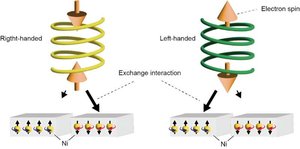 The Chirality-Induced Spin Selectivity (CISS) effect demonstrates how chiral molecular and crystalline systems can produce spin-polarized currents without intrinsic magnetism, challenging conventional understanding of spin transport. Altermagnetism, a new magnetic state combining collinear antiferromagnetism with spin-polarized band structures, reveals how symmetry-breaking can generate magnetic phenomena without net magnetization. Together with chiral magnetic structures such as skyrmions, spin spirals, and magnetochiral transport effects, these discoveries redefine the interplay between structure, symmetry, and spin.
The Chirality-Induced Spin Selectivity (CISS) effect demonstrates how chiral molecular and crystalline systems can produce spin-polarized currents without intrinsic magnetism, challenging conventional understanding of spin transport. Altermagnetism, a new magnetic state combining collinear antiferromagnetism with spin-polarized band structures, reveals how symmetry-breaking can generate magnetic phenomena without net magnetization. Together with chiral magnetic structures such as skyrmions, spin spirals, and magnetochiral transport effects, these discoveries redefine the interplay between structure, symmetry, and spin.
This session brings together experimentalists and theorists to explore the deep connections between chirality and magnetism — from fundamental symmetry principles to emerging applications in spintronics, catalysis, and quantum technologies. Discussions will span recent advances in materials design, spectroscopy, and microscopy, as well as the novel quantum states arising at the intersection of chiral and magnetic order.
Session Topics Include (but not limited to):
Magnetic Skyrmions and Chiral Magnetism
Chiral Induced Spin Selectivity (CISS) effect
Magnetic Vortex Dynamics
Quantum Phase Transitions
Theory of Magnetism
Altermagnetism
Topological Quantum Matter
Magnetic Phase Transitions
Spintronics – Devices and Applications
Functional Magnetic Materials and Applications
Magnetic Vortex measurements
To register your abstract for this session, please select “CS-43 Magnetic Chirality: CISS Effect, Altermagnets, Solitons and Skyrmions” as one of the “Preferred Topics” during the abstract submission process.
Session Organizer/Moderator
Javier Campo, Andrei Rogalev
 Prof. Javier CAMPO, made his doctoral thesis at the Aragón Materials Science Institute (ICMA), join research institute between the Spanish National Research Council (CSIC) and the University of Zaragoza, in 1995. Later he moved to the University of Montpellier where he made a post-doctoral stay of 2 years. From 1998 to 2002 Dr J Campo was appointed by the CSIC as scientist responsible for the CRG-D1B at the Institute Laue Langevin (ILL) in Grenoble (France). In 2003 he joined the ICMA as a researcher under the prestigious Spanish talent program “Ramón y Cajal” where he continued heading the Spanish CRGs at the ILL, including the CRG-D15 and the new XtremeD. He was Director of the ICMA from 2012 to 2020. His scientific interest is focused on the study of “Magnetic Chirality” and “Purely organic magnets” by using neutron scattering techniques and recently he started to work on “in operando studies of materials for energy applications” by using also neutron scattering.
Prof. Javier CAMPO, made his doctoral thesis at the Aragón Materials Science Institute (ICMA), join research institute between the Spanish National Research Council (CSIC) and the University of Zaragoza, in 1995. Later he moved to the University of Montpellier where he made a post-doctoral stay of 2 years. From 1998 to 2002 Dr J Campo was appointed by the CSIC as scientist responsible for the CRG-D1B at the Institute Laue Langevin (ILL) in Grenoble (France). In 2003 he joined the ICMA as a researcher under the prestigious Spanish talent program “Ramón y Cajal” where he continued heading the Spanish CRGs at the ILL, including the CRG-D15 and the new XtremeD. He was Director of the ICMA from 2012 to 2020. His scientific interest is focused on the study of “Magnetic Chirality” and “Purely organic magnets” by using neutron scattering techniques and recently he started to work on “in operando studies of materials for energy applications” by using also neutron scattering.
 Dr. Andrei ROGALEV, received his PhD in Physics at Moscow State University in 1992. In 1993, he joined the European Synchrotron Radiation Facility (ESRF) to work in X-ray spectroscopy group. Since 1998, he has become responsible for the ESRF beamline ID12 which is a unique instrument on worldwide scale devoted to research at the ultimate limits of X-ray spectroscopy with polarized synchrotron radiation. A. Rogalev played a key role in advancing our understanding of magnetism through x-ray magnetic circular dichroism, helping to achieve remarkable progress in this field. He has together with his co-workers discovered new X-ray dichroisms exploiting optical activity phenomena, e.g. in chiral molecular magnets. Internationally recognized for his leadership in developing cutting-edge synchrotron instrumentation, he has shaped how we study the interplay between magnetism and chirality in an element-selective manner. His work continues to inspire new generations of experiments made possible by the ESRF’s upgraded EBS source.
Dr. Andrei ROGALEV, received his PhD in Physics at Moscow State University in 1992. In 1993, he joined the European Synchrotron Radiation Facility (ESRF) to work in X-ray spectroscopy group. Since 1998, he has become responsible for the ESRF beamline ID12 which is a unique instrument on worldwide scale devoted to research at the ultimate limits of X-ray spectroscopy with polarized synchrotron radiation. A. Rogalev played a key role in advancing our understanding of magnetism through x-ray magnetic circular dichroism, helping to achieve remarkable progress in this field. He has together with his co-workers discovered new X-ray dichroisms exploiting optical activity phenomena, e.g. in chiral molecular magnets. Internationally recognized for his leadership in developing cutting-edge synchrotron instrumentation, he has shaped how we study the interplay between magnetism and chirality in an element-selective manner. His work continues to inspire new generations of experiments made possible by the ESRF’s upgraded EBS source.
Confirmed invited speakers include:
TBA
Abstract IDs:
TBA
Advances in Magnetic Sensor Technologies
 This session will mainly address recent progress on magnetic recording, sensors and microwave devices and technologies behind. Magnetic sensors, such as: magnetoresistors, magnetodiodes, Hall-effect devices, silicon depletion-layer magnetometers, magneto-injection transistors, magnistors, lateral magnetotransistors, carrier-domain magnetometers, MOS magnetic-field sensors, fluxgate magnetometers and search coils, etc. will be main topics. Recent progress on the field and the novel applications of these sensors to different areas of technology (medical, defense, space, navigation, geology, etc.) will be elaborated.
This session will mainly address recent progress on magnetic recording, sensors and microwave devices and technologies behind. Magnetic sensors, such as: magnetoresistors, magnetodiodes, Hall-effect devices, silicon depletion-layer magnetometers, magneto-injection transistors, magnistors, lateral magnetotransistors, carrier-domain magnetometers, MOS magnetic-field sensors, fluxgate magnetometers and search coils, etc. will be main topics. Recent progress on the field and the novel applications of these sensors to different areas of technology (medical, defense, space, navigation, geology, etc.) will be elaborated.
The most recent tools and ways of magnetic recording and reading with increased capacity of data storage, studies on magnetic imaging methods (e.g. low-field open NMR) and up to date developments on the electronic background, instrumentation and measurements in the field are specifically encouraged for presentation in this session.
The session additionally will cover spintronics devices (magnetic tunnel junctions, GMR devices, spin injection/detection in semiconductors, spin LEDs, optical isolators and optical switches), circuit applications (nonvolatile memory and logic), quantum information processing utilizing spin states, spin transfer torque dynamics and applications (e.g. Spin-transfer torque random-access memory (STT-RAM)).
You are kindly invited to join these fruitful discussions.
Session Topics Include (but not limited to):
Magnetic imaging and recording ( from spintronic devices to MRI, MFM, magnetooptics, etc., to magnetic shielding and noise measurements)
Magnetic sensors and applications (GMI, GMR, Fluxgate, Search coil, Hall effect magnetometers, etc., measurement and instrumentations techniques)
Space magnetometry and magnetic navigation systems
Magnetic microwave devices (spin transfer torque, switching, oscillator, applications to magnetic sensors and magnetic random access memory, spin Hall Effect devices, etc.)
To register your abstract for this session, please select “CS-27 Advances in Magnetic Sensor Technologies” as one of the “Preferred Topics” during the abstract submission process.
Session Organizer/Moderator
Peter Švec, Ugur Topal
 Peter Švec, DrSc. (principal investigator, head of Department of Metal Physics IP SAS) is specialist for TEM and XRD. His scientific activities are focused on the investigation of the formation and stability of amorphous and nanocrystalline structures in rapidly quenched metallic systems. His focus is also applications of rapidly quenched amorphous and nanocrystalline alloys in energetics and advanced sensors of physical properties, especially deformation and field sensors and in power engineering.
Peter Švec, DrSc. (principal investigator, head of Department of Metal Physics IP SAS) is specialist for TEM and XRD. His scientific activities are focused on the investigation of the formation and stability of amorphous and nanocrystalline structures in rapidly quenched metallic systems. His focus is also applications of rapidly quenched amorphous and nanocrystalline alloys in energetics and advanced sensors of physical properties, especially deformation and field sensors and in power engineering.
 Ugur Topal received his PhD in physics in 2003 from Middle East Technical University, Ankara, Turkey. After working as a research assistant at Abant Izzet Baysal University for 4 years, he joined National Metrology Institute (UME) of Turkey in 1999. He is still working in UME as a senior scientist. His research interests include synthesis and characterization of magnetic and superconducting materials, their potential applications in industry, magnetic sensor technologies and functional materials, Attitude and control determination sensors and actuators of low-medium orbit Satellites.
Ugur Topal received his PhD in physics in 2003 from Middle East Technical University, Ankara, Turkey. After working as a research assistant at Abant Izzet Baysal University for 4 years, he joined National Metrology Institute (UME) of Turkey in 1999. He is still working in UME as a senior scientist. His research interests include synthesis and characterization of magnetic and superconducting materials, their potential applications in industry, magnetic sensor technologies and functional materials, Attitude and control determination sensors and actuators of low-medium orbit Satellites.
Confirmed invited speakers include:
Arkady Zhukov (Dpto. de Fís. Mater., UPV/EHU, Spain)
Abstract IDs:
TBA
Antiferromagnets and Altermagnets: Materials and Functional Pathways
Antiferromagnets with broken time-reversal symmetry and the newly proposed altermagnets have emerged as a frontier in condensed matter physics and spintronics. These systems combine nearly compensated magnetization with spin-split electronic structures, enabling unconventional spin transport and topological responses. Their study bridges magnetism, topology, and even superconductivity through shared concepts of symmetry breaking and correlated electron behavior.
This session will focus on material-driven progress – from growth and characterization of candidate compounds to reproducibility and stability of their magnetic and transport signatures. While altermagnetism has become a major topic in spintronics, recent debates on certain candidates highlight the need for rigorous verification and a closer link between theory and experiment.
By bringing together experts in materials synthesis, characterization, and modeling, the session will aim to identify reliable altermagnetic and non-collinear antiferromagnetic platforms for future spintronic and superconducting hybrid devices.
Session Topics Include (but not limited to):
Time-reversal-symmetry-broken and non-collinear antiferromagnets
Verified and candidate altermagnetic materials
Material synthesis and reproducibility challenges (e.g. RuO2, Mn-based compounds)
Anomalous and topological Hall effects
Theoretical modeling and symmetry analysis
Spin–orbit torque and current-induced switching
Coupling of magnetic and superconducting order.
To register your abstract for this session, please select “CS-79 Antiferromagnets and Altermagnets: Materials and Functional Pathways” as one of the “Preferred Topics” during the abstract submission process.
Session Organizer/Moderator
Maciej Sawicki
Prof. Maciej  has spent most of his scientific career at the Institute of Physics, Polish Academy of Sciences in Warsaw. He currently heads the Laboratory of Cryogenic and Spintronic Research and leads the Group of Magnetism of Spintronic Materials. His undergraduate background in solid state physics led him to pursue interests in magnetic interactions in semiconductors. After two postdoctoral research positions in the UK, he focused his attention on magnetometric techniques and SQUID magnetometry in particular. He built a fully automated SQUID magnetometer from scratch, gaining a unique perspective and understanding of this experimental technique. His diverse skill set reached its zenith during his tenure as a visiting professor in Japan, where he spearheaded the inaugural demonstration of magnetic anisotropy control in a ferromagnetic material through purely electrical means. Over the past three decades, he has established a research network comprising leading laboratories in Europe and Japan. He continues to pursue his primary research interest while also exploring other current topics in solid state physics, where antiferromagnetic spintronics is emerging as a dominant field.
has spent most of his scientific career at the Institute of Physics, Polish Academy of Sciences in Warsaw. He currently heads the Laboratory of Cryogenic and Spintronic Research and leads the Group of Magnetism of Spintronic Materials. His undergraduate background in solid state physics led him to pursue interests in magnetic interactions in semiconductors. After two postdoctoral research positions in the UK, he focused his attention on magnetometric techniques and SQUID magnetometry in particular. He built a fully automated SQUID magnetometer from scratch, gaining a unique perspective and understanding of this experimental technique. His diverse skill set reached its zenith during his tenure as a visiting professor in Japan, where he spearheaded the inaugural demonstration of magnetic anisotropy control in a ferromagnetic material through purely electrical means. Over the past three decades, he has established a research network comprising leading laboratories in Europe and Japan. He continues to pursue his primary research interest while also exploring other current topics in solid state physics, where antiferromagnetic spintronics is emerging as a dominant field.
Confirmed invited speakers include:
Abstract IDs:
TBA
Emergent Phenomena and Topology in Magnet-Superconductor Hybrids
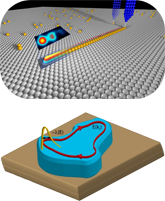 The combination of magnetic materials with conventional superconductors is emerging as a very powerful approach to the realization of novel electronic states and topological phases of matter, such as equal-spin triples Cooper pairs and topological superconductivity. Those emergent electronic states hold high potential for application in superconducting cryo-spintronics and fault-tolerant quantum computing, motivating the strong research efforts in the exploration of 2D and 1D magnet-superconductor hybrid systems.
The combination of magnetic materials with conventional superconductors is emerging as a very powerful approach to the realization of novel electronic states and topological phases of matter, such as equal-spin triples Cooper pairs and topological superconductivity. Those emergent electronic states hold high potential for application in superconducting cryo-spintronics and fault-tolerant quantum computing, motivating the strong research efforts in the exploration of 2D and 1D magnet-superconductor hybrid systems.
Session Topics Include (but not limited to):
In-gap bound states
Spin-triplet Cooper pairs
Topological superconductivity
Spin-transport in superconductors
Magnetic and superconducting proximity effects
To register your abstract for this session, please select “CS-7 Emergent Phenomena and Topology in Magnet-Superconductor Hybrids” as one of the “Preferred Topics” during the abstract submission process.
Session Organizer/Moderator
Roberto Lo Conte
 Roberto Lo Conte is an Assistant Professor at the Zernike Institute for Advanced Materials of the University of Groningen since August 2023. He received his Ph.D. degree from the Johannes Gutenberg University at Mainz in December 2015. He has worked at UC Berkeley and at the Lawrence Berkeley National Laboratory as a postdoc (2016-2017) first and as a Marie Curie Fellow (2018-2019) after. He then joined the University of Hamburg as a research associate (2020-2023) before joining the University of Groningen. His research covers a wide breadth of subjects in quantum materials, spanning from topological magnet-superconductor hybrids to topological magnetism in thin films and multilayers to 2D magnetism in van der Waals materials.
Roberto Lo Conte is an Assistant Professor at the Zernike Institute for Advanced Materials of the University of Groningen since August 2023. He received his Ph.D. degree from the Johannes Gutenberg University at Mainz in December 2015. He has worked at UC Berkeley and at the Lawrence Berkeley National Laboratory as a postdoc (2016-2017) first and as a Marie Curie Fellow (2018-2019) after. He then joined the University of Hamburg as a research associate (2020-2023) before joining the University of Groningen. His research covers a wide breadth of subjects in quantum materials, spanning from topological magnet-superconductor hybrids to topological magnetism in thin films and multilayers to 2D magnetism in van der Waals materials.
Invited speakers include:
Jelena Klinovaja (University of Basel, Switzerland)
Jens Wiebe (Hamburg University, Germany)
Niladri Banerjee (Imperial College London, UK)
Abstract IDs:
TBA
New Developments in Superconductivity of Atomically Thin Superconductors
 Atomically thin superconductors—ranging from monolayer transition-metal dichalcogenides and twisted van der Waals heterostructures to elemental monolayers—have become a vibrant platform for exploring unconventional pairing mechanisms, quantum phase transitions, and strong spin–orbit effects in reduced dimensions. This session will highlight recent experimental and theoretical progress in understanding how superconductivity emerges, evolves, and can be tuned in the two-dimensional limit.
Atomically thin superconductors—ranging from monolayer transition-metal dichalcogenides and twisted van der Waals heterostructures to elemental monolayers—have become a vibrant platform for exploring unconventional pairing mechanisms, quantum phase transitions, and strong spin–orbit effects in reduced dimensions. This session will highlight recent experimental and theoretical progress in understanding how superconductivity emerges, evolves, and can be tuned in the two-dimensional limit.
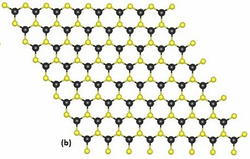 Topics include interface- and electrostatically-induced superconductivity, vortex dynamics in two-dimensional superconductors, superfluid stiffness in magic-angle twisted graphene, and novel non-reciprocal transport phenomena. Particular emphasis will be placed on new material systems and experimental techniques from transport measurements to single-vortex sensing and scanning probe microscopy, complemented by theoretical insights into thermal and quantum activation processes. Bringing together leading researchers in materials synthesis, nanoscale measurements, and theory, the session aims to advance understanding of superconductivity in atomically thin materials and their implications for quantum devices.
Topics include interface- and electrostatically-induced superconductivity, vortex dynamics in two-dimensional superconductors, superfluid stiffness in magic-angle twisted graphene, and novel non-reciprocal transport phenomena. Particular emphasis will be placed on new material systems and experimental techniques from transport measurements to single-vortex sensing and scanning probe microscopy, complemented by theoretical insights into thermal and quantum activation processes. Bringing together leading researchers in materials synthesis, nanoscale measurements, and theory, the session aims to advance understanding of superconductivity in atomically thin materials and their implications for quantum devices.
*Image “Monolayer TMDC structure” by 3113Ian (Wikimedia Commons), licensed under CC BY-SA 3.0.
Session Topics Include (but not limited to):
Materials and Fabrication
Fundamental Mechanisms
Characterization and Measurement
Hybrid and Applied Systems
To register your abstract for this session, please select “CS-80 New Developments in Superconductivity of Atomically Thin Superconductors” as one of the “Preferred Topics” during the abstract submission process.
Session Organizer/Moderator
Vadim Geshkenbein
 Vadim Geshkenbein is a theoretical physicist at the Department of Physics, ETH Zurich, Switzerland. His research focuses on the theory of superconductivity, vortex matter, and quantum coherent systems. He made pioneering contributions to the understanding of unconventional superconductors, including phase-sensitive Josephson experiments that established the d-wave character of high-Tc superconductivity. He also developed the theory of collective vortex creep and strong pinning, providing quantitative predictions for vortex dynamics and critical current behavior. His another works includes proposals for environmentally decoupled qubit devices for quantum computing.
Vadim Geshkenbein is a theoretical physicist at the Department of Physics, ETH Zurich, Switzerland. His research focuses on the theory of superconductivity, vortex matter, and quantum coherent systems. He made pioneering contributions to the understanding of unconventional superconductors, including phase-sensitive Josephson experiments that established the d-wave character of high-Tc superconductivity. He also developed the theory of collective vortex creep and strong pinning, providing quantitative predictions for vortex dynamics and critical current behavior. His another works includes proposals for environmentally decoupled qubit devices for quantum computing.
Confirmed invited speakers include:
Miuko Tanaka ISSP, University of Tokyo, Japan
Jinpei Zhao NUS, Singapore
Marta Perego ETH Zürich, Swiitzerland
Kaveh Ahadi Ohio State University, USA
Abstract IDs:
TBA
Superconducting Digital Circuits: Design, Fabrication, Measurements and Applications
This session will discuss all aspects of design, fabrication, and testing of superconducting digital circuits as well as their applications.
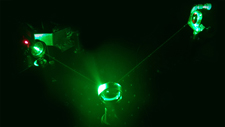

DiaQuantFab Laser and MGravi


Diamant eLiSe and Nano-Kryotrons
Session Topics Include (but not limited to):
Logic families: AQFP, RSFQ, ERSFQ, RQL, PCL, …
Applications: Digital, Mixed, Neuromorphic, Stochastic, Qubit control, Readouts, …
EDA tools
Fabrication: advanced nodes, new material, new types of Josephson junction (SNS, SINIS, SFS, …)
System integration, cryogenic solutions
To register your abstract for this session, please select “CS-69 Superconducting Digital Circuits: Design, Fabrication, Measurements and Applications” as one of the “Preferred Topics” during the abstract submission process.
Session Organizer/Moderator
Thomas Ortlepp, Timur Filippov, Jie Ren

Prof. Dr. Thomas Ortlepp studied mathematics at the Technical University of Ilmenau and received his PhD in quantum electronics in 2004. After that, Thomas Ortlepp did research in the field of low-temperature physics at the University of Twente in Holland. In 2010, Thomas Ortlepp habilitated in the field of microelectronics and subsequently took over the leadership of an industrial project for high-performance quantum memory circuits at the University of California in Berkeley.
In 2013, Thomas Ortlepp returned to Germany and started his career at CiS Forschungsinstitut für Mikrosensorik GmbH. In 2015, he was appointed Distinguished Professor by Yokohama National University.
Also in 2015, Thomas Ortlepp took over the management of the CiS Research Institute (CiS Forschungsinstitut für Mikrosensorik GmbH) until today. He is co-founder and vice president of the MEMS Smart Sensor Institute in Nanjing, China, which was established in 2018.
His research focuses on the development of silicon microsystems (MEMS and MOEMS) and the industrial application of quantum technology.
 Dr. Filippov joined HYPRES in 2003 as a Member of Research Staff and was promoted to Principal Member of Research Staff in 2017. He is a digital circuit designer and involved in all aspects of RSFQ/ERSFQ IC design, verification, and evaluation.
Dr. Filippov joined HYPRES in 2003 as a Member of Research Staff and was promoted to Principal Member of Research Staff in 2017. He is a digital circuit designer and involved in all aspects of RSFQ/ERSFQ IC design, verification, and evaluation.
Dr. Filippov designed or contributed in design of digital and interpolation filters, digital mixers, look-up tables, decoders, PRBSs, adders, counters, single and multi-input ADCs, readout circuits, arithmetic-logic unit. He also contributed to the theory of noise immunity of superconductor digital circuits and its experimental verification. He holds a Ph.D. in Physics and Mathematics from Moscow State University (1995) and is author/co-author of over 60 publications and 6 patents in the field.
 Jie Ren is a professor at the University of Chinese Academy of Sciences (UCAS), vice director of the Superconducting Center, and leader of the SFQ Research Group at the Shanghai Institute of Microsystem and Information Technology (SIMIT), Chinese Academy of Sciences (CAS). She holds a bachelor’s degree from Nanjing University (P. R. China) and a Ph.D. in physics from Stony Brook University, State University of New York (SUNY, USA). Prior to joining SIMIT and UCAS, she served as a research staff member at HYPRES Inc. (New York, USA), specializing in superconducting integrated circuit design.
Jie Ren is a professor at the University of Chinese Academy of Sciences (UCAS), vice director of the Superconducting Center, and leader of the SFQ Research Group at the Shanghai Institute of Microsystem and Information Technology (SIMIT), Chinese Academy of Sciences (CAS). She holds a bachelor’s degree from Nanjing University (P. R. China) and a Ph.D. in physics from Stony Brook University, State University of New York (SUNY, USA). Prior to joining SIMIT and UCAS, she served as a research staff member at HYPRES Inc. (New York, USA), specializing in superconducting integrated circuit design.
Her current research interests include high-yield, design-friendly SFQ cell libraries, high-fidelity Josephson junction models, low-power large-scale SFQ circuits, and novel SFQ designs based on nano-bridge junctions. She has published papers in prestigious journals and top-tier conferences such as Supercond. Sci. Technol., ACS Nano, IEEE TCAD, ICS, and MICRO. Her honors include the Outstanding Young Scientist Award of CAS, the National Women’s Model of Contribution honor (China), and the T. A. Pond Prize from Stony Brook University, SUNY.
Confirmed invited speakers include:
Jie Ren (SIMIT, China)
Nobuyuki Yoshikawa (Yokohama National University, Japan)
Michael Schneider (NIST, USA)
Olivia Chen (Toyama) (Kyushu University, Japan)
Liliang Ying (SIMIT, China)
Masamitsu Tanaka (Nagoya University, Japan)
Coenrad Fourie (Stellenbosch University, South Africa)
Christopher L. Ayala (Yokohama National University, Japan)
Ali Bozbey (TOBB University of Economics and Technology, Türkiye)
Alex Kirichenko (SEEQC, USA)
Hirotaka Terai (NICT, Japan)
Sergey Tolpygo (MIT-LL, USA)
Abstract IDs:
TBA
Superconductivity and Magnetism under Pressure and Strain

Superconductivity remains one of the most fascinating and intensively studied quantum states of matter. It often emerges in close interplay or competition with other collective phenomena, such as magnetism, charge-density waves, or structural instabilities. Understanding how these interactions evolve under external stimuli such as pressure and strain provides crucial insight into the mechanisms driving superconductivity.
Despite more than a century of research, a comprehensive understanding of how the features of the normal-state electronic structure govern superconducting properties remains elusive. In particular, the ability to rationally design materials with enhanced superconducting transition temperatures—rather than discovering them by chance—remains a central challenge in condensed matter physics and materials science. Addressing this challenge requires the development of new experimental tools, high-pressure techniques, and theoretical approaches.
This session will focus on recent advances in the study of superconductivity and magnetism under extreme conditions of pressure and strain. Contributions will cover both experimental and theoretical investigations aimed at elucidating the fundamental mechanisms governing superconducting and magnetic phase transitions. The session welcomes presentations on all classes of superconductors and correlated materials, including hydrides, unconventional systems, and newly discovered compounds, with the goal of deepening our understanding of the interplay between lattice, electronic, and magnetic degrees of freedom.
Session Topics Include (but not limited to):
• Experimental and theoretical studies of superconductivity and magnetism under pressure and strain
• Theoretical prediction, modeling, and design of high-Tc and unconventional superconductors
• Pressure- and strain-induced phase transitions and their impact on electronic and magnetic properties
• Interplay and competition between superconductivity, magnetism, and charge/orbital order
• Development of high-pressure cells, instrumentation, and measurement methodologies
To register your abstract for this session, please select “CS-54 Superconductivity and Magnetism under Pressure and Strain” as one of the “Preferred Topics” during the abstract submission process.
Session Organizer/Moderator
Rustem Khasanov, Alexander Shengelaya
 Rustem Khasanov studied physics at Kazan State University (Russia). He received his Ph.D. at the Physics Institute of the University of Zürich in 2004, where he worked in the group of Prof. Hugo Keller and Nobel Prize Laureate Prof. Alex Müller. Following two-year postdoctoral research at the Ames Laboratory (USA), in 2008 he joined the Laboratory for the muon spin spectroscopy at the Paul Scherrer Institute (Swityerland). His current research interest focuses on the muon spin rotation/relaxation studies of emergent electronic materials and physical phenomena under high-pressure extreme conditions. He has published over 290 peer-reviewed journal papers with over than 8000 cittions.
Rustem Khasanov studied physics at Kazan State University (Russia). He received his Ph.D. at the Physics Institute of the University of Zürich in 2004, where he worked in the group of Prof. Hugo Keller and Nobel Prize Laureate Prof. Alex Müller. Following two-year postdoctoral research at the Ames Laboratory (USA), in 2008 he joined the Laboratory for the muon spin spectroscopy at the Paul Scherrer Institute (Swityerland). His current research interest focuses on the muon spin rotation/relaxation studies of emergent electronic materials and physical phenomena under high-pressure extreme conditions. He has published over 290 peer-reviewed journal papers with over than 8000 cittions.
 Dr. Alexander Shengelaya joined the SDSU Georgia faculty in 2016 as a professor of physics. Previously, he obtained research experience through his work with several universities and research centers in Europe. Noted among his experience is his close collaboration with Nobel Prize Laureate in physics, Prof. K. A. Müller, from 1996 to 2005 at the University of Zürich in Switzerland. Since 2006, Dr. Shengelaia has served as a professor of physics and also the founding director of the Institute of Condensed Matter Physics and Advanced Materials at Tbilisi State University in Georgia. From 2006 to 2014, he served as a member of the Academic Council of Tbilisi State University.
Dr. Alexander Shengelaya joined the SDSU Georgia faculty in 2016 as a professor of physics. Previously, he obtained research experience through his work with several universities and research centers in Europe. Noted among his experience is his close collaboration with Nobel Prize Laureate in physics, Prof. K. A. Müller, from 1996 to 2005 at the University of Zürich in Switzerland. Since 2006, Dr. Shengelaia has served as a professor of physics and also the founding director of the Institute of Condensed Matter Physics and Advanced Materials at Tbilisi State University in Georgia. From 2006 to 2014, he served as a member of the Academic Council of Tbilisi State University.
Confirmed invited speakers include:
Samuele Sanna (University of Bologna, Italy)
Sergey Bud’ko (Iowa State University of Science and Technology, USA)
Eteri Svanidze (Max-Planck-Institute for Chemical Physics of Solids, Germany)
Lei Shu (Fudan Universit, China)
Alexander Eaton (University of Cambridge, UK)
Theo Weinberger (University of Cambridge, UK)
Abstract IDs:
TBA
Bulk Superconductors: Design, Fabrication, Characterization, and Applications
 This session will be centered on the various preparation techniques and procedures, the characterizations, and the possible applications of superconducting materials when they are considered in bulk form.
This session will be centered on the various preparation techniques and procedures, the characterizations, and the possible applications of superconducting materials when they are considered in bulk form.
Session Topics Include (but not limited to):
• TBA
To register your abstract for this session, please select “A6 – Bulk Superconductors” as one of the “Preferred Topics” during the abstract submission process.
Session Organizer/Moderator
Barış Güner, Kévin Berger
 S. Baris Guner is an associate professor of the Recep Tayyip Erdogan University (RTEU) in Turkey since February 2021. He received Ph.D. degree from RTEU in Rize in 2017. During the PhD thesis, he worked with many superconducting groups from the Brunel University, the University of Cambridge, the Tokyo University of Agriculture and Technology, etc. He received the Academic Encouragement Prize of RTEU in Turkey in 2017. He has published papers focus on REBCO Bulk Superconductors, Single Grain and Multiseeded Superconducting Materials Processing, Magnetic Levitation, Trapped Field and Structural Properties. Details about his research activities can be found here https://avesis.erdogan.edu.tr/sbaris.guner/yayinlar
S. Baris Guner is an associate professor of the Recep Tayyip Erdogan University (RTEU) in Turkey since February 2021. He received Ph.D. degree from RTEU in Rize in 2017. During the PhD thesis, he worked with many superconducting groups from the Brunel University, the University of Cambridge, the Tokyo University of Agriculture and Technology, etc. He received the Academic Encouragement Prize of RTEU in Turkey in 2017. He has published papers focus on REBCO Bulk Superconductors, Single Grain and Multiseeded Superconducting Materials Processing, Magnetic Levitation, Trapped Field and Structural Properties. Details about his research activities can be found here https://avesis.erdogan.edu.tr/sbaris.guner/yayinlar
 Kévin Berger received the M.S. and the Ph.D. degree in electrical engineering from the Université Henri Poincaré, Nancy, France, in 2002 and 2006 respectively. His main research interests are currently focused on the study of superconducting cable systems for railway applications and the magnetization of HTS bulks for practical applications such as electrical motors. He is also interested in the potential new bulk materials such as YBCO foams, MgB2 and iron-based superconductors.
Kévin Berger received the M.S. and the Ph.D. degree in electrical engineering from the Université Henri Poincaré, Nancy, France, in 2002 and 2006 respectively. His main research interests are currently focused on the study of superconducting cable systems for railway applications and the magnetization of HTS bulks for practical applications such as electrical motors. He is also interested in the potential new bulk materials such as YBCO foams, MgB2 and iron-based superconductors.
After his Ph.D. in 2016, he worked two years at G2ELab and Néel Institute in Grenoble with Prof. Pascal Tixador on the design and realization of an 800 kJ HTS SMES, the first conduction-cooled SMES realized in Europe. Having spent one year in the industry (Exxelia Group) designing magnetic components for aircraft and space applications, he reached an associate professor position at the University of Lorraine, Group of Research in Electrical Engineering of Nancy (GREEN), in France in 2010. He is the author of five book chapters and more than seventy peer-reviewed international journal articles. He is still involved in the development of analytical and numerical tools and was the organizing Committee Chair of the 8th edition of the International Workshop on Numerical Modelling of High Temperature Superconductors, held in Nancy, France, from June 14 to 16, 2022, https://htsmod2022.sciencesconf.org/.
Dr. Berger was engaged in two Horizon 2020 projects: IMOTHEP related to the “Future propulsion and integration: towards a hybrid/electric aircraft”, https://www.imothep-project.eu/ and SMAGRINET regarding “Smart grid competence hub for boosting research, innovation and educational capacities for energy transition”, https://www.smagrinet.eu/. For many years, he is an expert in the TC 90 of the International Electrotechnical Commission (IEC) which prepares International Standards (IS) related to superconducting materials and devices.
Confirmed invited speakers include:
Pavel Diko (Slovak Academy of Sciences, Slovakia)
Philippe Vanderbemden (University of Liege, Belgium)
Michela Fracasso (Politecnico di Torino, Italy)
Nicolas Rotheudt (University of Liege, Belgium)
Abstract IDs:
TBA
Novel Magnetoresistance and Spin-Charge Interconversion
TThis session explores cutting-edge transport phenomena in spintronics, where spin–orbit coupling at interfaces and in bulk materials enables new ways to convert between spin and charge currents, and to control magnetoresistance. Topics include mechanisms such as the spin Hall effect, inverse spin Hall effect, and the Rashba–Edelstein effect, which underpin emergent effects like spin Hall magnetoresistance (SMR) and unidirectional magnetoresistance.
Particular focus is given to interface-driven spin–orbit interactions, which can dominate over bulk contributions and even generate unconventional magnetoresistance (for example, negative SMR) through interfacial spin–charge interconversion.
Session Topics Include (but not limited to):
• TBA
To register your abstract for this session, please select “CS-81 Novel Magnetoresistance and Spin-Charge Interconversion” as one of the “Preferred Topics” during the abstract submission process.
Session Organizer/Moderator
Xiangrong Wang
 Professor Wang obtained his BA degree (1980) from Wuhan University and his ScM (1986) and PhD (1990) degrees from University of Rochester. He was awarded Minnesota Supercomputer Institute Fellow (1991) for post-doctoral studies at the University of Minnesota. He joined the Physics Department of HKUST in 1992.
Professor Wang obtained his BA degree (1980) from Wuhan University and his ScM (1986) and PhD (1990) degrees from University of Rochester. He was awarded Minnesota Supercomputer Institute Fellow (1991) for post-doctoral studies at the University of Minnesota. He joined the Physics Department of HKUST in 1992.
Professor Wang is interested in revealing the physics principles behind the novel physics phenomena in condensed matter physics. Currently, he is working on the interplay of charges, spins, and phonons in interesting materials and devices. One particular question is how the interactions of charge, spin, and phonons affect the spin dynamics and electron transport. The current research topics include magnetic domain wall motion under electric and magnetic fields, thermal gradient, and spin current of electrons and magnons; domain wall pinning theory; theories for large magnetoresistance in nonmagnetic systems; and electronic properties of novel systems.
Confirmed invited speakers include:
Lijun Zhu (State Key Laboratory of Superlattices and Microstructures, Institute of Semiconductors, Chinese Academy of Sciences, China)
Haifeng Ding (National Laboratory of Solid State Microstructures, Department of Physics, Nanjing University, China)
Wu Yi-Hong (Electrical and Computer Engineering, National University of Singapore, Singapore)
Jingsheng Chen (Materials Science and Engineering, National University of Singapore, Singapore)
Ke Xia (School of Physics, Southeast University, China)
Hao Wu (Songshan Lake Materials Laboratory, China)
Abstract IDs:
TBA
Magnetic Materials Processing and Physical Properties
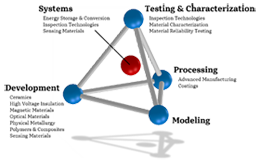 The session will cover the processing techniques used in manufacturing components from ceramic superconductors, metallic supercondcutors and other magnetic materials. Areas of interest include
The session will cover the processing techniques used in manufacturing components from ceramic superconductors, metallic supercondcutors and other magnetic materials. Areas of interest include
- Casting, forming and machining
- Additive processing and joining technologies
- The evolution of material properties under the specific conditions met in manufacturing processes
- Surface properties
Design and behavior of equipment and tools for the sample preparation and appropriate quantitative analysis with well designed experiments well covered in the session, which contribute significant new transferable knowledge in the form of (a) an innovation or (b) a new insight into material processing in the form of a transferable qualitative or quantitative explanation of a difference between experimental measurements and the predictions of relevant existing theories, models and hypothesis.
Session Topics Include (but not limited to):
- TBA
To register your abstract for this session, please select “CS-26 Magnetic Materials Processing and Physical Properties” as one of the “Preferred Topics” during the abstract submission process.
Session Organizer/Moderator
Mehmet Ali Aksan
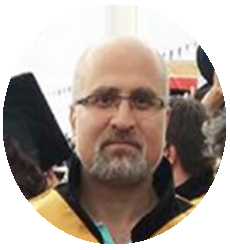 Prof. M.Ali AKSAN graduated in 1995 from the Physics Department of Inönü University. In 2003, he received a Ph.D. degree from the Institute of Natural and Applied Sciences of Inönü University Present employment: Full-time professor at Physics Department of Inönü University, TURKEY. Current fields of interest. Superconductors, superconducting Josephson Junction, glass-ceramic materials, thermoelectricity and thermal conductivity, magnetic shape memory alloys. He has published more than 90 referred papers in the international journals. Prof. AKSAN is in the organization committee of the International Conference on Superconductivity and Magnetism (ICSM) since 2018. He gave a number of invited talks at a few international conferences.
Prof. M.Ali AKSAN graduated in 1995 from the Physics Department of Inönü University. In 2003, he received a Ph.D. degree from the Institute of Natural and Applied Sciences of Inönü University Present employment: Full-time professor at Physics Department of Inönü University, TURKEY. Current fields of interest. Superconductors, superconducting Josephson Junction, glass-ceramic materials, thermoelectricity and thermal conductivity, magnetic shape memory alloys. He has published more than 90 referred papers in the international journals. Prof. AKSAN is in the organization committee of the International Conference on Superconductivity and Magnetism (ICSM) since 2018. He gave a number of invited talks at a few international conferences.
Invited speakers include:
Abstract IDs:
TBA
Unconventional Superconductivity and Tunable Quantum States
 Despite intensive investigations, unconventional superconductors, still hold in store many surprises. Unconventional superconductivity refers to unusual pairing mechanism, Cooper pairs are not bound together by phonon-exchange (BCS) but instead by some other exchange mechanism, e. g. spin fluctuations in a superconductor with magnetic order either coexistent or nearby in the phase diagram with the hidden dome of Quantum Critical Point (QCP). This session covers the fundamental properties of various unconventional superconducting classes of materials – from 4f-electron heavy fermions to organic superconductors. In addition, a new emerging classes of superconductors (topological, interfacial) will be covered. This session will consist of the new advances, and the way ahead towards a better understanding of the unconventional superconductivity and pairing mechanism.
Despite intensive investigations, unconventional superconductors, still hold in store many surprises. Unconventional superconductivity refers to unusual pairing mechanism, Cooper pairs are not bound together by phonon-exchange (BCS) but instead by some other exchange mechanism, e. g. spin fluctuations in a superconductor with magnetic order either coexistent or nearby in the phase diagram with the hidden dome of Quantum Critical Point (QCP). This session covers the fundamental properties of various unconventional superconducting classes of materials – from 4f-electron heavy fermions to organic superconductors. In addition, a new emerging classes of superconductors (topological, interfacial) will be covered. This session will consist of the new advances, and the way ahead towards a better understanding of the unconventional superconductivity and pairing mechanism.
Session Topics Include (but not limited to):
- TBA
Session Organizer/Moderator
Toni Shiroka
 As a senior scientist at the Swiss Federal Institute of Technology (ETH Zurich) and PSI, T. Shiroka makes regular use of local techniques such as µSR and NMR to investigate the properties of strongly correlated electron systems. Among his current research interests are organic, iron-based, and other unconventional superconductors, frustrated and low-dimensional magnetism, quantum spin liquids, etc.
As a senior scientist at the Swiss Federal Institute of Technology (ETH Zurich) and PSI, T. Shiroka makes regular use of local techniques such as µSR and NMR to investigate the properties of strongly correlated electron systems. Among his current research interests are organic, iron-based, and other unconventional superconductors, frustrated and low-dimensional magnetism, quantum spin liquids, etc.
Invited speakers include:
Abstract IDs:
TBA
Superconductivity and Topology in PtBi2
The non-centrosymmetric Weyl material trigonal PtBi2 exhibits peculiar transport properties connected to topological bands as well as anomalous superconductivity connected to topological surface states. While Weyl nodes and large magnetoresistance of this material were already established some time ago [1], very recent transport measurements reveal a novel peculiar charge transport effect generated by topological nodal limes (TNL): a dissipationless transverse signal in the presence of coplanar electric and magnetic fields, which originates from a Zeeman-induced conversion of TNLs into Weyl nodes [2]. This material shows very unusual superconducting properties in both nanoflakes [3] and bulk crystals. For the latter, angle-resolved photoemission spectroscopy (ARPES) shows topological Fermi arcs on two opposing surfaces which become superconducting at temperatures of about 10 K [4]. Superconductivity is also found in STM measurements showing in addition spatial inhomogeneity of the superconducting gap [5]. In some samples superconducting gaps as large as 20 meV and transition temperatures at about 40 K are revealed by STM resembling the phenomenology found in high-Tc superconductors. Very recent ARPS data show nodes of the superconducting gap pointing to topological surface superconductivity in PtBi2 [6].
[1] see i.a. W. Gao et al., “A possible candidate for triply degenerate point fermions in trigonal layered PtBi2”, Nat.Commun. 9, 3249 (2018). doi: 10.1038/s41467-018-05730-3.
[2] A. Veyrat, et al., “Dissipationless transport signature of topological nodal lines”, Nat. Comm., (2024). doi: Under Review,
[3] A. Veyrat et al., “Berezinskii-Kosterlitz-Thouless Transition in the Type-I Weyl Semimetal PtBi2”, Nano Lett. 23, 1229(2023). doi: 10.1021/acs.nanolett.2c04297.
[4] A. Kuibarov et al., “Evidence of superconducting Fermi arcs”, Nature 626, 294 (2024). doi: 10.1038/s41586-023-06977-7.
[5] S. Schimmel et al., “High-TC surface superconductivity in topological Weyl semimetal t-PtBi2”, Nat. Commun (in print)(2023). doi: 10.48550/arXiv.2302.08968, Nat. Commun. in print
[6] S. Changdar et al, submitted
Session Topics Include (but not limited to):
• TBA
To register your abstract for this session, please select “CS-71 Superconductivity and Topology in PtBi2” as one of the “Preferred Topics” during the abstract submission process.
Session Organizer/Moderator
Bernd Büchner
 Bernd Büchner is since 2003 Professor for Experimental Physics at TUD Dresden University of Technology and Director of the IFW Institute for Solid State Research, as well as since 2018 Scientific Director of IFW Dresden. His scientific focus is on materials with strongly correlated electrons, superconductivity and magnetism in unconventional superconductors such as cuprates and iron-based chalcogenides, materials with topological electronic properties including topological superconductivity, and frustrated magnetism. His research, attested by over 1000 scientific publications, is based on the development of novel materials and the application and development of state-of-the-art experimental techniques. He is currently member of the steering committee of two large scientific initiatives funded by the Deutsche Forschungsgemeinschaft (ct.qmat and SFB1143) and deputy spokesperson of the latter. In the last decades he has been active as a referee, board member and spokesperson for various German and international bodies and is a foreign member of the National Academy of Sciences of Ukraine since 2021.
Bernd Büchner is since 2003 Professor for Experimental Physics at TUD Dresden University of Technology and Director of the IFW Institute for Solid State Research, as well as since 2018 Scientific Director of IFW Dresden. His scientific focus is on materials with strongly correlated electrons, superconductivity and magnetism in unconventional superconductors such as cuprates and iron-based chalcogenides, materials with topological electronic properties including topological superconductivity, and frustrated magnetism. His research, attested by over 1000 scientific publications, is based on the development of novel materials and the application and development of state-of-the-art experimental techniques. He is currently member of the steering committee of two large scientific initiatives funded by the Deutsche Forschungsgemeinschaft (ct.qmat and SFB1143) and deputy spokesperson of the latter. In the last decades he has been active as a referee, board member and spokesperson for various German and international bodies and is a foreign member of the National Academy of Sciences of Ukraine since 2021.
Further details can be found here: https://www.ifw-dresden.de/about-us/people/prof-dr-bernd-buechner
Invited speakers include:
Abstract IDs:
TBA
MgB2 – Materials and Applications
MgB2 is expected to be used in helium-free conditions at around 20K, which can easily be attained by a cryo-cooler or liquid hydrogen. The ignorable weak link in the form of grain coupling suggests that the MgB2 fabrication process is simpler than that of HTS superconductors. However, the critical current properties of MgB2 bulks, tapes, and wires still do not reach the level of practical applications due to low density, the inclusion of impurity phases, oxidation of constituent elements and so on. The purpose of the session is to understand the present status of MgB2 and to discuss the improvement of current-carrying characteristics for the wide range of applications of MgB2. Wire production using in-situ and ex-situ methods, the techniques PIT, CTFF, and IMD will also be debated in view of Jc enhancement and persistent current joints. Permanent Magnets made of bulks and their modeling and applications will be included.
Session Topics Include (but not limited to):
- TBA
Session Organizer/Moderator
Hiroaki Kumakura, Daniel Gajda, Burcu Savaşkan
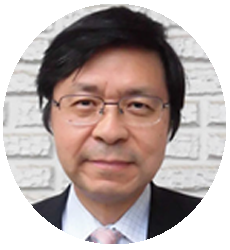 Hiroaki Kumakura was born in 1952. He obtained his B.E.(1976) and M.E.(1978) from the University of Tokyo. He was a director at Superconducting Materials Center (2005-2011), National Institute for Materials Science (NIMS), professor at Graduate School of Pure and Applied Sciences, University of Tsukuba (2007-2013). He is now a Special Researcher in NIMS, President of the Cryogenics and Superconductivity Society of Japan, and a Professor Emeritus, at the University of Tsukuba. He has been engaged in the development of wires and tapes of various superconductors, such as Nb3Al, Bi-based oxides, MgB2, and iron pnictides.
Hiroaki Kumakura was born in 1952. He obtained his B.E.(1976) and M.E.(1978) from the University of Tokyo. He was a director at Superconducting Materials Center (2005-2011), National Institute for Materials Science (NIMS), professor at Graduate School of Pure and Applied Sciences, University of Tsukuba (2007-2013). He is now a Special Researcher in NIMS, President of the Cryogenics and Superconductivity Society of Japan, and a Professor Emeritus, at the University of Tsukuba. He has been engaged in the development of wires and tapes of various superconductors, such as Nb3Al, Bi-based oxides, MgB2, and iron pnictides.
 Daniel Gajda is an assistant professor at the Institute of Low Temperature and Structure Research of the Polish Academy of Sciences in Wrocław, Poland. In 2005, he received the master’s degree from the Department of Electrical Engineering, Czestochowa University of Technology, Czestochowa, Poland, and started to work as an assistant in the International Laboratory of High Magnetic Fields and Low Temperatures PAS, Wroclaw, Poland. In 2014, he received the Ph.D. degree from the Faculty of Electrical Engineering and Computer Science, Lublin University of Technology, Lublin, Poland and an assistant professor at the International Laboratory of High Magnetic Fields and Low Temperatures PAS. He was also the head of the scientific seminar at the International Laboratory of High Magnetic Fields and Low Temperatures in Wroclaw (from 01.09.2014 to 30.09.2017). Since 2017, he has been an Assistant Professor in the Institute of Low Temperature and Structure Research PAS, Wroclaw.
Daniel Gajda is an assistant professor at the Institute of Low Temperature and Structure Research of the Polish Academy of Sciences in Wrocław, Poland. In 2005, he received the master’s degree from the Department of Electrical Engineering, Czestochowa University of Technology, Czestochowa, Poland, and started to work as an assistant in the International Laboratory of High Magnetic Fields and Low Temperatures PAS, Wroclaw, Poland. In 2014, he received the Ph.D. degree from the Faculty of Electrical Engineering and Computer Science, Lublin University of Technology, Lublin, Poland and an assistant professor at the International Laboratory of High Magnetic Fields and Low Temperatures PAS. He was also the head of the scientific seminar at the International Laboratory of High Magnetic Fields and Low Temperatures in Wroclaw (from 01.09.2014 to 30.09.2017). Since 2017, he has been an Assistant Professor in the Institute of Low Temperature and Structure Research PAS, Wroclaw.
In 2014-2025, he held several scientific and research internships at domestic and foreign research centers e.g. Institute of High Pressure Physics of the Polish Academy of Sciences in Warsaw, Institute of Solid State Physics Bulgarian Academy of Sciences in Sofia – Bulgaria, Institute for Solid State and Materials Research in Dresden – Germany and CNR Superconductors, Oxides and other Innovative Materials and Devices in Genoa – Italy. His research area is focused on MgB2 wires, NbTi wires, iron-based superconducting wires, superconducting coils, transport critical current density, magnetic critical current density, pinning force, pinning centers, dominant pinning mechanism, vortex lattice, morphology of superconducting materials, superconducting joints, cooling methods, n value. He has published over 95 papers with over 906 citations and h-index 20.
 Burcu Savaşkan is a Professor at the Department of Energy Systems Engneering of the Karadeniz Technical University (KTU) in Türkiye. She received Ph. D. in 2007. She has worked with research groups from the Tokyo Agriculture and Technology, University of Cambridge and Universite of Paris-Saclay. She has published paper focus on MgB2, REBCO bulk superconductors and superconducting levitation force.
Burcu Savaşkan is a Professor at the Department of Energy Systems Engneering of the Karadeniz Technical University (KTU) in Türkiye. She received Ph. D. in 2007. She has worked with research groups from the Tokyo Agriculture and Technology, University of Cambridge and Universite of Paris-Saclay. She has published paper focus on MgB2, REBCO bulk superconductors and superconducting levitation force.
Invited speakers include:
Abstract IDs:
TBA
Dynamical Control of Electronic Properties in Functional Materials
 Functional materials – natural or artificial crystalline structures whose properties can be controlled on demand – represent an active field of research in condensed matter physics. For example, systems whose properties are governed by the many-body nature of electronic interactions, result in fascinating physics and often realize states of outstanding tunability, making them attractive for future applications. In these cases, external perturbations like substrate bonding and strain, pressure, ultrafast light pulses, electric and magnetic fields, can act as additional and controllable tuning parameters of the material properties. Implementing such perturbation in modern investigation tools is leading to groundbreaking discoveries and offers a guidance to engineer new phases.
Functional materials – natural or artificial crystalline structures whose properties can be controlled on demand – represent an active field of research in condensed matter physics. For example, systems whose properties are governed by the many-body nature of electronic interactions, result in fascinating physics and often realize states of outstanding tunability, making them attractive for future applications. In these cases, external perturbations like substrate bonding and strain, pressure, ultrafast light pulses, electric and magnetic fields, can act as additional and controllable tuning parameters of the material properties. Implementing such perturbation in modern investigation tools is leading to groundbreaking discoveries and offers a guidance to engineer new phases.
The study of electronic phase tunability and their on-demand control is at the forefront of research in quantum materials, in transition metal oxides, and in 2D materials. Moreover, it connects multiple communities relying on different experimental and theoretical methods, offering a natural platform for cross fertilization of different approaches and constructive scientific dialogue. Indeed, new superconductors, exotic magnetic phases, topological and metal-to-insulator transitions have been achieved and controlled by means of external perturbations. This requires the development of specific approaches and experimental systems, offering a rich multidimensional puzzle to be solved.
In this focused session, we want to bring together people and ideas to discuss the latest discoveries and approaches to the dynamical control of novel phases. We expect to cover a wide range of materials and phenomena, including superconductivity, magnetism, electronic phases, topology, hidden orders, and more under the application of stimuli such as electric/magnetic field, ultrafast laser pulses, pressure, and strain. ICQMT 2026 represents the perfect avenue to embrace this scientific exchange, thanks to the ecosystem set by the broad participation of scientists from multiple communities, naturally seeking new collaborations and networking.
Session Topics Include (but not limited to):
•Resonant x-ray scattering (soft and hard)
•Quantum materials and strongly correlated electron systems
•X-ray coherence and its applications to quantum materials
•Emergence
•Dynamics
•Quasi particles and excitations
To register your abstract for this session, please select “CS-13 Dynamical Control of Electronic Properties in Functional Materials” as one of the “Preferred Topics” during the abstract submission process.
Session Organizer/Moderator
Jonathan Pelliciari, Valentina Bisogni, Claudio Mazzoli
 Jonathan Pelliciari is an Associate Scientist at Brookhaven National Laboratory (USA). He received his BS and MS in Chemistry from the University of Modena and Reggio Emilia (Italy) in 2009 and 2011, respectively. In 2016, he completed his Ph.D. in experimental condensed matter physics for his work on resonant scattering techniques to investigate the magnetism in Fe-based superconductors from the Paul Scherrer Institute and University of Fribourg (Switzerland). He then joined the Massachusetts Institute of Technology as a postdoc with a fellowship from the Swiss National Science Foundation from 2017 to 2019. In 2019 he started his position as a permanent staff at Brookhaven National Lab. His current research focuses on the detection of electronic orders and excitations in quantum materials using resonant scattering techniques. He also works in the field of quantum emission and the use of ultrafast laser pulses to manipulate materials.
Jonathan Pelliciari is an Associate Scientist at Brookhaven National Laboratory (USA). He received his BS and MS in Chemistry from the University of Modena and Reggio Emilia (Italy) in 2009 and 2011, respectively. In 2016, he completed his Ph.D. in experimental condensed matter physics for his work on resonant scattering techniques to investigate the magnetism in Fe-based superconductors from the Paul Scherrer Institute and University of Fribourg (Switzerland). He then joined the Massachusetts Institute of Technology as a postdoc with a fellowship from the Swiss National Science Foundation from 2017 to 2019. In 2019 he started his position as a permanent staff at Brookhaven National Lab. His current research focuses on the detection of electronic orders and excitations in quantum materials using resonant scattering techniques. He also works in the field of quantum emission and the use of ultrafast laser pulses to manipulate materials.
 Valentina Bisogni is a Scientist at Brookhaven National Laboratory (USA). She joined the National Light Source II in 2014 and since 2018 she is the Lead Scientist for the Soft Inelastic X-ray Scattering (SIX) beamline.
Valentina Bisogni is a Scientist at Brookhaven National Laboratory (USA). She joined the National Light Source II in 2014 and since 2018 she is the Lead Scientist for the Soft Inelastic X-ray Scattering (SIX) beamline.
Her research focuses mostly on strongly correlated electron systems – in the form of single crystal, thin films or heterostructures – by studying their electronic properties using spectroscopic techniques, like X-ray Absorption (XAS), Resonant Inelastic X-ray Scattering (RIXS), as well as Photoemission (XPS), Resonant Elastic X-ray Scattering (REXS) and Electron Energy Loss Spectroscopy (EELS).
This expertise was acquired during her PhD at the ID08 soft x-ray beamline of the European Synchrotron Radiation Facility in Grenoble (jointly with Politecnico di Milano), where she used XAS and RIXS to study the high-temperature superconducting cuprates, and in the following PostDoc experiences: 1) at IFW Dresden, where she focused on the 1D cuprate systems, 2) at the ADRESS beamline of Swiss Light Source, Paul Scherrer Institute, where she studied rare-earth nickelate thin films and titanates heterostructures.
 Claudio Mazzoli is a Scientist at Brookhaven National Laboratory (USA). After his PhD thesis in Nuclear Magnetic Resonance and Muon Spin Resonance on orbitally ordered compounds at the University of Parma (Italy), Claudio moved to X-rays science at the European Synchrotron Radiation Source (ESRF) in Grenoble (France). There he worked at the magnetic scattering beamline (ID20) acquiring specific experience on Resonant X-ray Diffraction (RXD). Claudio performed experiments in X-ray diffraction and absorption at the major synchrotron sources around the World, complementing his scientific activity with neutron experiments on both powders and single crystals. Once back to the Italian university, he complemented diffraction investigation of strongly correlated systems with X-ray spectroscopy, mainly by RIXS (Resonant Inelastic X-ray Scattering) in the soft energy regime. Claudio moved to NSLS-II at the end of 2014, as a beamline scientist on 23-ID-1, CSX (Coherent Soft X-ray scattering). Currently, he is the Lead Beamline Scientists of CSX. His scientific interests involve strongly correlated electron systems, their electronic orders and associated dynamics, magnetism and the application of light coherence approaches to the study of electronic inhomogeneity in quantum materials.
Claudio Mazzoli is a Scientist at Brookhaven National Laboratory (USA). After his PhD thesis in Nuclear Magnetic Resonance and Muon Spin Resonance on orbitally ordered compounds at the University of Parma (Italy), Claudio moved to X-rays science at the European Synchrotron Radiation Source (ESRF) in Grenoble (France). There he worked at the magnetic scattering beamline (ID20) acquiring specific experience on Resonant X-ray Diffraction (RXD). Claudio performed experiments in X-ray diffraction and absorption at the major synchrotron sources around the World, complementing his scientific activity with neutron experiments on both powders and single crystals. Once back to the Italian university, he complemented diffraction investigation of strongly correlated systems with X-ray spectroscopy, mainly by RIXS (Resonant Inelastic X-ray Scattering) in the soft energy regime. Claudio moved to NSLS-II at the end of 2014, as a beamline scientist on 23-ID-1, CSX (Coherent Soft X-ray scattering). Currently, he is the Lead Beamline Scientists of CSX. His scientific interests involve strongly correlated electron systems, their electronic orders and associated dynamics, magnetism and the application of light coherence approaches to the study of electronic inhomogeneity in quantum materials.
Invited speakers include:
Masaki Uchida (Institute of Science Tokyo, Japan)
Abstract IDs:
TBA
Quantum Emission and Defects in Solid State Materials

Quantum emission — the emission of single photons – is a prominent phenomenon in quantum technologies with important applications in sensing, communications, and cryptography. In solid state materials, quantum emission can emerge from lattice defects with in-gap energy levels that can, upon excitation, emit single photons with antibunching properties. Promising material platforms are nitride-based hBN, GaN, and AlN that by means of multiple synthesis protocols lead to tunable, stable, and bright emission. Lately, the importance of quantum emission has led to a plethora of experimental and theoretical works addressing the photophysical properties and structure of these defects. Additionally recent advances enabled the discovery that these defects carry properties of spin which is appealing for technologies. In this focused session of ICQMT we propose to discuss the latest discovery and developments in the field of quantum emission in solid state materials specifically addressing novel synthesis routes, advanced experimental tools for characterizing the mechanism behind single photon emission, their underlying light-matter interaction, and advanced theoretical models addressing their microscopic structure. This session would bring together scientists working on different materials spurring collaborations and general discussions regarding the process of quantum emission, its microscopic processes, and its discovery in novel mateirals.
Session Topics Include (but not limited to):
•Quantum emission
•Solid state defects
•Advanced spectroscopy
•2D materials
•Color centers
To register your abstract for this session, please select “CS-39 Quantum emission and defects in solid state materials” as one of the “Preferred Topics” during the abstract submission process.
Session Organizer/Moderator
Jonathan Pelliciari, Gabriele Grosso
 Jonathan Pelliciari is an Associate Scientist at Brookhaven National Laboratory (USA). He received his BS and MS in Chemistry from the University of Modena and Reggio Emilia (Italy) in 2009 and 2011, respectively. In 2016, he completed his Ph.D. in experimental condensed matter physics for his work on resonant scattering techniques to investigate the magnetism in Fe-based superconductors from the Paul Scherrer Institute and University of Fribourg (Switzerland). He then joined the Massachusetts Institute of Technology as a postdoc with a fellowship from the Swiss National Science Foundation from 2017 to 2019. In 2019 he started his position as a permanent staff at Brookhaven National Lab. His current research focuses on the detection of electronic orders and excitations in quantum materials using resonant scattering techniques. He also works in the field of quantum emission and the use of ultrafast laser pulses to manipulate materials.
Jonathan Pelliciari is an Associate Scientist at Brookhaven National Laboratory (USA). He received his BS and MS in Chemistry from the University of Modena and Reggio Emilia (Italy) in 2009 and 2011, respectively. In 2016, he completed his Ph.D. in experimental condensed matter physics for his work on resonant scattering techniques to investigate the magnetism in Fe-based superconductors from the Paul Scherrer Institute and University of Fribourg (Switzerland). He then joined the Massachusetts Institute of Technology as a postdoc with a fellowship from the Swiss National Science Foundation from 2017 to 2019. In 2019 he started his position as a permanent staff at Brookhaven National Lab. His current research focuses on the detection of electronic orders and excitations in quantum materials using resonant scattering techniques. He also works in the field of quantum emission and the use of ultrafast laser pulses to manipulate materials.
 Gabriele Grosso is an Assistant Professor of Physics at the Advanced Science Research Center and at the Graduate Center of CUNY. He received his BS and MS in Physics from the University of Padova in 2007 and 2010, respectively. During his Master, he was a visiting researcher at the University of California San Diego. In 2014, he completed his Ph.D. in physics for his work on polariton quantum fluids at the École Polytechnique Fédérale de Lausanne (EPFL). He then joined the Quantum Photonics Group at the Massachusetts Institute of Technology as a postdoc. Gabriele was a fellow of the Swiss National Science Foundation from 2014 to 2017, and the recipient of the NSF CAREER award in 2021. His current research focuses on quantum technologies based on light-matter interactions in two-dimensional van der Waals materials and other quantum confined systems.
Gabriele Grosso is an Assistant Professor of Physics at the Advanced Science Research Center and at the Graduate Center of CUNY. He received his BS and MS in Physics from the University of Padova in 2007 and 2010, respectively. During his Master, he was a visiting researcher at the University of California San Diego. In 2014, he completed his Ph.D. in physics for his work on polariton quantum fluids at the École Polytechnique Fédérale de Lausanne (EPFL). He then joined the Quantum Photonics Group at the Massachusetts Institute of Technology as a postdoc. Gabriele was a fellow of the Swiss National Science Foundation from 2014 to 2017, and the recipient of the NSF CAREER award in 2021. His current research focuses on quantum technologies based on light-matter interactions in two-dimensional van der Waals materials and other quantum confined systems.
Invited speakers include:
Abstract IDs:
TBA
Recent Advances in Thermoelectric Materials and Applications
 Thermoelectric (TE) materials and devices provide a solid-state route for converting heat into electricity and vice versa, making them highly attractive for clean energy, waste heat recovery, and advanced thermal management. As carbon-neutrality targets drive interest in TE technologies, research has expanded from classical chalcogenides, skutterudites, intermetallics, and half-Heuslers to Mg3(Sb, Bi)2-based compounds, oxides, polymers, hybrid systems, low-dimensional structures, and emerging high-entropy alloys. This Session will highlight recent advances in band and defect engineering, nanostructuring and phonon scattering strategies, and interface-controlled transport aimed at maximizing the thermoelectric figure of merit (zT), alongside computational and AI-assisted approaches for discovering abundant, scalable, and thermally robust materials.
Thermoelectric (TE) materials and devices provide a solid-state route for converting heat into electricity and vice versa, making them highly attractive for clean energy, waste heat recovery, and advanced thermal management. As carbon-neutrality targets drive interest in TE technologies, research has expanded from classical chalcogenides, skutterudites, intermetallics, and half-Heuslers to Mg3(Sb, Bi)2-based compounds, oxides, polymers, hybrid systems, low-dimensional structures, and emerging high-entropy alloys. This Session will highlight recent advances in band and defect engineering, nanostructuring and phonon scattering strategies, and interface-controlled transport aimed at maximizing the thermoelectric figure of merit (zT), alongside computational and AI-assisted approaches for discovering abundant, scalable, and thermally robust materials.
Beyond materials, the Session will address challenges in module and system-level design, including joining and contact engineering, thermal interface materials, flexible and printed modules, and the urgent need for standardized testing protocols to obtain reproducible and comparable performance metrics. System integration topics such as heat-exchanger design, optimization of thermal gradients, and cost-performance analysis of complete TE systems will also be emphasized, with a view toward real-world applications in industrial waste-heat recovery, transportation, buildings, microelectronics cooling, IoT power solutions, and circular-economy concepts.
Session Topics Include (but not limited to):
• High-Entropy and Multi-Component Thermoelectric Materials
• High-Temperature and Harsh-Environment Thermoelectrics
• Organic and Hybrid Thermoelectrics
• AI-Guided Discovery and Design of Thermoelectrics
• Low-Dimensional, Quantum-Confined, and 2D Thermoelectrics
• Nanostructures, Interfaces and Phonon Engineering
• Transverse and Anisotropic Thermoelectric Effects
• Mechanical Properties, Durability, and Long-Term Reliability in TE Materials
• From Materials to Modules
• Thermoelectrics for Waste-Heat Recovery and IoT
• Measurement Standards and Reproducibility in Thermoelectric Research
• Cooling and Thermal Management with Thermoelectrics
• Additive and Printed Thermoelectric Devices
To register your abstract for this session, please select “CS-82 Recent Advances in Thermoelectric Materials and Applications” as one of the “Preferred Topics” during the abstract submission process.
Session Organizer/Moderator
Umut Aydemir
 Umut Aydemir is an associate professor at Koç University and director of the Koç University Boron and Advanced Materials Application and Research Center (KUBAM). He received his Ph.D. from the Max Planck Institute for Chemical Physics of Solids in Dresden, Germany, under the supervision of Prof. Yuri Grin, where he focused on the synthesis and characterization of Zintl compounds. From December 2013 to August 2017, he was a postdoctoral scholar under the supervision of Prof. G. Jeffrey Snyder at the California Institute of Technology and Northwestern University, USA, where he worked on novel thermoelectric materials.
Umut Aydemir is an associate professor at Koç University and director of the Koç University Boron and Advanced Materials Application and Research Center (KUBAM). He received his Ph.D. from the Max Planck Institute for Chemical Physics of Solids in Dresden, Germany, under the supervision of Prof. Yuri Grin, where he focused on the synthesis and characterization of Zintl compounds. From December 2013 to August 2017, he was a postdoctoral scholar under the supervision of Prof. G. Jeffrey Snyder at the California Institute of Technology and Northwestern University, USA, where he worked on novel thermoelectric materials.
Dr. Aydemir’s research bridges fundamental and applied concepts in chemistry, physics, and materials science to develop advanced functional materials for energy and electronic technologies. His current interests include thermoelectric energy harvesting and cooling, boron-based high-tech materials, solar cells, batteries, catalysts, hydrogen storage materials, superconductors, laser crystals, and materials with unusual physical properties.
Invited speakers include:
G. Jeffrey Snyder (Northwestern University, USA)
Matthew Grayson (Northwestern University, USA)
Hyun-Sik Kim (University of Seoul, Korea)
Abstract IDs:
TBA
Cryogenics Materials, Engineering and Applications
 This session covers all cryogenics to establish the cryogenic system used to nuclear fusion, high energy physics, space science, medical science, maglev car, HTS application and etc. The discussion will be done in the field of low-temperature refrigeration, cryo-electronics, large cryogenic system, materials, thermodynamics and fluid dynamics for the above mentioned cryogenic applications.
This session covers all cryogenics to establish the cryogenic system used to nuclear fusion, high energy physics, space science, medical science, maglev car, HTS application and etc. The discussion will be done in the field of low-temperature refrigeration, cryo-electronics, large cryogenic system, materials, thermodynamics and fluid dynamics for the above mentioned cryogenic applications.
Session Topics Include (but not limited to):
•TBA
To register your abstract for this session, please select “CS-10 Cryogenics Materials, Engineering and Applications” as one of the “Preferred Topics” during the abstract submission process.
Session Organizer/Moderator
Sastry Pamidi, Yasuharu Kamioka
 Dr. Sastry Pamidi is a professor serving as the Chair of the Department of Electrical and Computer Engineering at FAMU-FSU College of Engineering. He is the Interim Director of the Center for Advanced Power Systems at Florida State University, leading a multidisciplinary research group on superconducting power applications for electric transport and utility applications. His research interests include high-power-density superconducting devices, cryogenic systems for superconducting power devices, cryogenic electrical insulation, and green hydrogen for sustainable transport and power applications. He collaborates with several research groups, superconducting wire manufacturers, and small businesses. He published several book chapters and 200+ papers. Dr. Pamidi is active in IEEE and serves as President of the Local IEEE Section and Chair of the Power and Energy Chapter. He is a Fellow of the Cryogenic Society of America.
Dr. Sastry Pamidi is a professor serving as the Chair of the Department of Electrical and Computer Engineering at FAMU-FSU College of Engineering. He is the Interim Director of the Center for Advanced Power Systems at Florida State University, leading a multidisciplinary research group on superconducting power applications for electric transport and utility applications. His research interests include high-power-density superconducting devices, cryogenic systems for superconducting power devices, cryogenic electrical insulation, and green hydrogen for sustainable transport and power applications. He collaborates with several research groups, superconducting wire manufacturers, and small businesses. He published several book chapters and 200+ papers. Dr. Pamidi is active in IEEE and serves as President of the Local IEEE Section and Chair of the Power and Energy Chapter. He is a Fellow of the Cryogenic Society of America.
 President Cold Tech LLC
President Cold Tech LLC
Adjunct Researcher; Waseda University
Fellow Cryogenic and Superconductivity Society of Japan
President; Japan Industrial Society of Cryogenics and Superconductivity
Ph.D. from the University of Tokyo in 1984
Joined with Toyo Sanso Co. Ltd. In 1972 R&D in cryogenic engineering
Was a visiting researcher at UCLA
Was a visiting professor o Research Center for Materials Science at Extreme Conditions, Osaka University and a lecturer of Sophia University
Was a general manager of Cryogenics Department, a corporate officer of Tokyo Nippon Sanso Corporation
He has about 40 patents and more than 70 papers in cryogenics.
Invited speakers include:
Abstract IDs:
TBA
Quantum Materials Under Extreme Conditions
 Quantum materials exhibit emergent electronic, magnetic, and topological phenomena that cannot be understood within conventional classical frameworks. Low-dimensional systems including two-dimensional (2D) materials, transition metal dichalcogenides (TMDs), van der Waals magnets, and correlated layered compounds, provide an exceptional platform for exploring these quantum states due to their reduced dimensionality, strong electron correlations, and tunable interactions. This session focuses on how extreme conditions, such as ultra-low temperatures, high magnetic fields, and high pressures, serve as powerful tuning parameters to uncover hidden phases, quantum critical behavior, and novel collective excitations in quantum materials.
Quantum materials exhibit emergent electronic, magnetic, and topological phenomena that cannot be understood within conventional classical frameworks. Low-dimensional systems including two-dimensional (2D) materials, transition metal dichalcogenides (TMDs), van der Waals magnets, and correlated layered compounds, provide an exceptional platform for exploring these quantum states due to their reduced dimensionality, strong electron correlations, and tunable interactions. This session focuses on how extreme conditions, such as ultra-low temperatures, high magnetic fields, and high pressures, serve as powerful tuning parameters to uncover hidden phases, quantum critical behavior, and novel collective excitations in quantum materials.
High pressure, particularly when combined with diamond anvil cell techniques, allows continuous control over lattice, bandwidth, and electronic correlations without chemical disorder, offering a clean route to engineer new quantum phases. An important and still open question in quantum materials concerns the interplay between multiple electronic orders, including superconductivity, charge density waves (CDWs), magnetism, and topological order. In many low-dimensional systems, such as TMDs, these phases appear in close proximity within the phase diagram, raising fundamental questions about whether different orders compete, cooperate, or coexist. Extreme conditions provide a powerful experimental approach to disentangle these relationships by selectively tuning or suppressing specific orders, thereby offering deeper insight into the mechanisms governing emergent quantum behavior.
By bringing together experimental and theoretical perspectives, this session will highlight recent advances in the synthesis, characterization, and control of quantum materials under extreme conditions. Emphasis will be placed on the interplay between dimensionality, strong correlations, and external tuning parameters, as well as implications for future quantum technologies. The session aims to foster cross-disciplinary discussion and identify emerging directions in the rapidly evolving field of quantum materials research.
Session Topics Include (but not limited to):
• Quantum materials under extreme conditions (low temperature, high magnetic fields, high pressure)
• Interplay of electronic orders (superconductivity, charge density waves, magnetism, topology)
• Pressure- and field-induced quantum phase transitions
• Emergent quantum phenomena and quantum criticality
• Experimental and theoretical approaches to tuning quantum states
• Experimental techniques for extreme-condition measurements (diamond anvil cells, cryogenics, high-field facilities)
• Theoretical modeling of competing and coexisting quantum phases
To register your abstract for this session, please select “CS-84 Quantum Materials Under Extreme Conditions” as one of the “Preferred Topics” during the abstract submission process.
Session Organizer/Moderator
Mahmoud Abdel-Hafiez
 Prof. Dr. Mahmoud Abdel-Hafiez is an Associate Professor of Physics (Habilitation) at the University of Sharjah. He obtained his PhD from Technische Universität Dresden, Germany, in 2012, and received a prestigious DFG Young Investigator Award in 2015. He has held academic and research appointments in Germany, Belgium, China, Sweden, and the USA. His research focuses on quantum materials, with particular emphasis on the interplay between electronic orders, and on how quantum fluctuations, topology, disorder, and pressure drive the emergence of novel states of matter under extreme conditions.
Prof. Dr. Mahmoud Abdel-Hafiez is an Associate Professor of Physics (Habilitation) at the University of Sharjah. He obtained his PhD from Technische Universität Dresden, Germany, in 2012, and received a prestigious DFG Young Investigator Award in 2015. He has held academic and research appointments in Germany, Belgium, China, Sweden, and the USA. His research focuses on quantum materials, with particular emphasis on the interplay between electronic orders, and on how quantum fluctuations, topology, disorder, and pressure drive the emergence of novel states of matter under extreme conditions.
Invited speakers include:
Abstract IDs:
TBA
AI-Driven Discovery of Novel Quantum Materials
Quantum materials are reshaping the future of technology — from quantum computing and sensing to next-generation electronics and energy systems. Traditional materials discovery, however, is slow and resource-intensive: vast compositional spaces, complex multi-physics interactions, and subtle structure–property relationships all make innovation hard to scale. Artificial intelligence (AI) is transforming this landscape by accelerating hypothesis generation, enabling high-throughput exploration, guiding experiments, and revealing hidden correlations in data that elude conventional approaches.
This symposium will spotlight cutting-edge research where AI and research automation are central drivers in the discovery, design, and deployment of novel materials. We seek contributions that push beyond incremental gains — works that blend physical insight with algorithmic creativity, in silico prediction with experimental validation, and sets new standards for AI-driven discovery.
We encourage submissions that demonstrate how AI empowers breakthroughs in quantum materials research, including both theory and practical validation.
Session Topics Include (but not limited to):
AI for Materials Prediction and Design
Data-Driven Exploration of Quantum Phases
High-Throughput Computational Screening and Materials Genomics
Self-Driving Laboratories and Automated Experimentation
Quantum-Aware Machine Learning Algorithms
AI for Quantum Devices and Functional Integration
Hybrid Classical–Quantum Computational Strategies
To register your abstract for this session, please select “CS-85 AI-Driven Discovery of Novel Quantum Materials” as one of the “Preferred Topics” during the abstract submission process.
Session Organizer/Moderator
Qian Yang, Artem Mishchenko
 Dr Qian Yang is a Senior Research Fellow in the Department of Physics and Astronomy at the University of Manchester. She is an experimental physicist whose research focuses on mass transport in two-dimensional nanocapillaries, molecular sensing under strong confinement, and the application of artificial intelligence to discover novel quantum materials through a closed-loop framework integrating AI and experiments.
Dr Qian Yang is a Senior Research Fellow in the Department of Physics and Astronomy at the University of Manchester. She is an experimental physicist whose research focuses on mass transport in two-dimensional nanocapillaries, molecular sensing under strong confinement, and the application of artificial intelligence to discover novel quantum materials through a closed-loop framework integrating AI and experiments.
 Prof Artem Mishchenko is a Fellow of the Institute of Physics (FInstP) and the Royal Society of Chemistry (FRSC), and a Professor of Condensed Matter Physics at the University of Manchester. His research integrates experimental physics with AI to create a dynamic feedback loop where theoretical calculations and deep learning models actively design experiments – effectively automating the exploration of complex quantum phenomena to accelerate materials discovery. A highly cited researcher with over 37,000 citations, he has been recognized with the EMFL Prize (2018) and as a finalist for the Blavatnik Award for Young Scientists (2021). He holds a PhD in Molecular Electronics from the University of Bern.
Prof Artem Mishchenko is a Fellow of the Institute of Physics (FInstP) and the Royal Society of Chemistry (FRSC), and a Professor of Condensed Matter Physics at the University of Manchester. His research integrates experimental physics with AI to create a dynamic feedback loop where theoretical calculations and deep learning models actively design experiments – effectively automating the exploration of complex quantum phenomena to accelerate materials discovery. A highly cited researcher with over 37,000 citations, he has been recognized with the EMFL Prize (2018) and as a finalist for the Blavatnik Award for Young Scientists (2021). He holds a PhD in Molecular Electronics from the University of Bern.
Invited speakers include:
Abstract IDs:
TBA
Superconductivity in Lower Dimensions
 The continuing miniaturization of a broad range of devices, gadgets, and electronic schemes creates new challenges and demands a deeper understanding of different aspects of charge and heat transport as well as fluctuation phenomena in a variety of superconducting nanostructures. Already now such structures constitute central elements of many nanodevices, and in the future, a number of their applications in metrology, informatics, electronics, etc. is expected to grow further. In addition, reaching a better understanding of salient features of superconductivity in lower dimensions belongs to the scope of most fundamental problems of modern condensed matter physics. The session is intended to bring together leading scientists actively working in different sub-fields of low dimensional superconductivity to overview the present status of the field and most recent advances, visualize further research prospects, and promote new collaborations.
The continuing miniaturization of a broad range of devices, gadgets, and electronic schemes creates new challenges and demands a deeper understanding of different aspects of charge and heat transport as well as fluctuation phenomena in a variety of superconducting nanostructures. Already now such structures constitute central elements of many nanodevices, and in the future, a number of their applications in metrology, informatics, electronics, etc. is expected to grow further. In addition, reaching a better understanding of salient features of superconductivity in lower dimensions belongs to the scope of most fundamental problems of modern condensed matter physics. The session is intended to bring together leading scientists actively working in different sub-fields of low dimensional superconductivity to overview the present status of the field and most recent advances, visualize further research prospects, and promote new collaborations.
Session Topics Include (but not limited to):
• Quantum phase slips in superconducting nanowires
- Superconductor-insulator quantum phase transitions
- Superconducting qubits and metamaterials
- Superconductivity and thermoelectric effects
- Topological insulators and Majorana fermions
- Crossed Andreev reflection and Cooper pair splitting
To register your abstract for this session, please select “CS-53 Superconductivity in Lower Dimensions” as one of the “Preferred Topics” during the abstract submission process.
Session Organizer/Moderator
Andrei Zaikin

Professor Zaikin is a world-renowned expert in the theory of superconductivity, quantum nanotransport, quantum dissipation, and quantum decoherence. He graduated from the Moscow Institute of Physics and Technology in 1979 and obtained his PhD in theoretical physics in 1983 from P.N. Lebedev Physical Institute in Moscow where he also continued his scientific career. Starting in 1995 he was permanently working in Germany for Karlsruhe Institute of Technology (KIT), a merger of Karlsruhe University and Forschungszentrum Karlsruhe. A.D. Zaikin is also a PI at the I.E. Tamm Theory Department of P.N. Lebedev Physical Institute and a research professor at the National Research University Higher School of Economics in Moscow, Russia.
Invited speakers include:
Abstract IDs:
TBA
Advances in Nickelate Superconductors
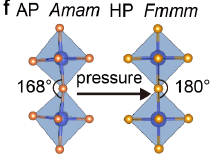 Nickelate superconductors have become a hot topic of research in recent years because of their similarity to high-temperature superconductors, especially cuprates. The underlying mechanism of superconductivity is still unclear and there have been intense debates. The relatively simple unit cell structure of nickelate superconductors and their superconducting mechanism could elucidate the long-standing mechanism of superconductivity in cuprates. The superconducting phase at high pressure has an orthorhombic structure. Recent density functional theory calculations suggest that the superconductivity arises coincidentally with the metallisation and the apical oxygens connecting the Ni-O bilayers. In this focus session, both experimental and theoretical results will be presented and discussed in terms of similarities and dissimilarities with the outstanding properties of cuprates.
Nickelate superconductors have become a hot topic of research in recent years because of their similarity to high-temperature superconductors, especially cuprates. The underlying mechanism of superconductivity is still unclear and there have been intense debates. The relatively simple unit cell structure of nickelate superconductors and their superconducting mechanism could elucidate the long-standing mechanism of superconductivity in cuprates. The superconducting phase at high pressure has an orthorhombic structure. Recent density functional theory calculations suggest that the superconductivity arises coincidentally with the metallisation and the apical oxygens connecting the Ni-O bilayers. In this focus session, both experimental and theoretical results will be presented and discussed in terms of similarities and dissimilarities with the outstanding properties of cuprates.
*Image is Courtesy of Meng Wang from publication “Superconductivity near 80 Kelvin in single crystals of La3Ni2O7 under pressure”
Session Topics Include (but not limited to):
• Superconductivity in infinite layer nickelates
- Superconductivity in the Ruddlesden-Popper phases of nickelates
- Thin film sample synthesis
- Single crystal growth
- Spin and charge density waves in nickelates
- Superconductivity determination under high pressure
- Electronic structures and superconducting gap symmetry
- Thoretical analysis of the normal and superconducting states in nickelates
To register your abstract for this session, please select “CS-5 Advances in Nickelate Superconductors” as one of the “Preferred Topics” during the abstract submission process.
Session Organizer/Moderator
George Sawatzky
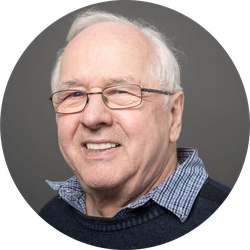 Dr. George Sawatzky is a professor emeritus in the physics department of the University of British Columbia He received his education at the University of Manitoba in Canada with a PhD in physics in 1969. He then spent 31 years first as a post doctoral fellow and then as a professor at the University of Groningen in the Netherlands in the departments of Physics and Chemistry. He was director of the Material Science Center at the University of Groningen for 8 years. More than 40 PhD students have graduated in his research group. In 2001 he returned to Canada with a Canada research chair at the University of British Columbia were he founded the Quantum Matter Institute in 2010 and together with Dr Bernhard Keimer the Mac Planck UBC materials research center which presently also includes the University of Tokyo.
Dr. George Sawatzky is a professor emeritus in the physics department of the University of British Columbia He received his education at the University of Manitoba in Canada with a PhD in physics in 1969. He then spent 31 years first as a post doctoral fellow and then as a professor at the University of Groningen in the Netherlands in the departments of Physics and Chemistry. He was director of the Material Science Center at the University of Groningen for 8 years. More than 40 PhD students have graduated in his research group. In 2001 he returned to Canada with a Canada research chair at the University of British Columbia were he founded the Quantum Matter Institute in 2010 and together with Dr Bernhard Keimer the Mac Planck UBC materials research center which presently also includes the University of Tokyo.
Dr. Sawatzky’s research focuses on the electronic structure of strongly correlated materials, such as magnetic materials, high temperature superconductors, and materials for molecular electronics applications; He combines theory and experiment to develop new insights and also new experimental techniques specifically x ray based spectroscopies.
Dr. Sawatzky ins member of the royal society of London, the royal society of Canada and the royal academy of sciences in the Netherlands were he was knighted in the order of the lion. He has received a number of awards including the Spinoza prize of the Netherlands. And has served in numerous advisories boards including the Max Institute of solid state physics in Stuttgart and the Korian Institute for basic science.
Confirmed invited speakers include:
Abstract IDs:
TBA
Large Scale Applications of Superconductors and Their Fundamental Technologies
 The benefits of superconductors include energy-saving and high field generation. This session will focus on applied superconductivity than the physics of superconductivity. The topics of the session include various applications of both high Tc superconductors and low Tc superconductors as well as their fundamental technologies.
The benefits of superconductors include energy-saving and high field generation. This session will focus on applied superconductivity than the physics of superconductivity. The topics of the session include various applications of both high Tc superconductors and low Tc superconductors as well as their fundamental technologies.
Session Topics Include (but not limited to):
- TBA
Session Organizer/Moderator
Arno Godeke
 Arno Godeke was educated in Mechanical Engineering, Physics Engineering, and Applied Physics in the Netherlands and the USA. He has broad multidisciplinary experience in mechanical, electrical, and cryogenic design, fabrication, and implementation; and in the materials science, large-scale application and physics of superconductors. He has worked in superconductivity in various positions at the University of Twente, The Netherlands, from 1992 through 2005. In 1998, he visited the NHMFL, Tallahassee, FL, USA, on a sabbatical, and worked at the University of Wisconsin, Madison, WI, USA, from 2002 to 2003 to obtain his PhD in Applied Physics from Twente in 2005. Since 2006, Dr. Godeke is at Lawrence Berkeley National Laboratory, Berkeley, CA, USA, where he is responsible for the conductor support for LBNL’s high-field magnets and LARP, the development of new high-field conductor and magnet technologies, and fundamental research through the education of young talent. He is currently a consultant with the independent firm Senior Consulting for Superconductivity.
Arno Godeke was educated in Mechanical Engineering, Physics Engineering, and Applied Physics in the Netherlands and the USA. He has broad multidisciplinary experience in mechanical, electrical, and cryogenic design, fabrication, and implementation; and in the materials science, large-scale application and physics of superconductors. He has worked in superconductivity in various positions at the University of Twente, The Netherlands, from 1992 through 2005. In 1998, he visited the NHMFL, Tallahassee, FL, USA, on a sabbatical, and worked at the University of Wisconsin, Madison, WI, USA, from 2002 to 2003 to obtain his PhD in Applied Physics from Twente in 2005. Since 2006, Dr. Godeke is at Lawrence Berkeley National Laboratory, Berkeley, CA, USA, where he is responsible for the conductor support for LBNL’s high-field magnets and LARP, the development of new high-field conductor and magnet technologies, and fundamental research through the education of young talent. He is currently a consultant with the independent firm Senior Consulting for Superconductivity.
Confirmed invited speakers include:
Abstract IDs:
TBA
Superconducting Motors and Applications in Electrical Engineering
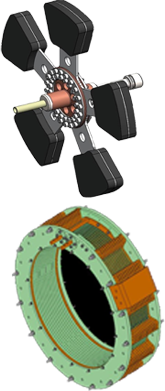 This session is intended to bring together the world’s renowned specialists in the field of high-temperature superconducting motors. Contributions may include simulations and machine designs, but the main purpose of this session is to show already built full-scale superconducting machines, prototypes with original structures, or other machines under construction.
This session is intended to bring together the world’s renowned specialists in the field of high-temperature superconducting motors. Contributions may include simulations and machine designs, but the main purpose of this session is to show already built full-scale superconducting machines, prototypes with original structures, or other machines under construction.
The presentations may also focus on technologies related to the development of superconducting machines, such as pulsed-field magnetization techniques, superconducting wires and tapes, torque tubes, slip rings, cryogenics, and rotating joints.
Any related applications for use in combination with superconducting motors are also welcome in this session such as flux pumps, HTS cables, cryogenic power electronics, HTS dynamos, superconducting bearings, and gears.
Session Topics Include (but not limited to):
- TBA
Session Organizer/Moderator
Taketsune Nakamura, Bruno Douine
 Taketsune Nakamura received the B.E., M.E. and Ph.D. degrees in electronic engineering from Kyushu University, Japan, in 1993, 1995 and 1998. He is now a Program-specific Professor with the Department of Electrical Engineering, Graduate School of Engineering, Kyoto University. He is the author of three books, more than 200 articles, and 20 inventions. His research interests include basic electro-mechanical energy conversion mechanism of rotating machines, motor drive techniques, motor system for transportation equipment, superconducting power application etc.
Taketsune Nakamura received the B.E., M.E. and Ph.D. degrees in electronic engineering from Kyushu University, Japan, in 1993, 1995 and 1998. He is now a Program-specific Professor with the Department of Electrical Engineering, Graduate School of Engineering, Kyoto University. He is the author of three books, more than 200 articles, and 20 inventions. His research interests include basic electro-mechanical energy conversion mechanism of rotating machines, motor drive techniques, motor system for transportation equipment, superconducting power application etc.
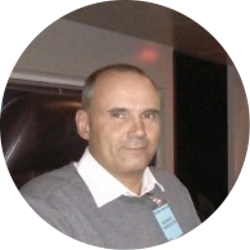 Bruno Douine was an associate professor of physical sciences from 1993 to 2003, then a lecturer in electrical engineering from 2003 to 2014 at Henri Poincaré University of Nancy I. Since 2014, he has been a full professor of electrical engineering at the University of Lorraine. He conducts his research within the GREEN laboratory in Nancy. His research focuses on the characterization of high-temperature superconducting (HTS) conductors, the determination of critical current and AC losses in HTS materials, and the applications of superconductors in electrical engineering (motors, cables, etc.).
Bruno Douine was an associate professor of physical sciences from 1993 to 2003, then a lecturer in electrical engineering from 2003 to 2014 at Henri Poincaré University of Nancy I. Since 2014, he has been a full professor of electrical engineering at the University of Lorraine. He conducts his research within the GREEN laboratory in Nancy. His research focuses on the characterization of high-temperature superconducting (HTS) conductors, the determination of critical current and AC losses in HTS materials, and the applications of superconductors in electrical engineering (motors, cables, etc.).
Confirmed invited speakers include:
Abstract IDs:
TBA
Topological Quantum Physics and Materials
 Discovery of topological phase transitions and topological phases by Berezinskii, Kosterlitz, Thouless and Haldane brought topological revolution in quantum matter and introduced new concepts and phenomena ranging from gauge theories highlighting the Aharonov-Bohm effect and quark confinement to quantum Hall effect, topological band basis of topological insulators and topological features of superconductivity, superinsulation, and superconductor-insulator transition. This session aims at presenting new developments, advances, and unresolved issues in the field of topological quantum matter. Bringing together leading scientists working in the diverse areas of topological quantum matter will enable us to outline the further role of topology in physics and the developments in realizing and exploring new topological phases of matter.
Discovery of topological phase transitions and topological phases by Berezinskii, Kosterlitz, Thouless and Haldane brought topological revolution in quantum matter and introduced new concepts and phenomena ranging from gauge theories highlighting the Aharonov-Bohm effect and quark confinement to quantum Hall effect, topological band basis of topological insulators and topological features of superconductivity, superinsulation, and superconductor-insulator transition. This session aims at presenting new developments, advances, and unresolved issues in the field of topological quantum matter. Bringing together leading scientists working in the diverse areas of topological quantum matter will enable us to outline the further role of topology in physics and the developments in realizing and exploring new topological phases of matter.
Session Topics Include (but not limited to):
- Topological insulators and superconductors
- Quantum effects due to the topology of physical space
- Topological quantum phase transitions
- Topological nature of the charge confinement
- Topological phases in Josephson junction arrays
- Topological features of the spontaneous Hall effect
- Topological properties of bilayer graphene
- Effective space curvature and gauge fields
To register your abstract for this session, please select “CS-57 Topological Quantum Physics and Materials” as one of the “Preferred Topics” during the abstract submission process.
Session Organizer/Moderator
Valerii Vinokur
 Valerii Vinokur is a Chief Technology Officer at Terra Quantum AG and an Adjunct Professor at City University of New York, USA. He received his PhD in 1979 at the Institute of the Solid State Physics, RAS, Chernogolovka, Russia. Valerii’s research interests include quantum topological matter, topological phase transitions, quantum information, vortex physics, superconductivity, quantum phase transitions, quantum transport, disordered materials, out of equilibrium phenomena, ultraquantum thermodynamics, and mesoscopic physics. He is a Foreign Member of Norwegian National Academy of Science and Letters and a Fellow of the American Physical Society. He is a Laureate of the Fritz London Memorial Prize, International Abrikosov Prize, International John Bardeen Prize, and a multiple recipient of the Alexander von Humboldt Research Award.
Valerii Vinokur is a Chief Technology Officer at Terra Quantum AG and an Adjunct Professor at City University of New York, USA. He received his PhD in 1979 at the Institute of the Solid State Physics, RAS, Chernogolovka, Russia. Valerii’s research interests include quantum topological matter, topological phase transitions, quantum information, vortex physics, superconductivity, quantum phase transitions, quantum transport, disordered materials, out of equilibrium phenomena, ultraquantum thermodynamics, and mesoscopic physics. He is a Foreign Member of Norwegian National Academy of Science and Letters and a Fellow of the American Physical Society. He is a Laureate of the Fritz London Memorial Prize, International Abrikosov Prize, International John Bardeen Prize, and a multiple recipient of the Alexander von Humboldt Research Award.
Invited speakers include:
Abstract IDs:
TBA
Correlated Quantum Matter
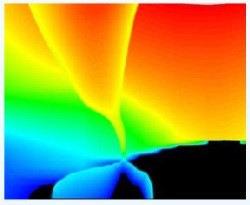 Correlated quantum systems have proven to provide a fertile ground from which new concepts and new challenges have grown. This session emphasizes the fundamental physics of electron correlations that often produce new states of matter, an exciting frontier in condensed matter physics. The main topics include, but are not limited to, heavy fermion, unconventional superconductivity, Kondo physics, topological Kondo systems and quantum phase transition. Introduction of new materials that show correlated behavior will be also discussed.
Correlated quantum systems have proven to provide a fertile ground from which new concepts and new challenges have grown. This session emphasizes the fundamental physics of electron correlations that often produce new states of matter, an exciting frontier in condensed matter physics. The main topics include, but are not limited to, heavy fermion, unconventional superconductivity, Kondo physics, topological Kondo systems and quantum phase transition. Introduction of new materials that show correlated behavior will be also discussed.
Session Topics Include (but not limited to):
- TBA
Session Organizer/Moderator
Tuson Park

2013-present: Director of the Center for Quantum Materials and Superconductivity, Sungkyunkwan University, Korea
2008-present: Professor, Department of Physics, Sungkyunkwan University, Korea
2016- present: Fellow of Korean Physical Society
Invited speakers include:
Abstract IDs:
TBA
Cryogenic Magnonics
 Hybrid systems with the intertwined charge and spin degrees of freedom and allowing for a high-speed flux transport and magnetic moment variation are promising for magnonic, fluxonic and spintronic applications. The magneto-dynamic and electronic performance of such systems can be engineered by a wide range of parameters, including the choice of constituent materials, the shape of the sample and the orientation and strength of applied fields. Low-temperature microwave magnetic circuits are rapidly developing for probing the physics of magnonic systems at the quantum level. Of particular interest are hybrid nanoscale systems whose components exhibit cooperative ground states, such as superconductivity and ferromagnetism, and possess a rich choice of linear and nonlinear properties in the radiofrequency and microwave range.
Hybrid systems with the intertwined charge and spin degrees of freedom and allowing for a high-speed flux transport and magnetic moment variation are promising for magnonic, fluxonic and spintronic applications. The magneto-dynamic and electronic performance of such systems can be engineered by a wide range of parameters, including the choice of constituent materials, the shape of the sample and the orientation and strength of applied fields. Low-temperature microwave magnetic circuits are rapidly developing for probing the physics of magnonic systems at the quantum level. Of particular interest are hybrid nanoscale systems whose components exhibit cooperative ground states, such as superconductivity and ferromagnetism, and possess a rich choice of linear and nonlinear properties in the radiofrequency and microwave range.
This Special Session is aimed at strengthening cryogenic magnonics as a rapidly developing research area at the interface between magnonics, fluxonics and spintronics.
Session Topics Include (but not limited to):
•Magnetic flux and spin transport in nanoscale systems
•Spin waves in ferromagnet-superconductor hybrids
•Magnonics at low temperatures
•Spin currents in superconductors
•Cryogenic magnonic and fluxonic devices
To register your abstract for this session, please select “CS-9 Cryogenic magnonics” as one of the “Preferred Topics” during the abstract submission process.
Session Organizer/Moderator
Ahmad Awad
 Ahmad A. Awad, Since March 2023, has been serving as an Associate Professor at Tohoku University’s Research Institute of Electrical Communication in Japan. He also holds a position of 1st Research Engineer at the University of Gothenburg, Sweden, where he focused his research on magnetooptical high frequency dynamics, Spin Hall nanooscillators and stimulated spin dynamics. He did one-year postdoctoral research, 2013, in micromagnetics at Seoul National University after he earned his Ph.D. in Physics in 2012 from the Autonomous University of Madrid, Spain.
Ahmad A. Awad, Since March 2023, has been serving as an Associate Professor at Tohoku University’s Research Institute of Electrical Communication in Japan. He also holds a position of 1st Research Engineer at the University of Gothenburg, Sweden, where he focused his research on magnetooptical high frequency dynamics, Spin Hall nanooscillators and stimulated spin dynamics. He did one-year postdoctoral research, 2013, in micromagnetics at Seoul National University after he earned his Ph.D. in Physics in 2012 from the Autonomous University of Madrid, Spain.
Invited speakers include:
Abstract IDs:
TBA
Vortex Dynamics in Superconducting Patterned Structures and Devices: Simulation, Experiment, and Imaging
 This session focuses on the structure and dynamics of superconducting vortex matter in patterned superconductors and devices. The investigation of such structure is important for, e.g., circuitry based on superconducting wires and Josephson junctions (or superconducting logic devices) having the potential to yield energy-efficient and/or high-speed computing devices or ultra-sensitive sensors. Talks in this session feature, both, the latest theoretical and experimental developments in the field.
This session focuses on the structure and dynamics of superconducting vortex matter in patterned superconductors and devices. The investigation of such structure is important for, e.g., circuitry based on superconducting wires and Josephson junctions (or superconducting logic devices) having the potential to yield energy-efficient and/or high-speed computing devices or ultra-sensitive sensors. Talks in this session feature, both, the latest theoretical and experimental developments in the field.
Session Topics Include (but not limited to):
•TDGL simulation in patterned superconductors and devices
•MD simulations of vortices in patterned superconductors and devices
•Transport characterization of vortex matter in patterned SC
•Static and dynamic imaging of Abrikosov vortices in patterned SC
•Behavior of vortex matter in confinement
To register your abstract for this session, please select “CS-61 Vortex Dynamics in Superconducting Patterned Structures and Devices: Simulation, Experiment, and Imaging” as one of the “Preferred Topics” during the abstract submission process.
Session Organizer/Moderator
Andreas Glatz, Milorad Milošević , Boldizsár Jankó
 Andreas Glatz is a physicist at the Materials Science Division and professor at the Department of Physics of Northern Illinois University. His work in theoretical and computational condensed matter physics and materials science is focused on dynamical processes in quantum and nano-materials. In particular, he was leading the SciDAC partnership on Optimizing superconductor transport properties through large-scale simulation with the main objective to develop and apply novel methods for optimizing superconductors for energy applications using large-scale computational algorithms and tools. The resulting numerical tools paved the way for a systematic method to design superconductors with high critical currents.
Andreas Glatz is a physicist at the Materials Science Division and professor at the Department of Physics of Northern Illinois University. His work in theoretical and computational condensed matter physics and materials science is focused on dynamical processes in quantum and nano-materials. In particular, he was leading the SciDAC partnership on Optimizing superconductor transport properties through large-scale simulation with the main objective to develop and apply novel methods for optimizing superconductors for energy applications using large-scale computational algorithms and tools. The resulting numerical tools paved the way for a systematic method to design superconductors with high critical currents.
 Milorad Milosevic is professor at the Department of Physics at University of Antwerp, Belgium. His internal appointments:
Milorad Milosevic is professor at the Department of Physics at University of Antwerp, Belgium. His internal appointments:
•Administrative Bodies
-Member, Physics Education Committee (voting member)
-Member, Departmental Council for Physics (voting member)
-Member, Faculty Meeting for the Faculty of Sciences (voting member)
-Member, Educational Committee for Physics (voting member)
•Mandates and Coordinations
-DOCOP Coordinator, Physics (primary holder)
-Erasmus Coordinator, Physics (primary holder)
•Expert Committees
-Member, Master’s Examination Committee in Physics (voting member)
-Member, Steering Committee for Internationalization PLUS (voting member)
 Boldizsar Janko is professor at the Department of Physics & Astronomy at University of Notre Dame, USA. The condensed matter theory group led by Prof. Jankó is actively participating in several major developments of this field, such as (i) spin control, manipulation and transport (spintronics), (ii) nanoscale superconductivity and magnetism in metallic and semiconductor quantum dots and quantum wires, and (iii) novel superconductivity (MgB2, high temperature superconductors) and magnetism (diluted magnetic semiconductors). Our theory projects within spintronics and nanoscience are performed parallel to and in close collaboration with the experimental research effort of our Nanoscale Interdisciplinary Research Team (NIRT). This team, led by Professor Jankó, brings together researchers from four institutions (Notre Dame, Argonne National Lab, University of Illinois-Chicago and Duke University), with complementary expertise in superconductivity, magnetism and semiconductor science and technology. Within the NIRT project our research focuses on hybrid materials, such as the submicron-patterned superconductor-diluted magnetic semiconductor bi-layers. These structures are excellent candidates for hosting spin polarized, Zeeman localized electronic states which in turn could function as building blocks for spintronics applications. Our research is supported by the National Science Foundation, Department of Energy, and the Alfred P. Sloan Foundation.
Boldizsar Janko is professor at the Department of Physics & Astronomy at University of Notre Dame, USA. The condensed matter theory group led by Prof. Jankó is actively participating in several major developments of this field, such as (i) spin control, manipulation and transport (spintronics), (ii) nanoscale superconductivity and magnetism in metallic and semiconductor quantum dots and quantum wires, and (iii) novel superconductivity (MgB2, high temperature superconductors) and magnetism (diluted magnetic semiconductors). Our theory projects within spintronics and nanoscience are performed parallel to and in close collaboration with the experimental research effort of our Nanoscale Interdisciplinary Research Team (NIRT). This team, led by Professor Jankó, brings together researchers from four institutions (Notre Dame, Argonne National Lab, University of Illinois-Chicago and Duke University), with complementary expertise in superconductivity, magnetism and semiconductor science and technology. Within the NIRT project our research focuses on hybrid materials, such as the submicron-patterned superconductor-diluted magnetic semiconductor bi-layers. These structures are excellent candidates for hosting spin polarized, Zeeman localized electronic states which in turn could function as building blocks for spintronics applications. Our research is supported by the National Science Foundation, Department of Energy, and the Alfred P. Sloan Foundation.
Invited speakers include:
Abstract IDs:
TBA
The studies of electronic instabilities in kagome materials using spectroscopic methods
The kagome lattice exhibits topological band crossings, flat bands, and multiple van Hove points, which in combination with geometric frustration, give rise to a plethora of electronic phases and instabilities, including quantum spin liquids, unconventional superconductivity, and charge density waves. The interplay between distinct electronic instabilities in kagome lattice materials may lead to emergent electronic nematicity, orbital magnetism, chiral transport, and time-reversal symmetry-breaking, presenting quantum material platforms for discovering new states of matter and physical properties.
This session focuses on the study of electronic instabilities in kagome lattice materials using spectroscopic methods, which not only probes the ground state, but also proximate instabilities that affect the macroscopic properties. Leveraging a combination of state-of-the-art spectroscopic techniques and the rich electronic instabilities of kagome lattice materials, this session aims to foster a coherent understanding of the novel physics in kagome lattice materials and beyond.
Session Topics Include (but not limited to):
•Electronic structures of kagome metals
•Magnetism in kagome lattice materials
•Kagome superconductors
•Unconventional symmetry-breakings in kagome lattice materials
To register your abstract for this session, please select “CS-55 The studies of electronic instabilities in kagome materials using spectroscopic methods” as one of the “Preferred Topics” during the abstract submission process.
Session Organizer/Moderator
Ming Shi, Yu Song, Yang Liu
 Ming Shi is a professor in Zhejiang University. He received his PhD degree from Geneva University in 1996. Afterwards he worked in Paul Scherrer Institute, Switzerland, as a postdoc, scientist and senior scientist from 1996 to 2023. He joined the School of Physics at Zhejiang University in 2023. Ming Shi’s research focuses on the behavior of electrons in novel quantum materials and strongly correlated systems. The primary interest is to explore the electronic excitations and properties associated with various emergent and/or macroscopic quantum phenomena, such as quantum (spin) Hall state and superconducting state. Combining photoemission spectroscopy with other experimental means we attempt to unveil the micro mechanism of various instabilities and phenomena arising from electron-electron correlation effects, the coupling between electrons and collective excitations, and the interplay of the charge, spin, orbital and lattice in solids.
Ming Shi is a professor in Zhejiang University. He received his PhD degree from Geneva University in 1996. Afterwards he worked in Paul Scherrer Institute, Switzerland, as a postdoc, scientist and senior scientist from 1996 to 2023. He joined the School of Physics at Zhejiang University in 2023. Ming Shi’s research focuses on the behavior of electrons in novel quantum materials and strongly correlated systems. The primary interest is to explore the electronic excitations and properties associated with various emergent and/or macroscopic quantum phenomena, such as quantum (spin) Hall state and superconducting state. Combining photoemission spectroscopy with other experimental means we attempt to unveil the micro mechanism of various instabilities and phenomena arising from electron-electron correlation effects, the coupling between electrons and collective excitations, and the interplay of the charge, spin, orbital and lattice in solids.
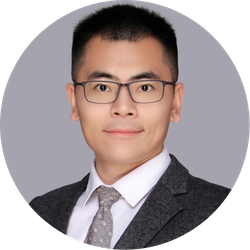 Yu Song obtained his PhD degree from Rice University in 2017. After a postdoctoral appointment at University of California, Berkeley from 2017 to 2020, he joined the School of Physics at Zhejiang University in 2020. Yu Song is interested in understanding the properties and mechanisms of quantum materials through the lens of structural and magnetic correlations probed by neutron and X-ray scattering, including the interplay between charge, orbital, and magnetism in unconventional superconductors, the character and origin of magnetic excitations in strongly correlated metals, and the mechanisms of unconventional charge-density waves.
Yu Song obtained his PhD degree from Rice University in 2017. After a postdoctoral appointment at University of California, Berkeley from 2017 to 2020, he joined the School of Physics at Zhejiang University in 2020. Yu Song is interested in understanding the properties and mechanisms of quantum materials through the lens of structural and magnetic correlations probed by neutron and X-ray scattering, including the interplay between charge, orbital, and magnetism in unconventional superconductors, the character and origin of magnetic excitations in strongly correlated metals, and the mechanisms of unconventional charge-density waves.
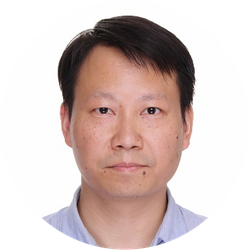 Prof. Yang Liu is currently an associate professor at the school of Physics at Zhejiang University. He got his Ph. D in physics from University of Illinois Urbana-Champaign in the US in 2010. He then worked as a postdoc in Argonne National lab and Cornell University. He joined Zhejiang University in October 2015. His research interest is mainly focused on correlated and low-dimensional electron systems, where he uses a combination of thin film growth with molecular beam epitaxy (MBE) and in-situ angle resolved photoemission spectroscopy (ARPES). His research also utilizes X-ray spectroscopy and scattering techniques (based on synchrotron facilities) to study lattice structures, electronic structures and orderings in quantum materials.
Prof. Yang Liu is currently an associate professor at the school of Physics at Zhejiang University. He got his Ph. D in physics from University of Illinois Urbana-Champaign in the US in 2010. He then worked as a postdoc in Argonne National lab and Cornell University. He joined Zhejiang University in October 2015. His research interest is mainly focused on correlated and low-dimensional electron systems, where he uses a combination of thin film growth with molecular beam epitaxy (MBE) and in-situ angle resolved photoemission spectroscopy (ARPES). His research also utilizes X-ray spectroscopy and scattering techniques (based on synchrotron facilities) to study lattice structures, electronic structures and orderings in quantum materials.
Invited speakers include:
Abstract IDs:
TBA
Computing/Sensing with Imperfect Quantum Hardware
The focus session “Computing/Sensing with Imperfect Quantum Hardware” explores how quantum computing and sensing can still be effective despite the imperfections in current quantum hardware. Here are some key points:
Quantum Hardware Imperfections: Current quantum processors, especially those based on superconducting qubits, are prone to errors due to material defects, imperfect control systems, and quantum information leakage. These imperfections can cause decoherence, which is the loss of quantum information.
Decoherence Pathways: Researchers are identifying major decoherence pathways in superconducting quantum processors. Understanding these pathways helps in developing techniques to mitigate their effects and improve the performance of quantum computations.
Maximizing Computing Power: Techniques are being developed to maximize the computing power of imperfect qubits. This includes error correction methods, dynamical decoupling, and other quantum control strategies.
Quantum Sensing with Imperfect Control: Quantum sensing can achieve high precision even with imperfect control. For example, in frequency estimation tasks, control strategies can be designed to recover optimal precision despite uncertainties in control pulses and interrogation times.
Applications: Recent quantum computations have been used to determine chemical energies, solve the transverse-field Ising model, study scrambling dynamics in black holes, and analyze nuclear scattering. These applications demonstrate the potential of quantum computing even with current hardware limitations.
This field of the focus session is rapidly evolving, and ongoing research aims to further enhance the reliability and precision of quantum computing and sensing technologies.
Session Topics Include (but not limited to):
•TBA
To register your abstract for this session, please select “CS-65 Computing/Sensing with Imperfect Quantum Hardware” as one of the “Preferred Topics” during the abstract submission process.
Session Organizer/Moderator
Irfan Siddiqi
 Irfan Siddiqi is the head of the Physics Department at UC Berkeley where he is the Douglas Giancoli Chair Professor. He is also a professor of Electrical Engineering and Computer Science, and a Faculty Scientist at Lawrence Berkeley National Laboratory. Irfan received his undergraduate degree in chemistry & physics at Harvard University, and a PhD in applied physics from Yale University and joined the Berkeley Faculty in 2005. His research group focuses on the development of advanced superconducting circuits for quantum information processing, including computation and metrology. Irfan is also the director of the Advanced Quantum Testbed at LBNL, which develops and operates full-stack quantum computing platforms based on superconducting qubits. He is known for key contributions to quantum measurement science, including real time observations of wavefunction collapse, tests of the Heisenberg uncertainty principle, quantum feedback, and the development of a range of microwave frequency, quantum noise limited amplifiers and detectors. Irfan is co-author of the book Quantum Measurement: Theory and Practice, a fellow of the American Academy of Arts and Sciences and the American Physical Society. He is the recipient of the APS George E. Valley prize and the Joseph F. Keithley Award. He is also a recipient of the Berkeley Distinguished Teaching Award—the university’s highest award for commitment to pedagogy.
Irfan Siddiqi is the head of the Physics Department at UC Berkeley where he is the Douglas Giancoli Chair Professor. He is also a professor of Electrical Engineering and Computer Science, and a Faculty Scientist at Lawrence Berkeley National Laboratory. Irfan received his undergraduate degree in chemistry & physics at Harvard University, and a PhD in applied physics from Yale University and joined the Berkeley Faculty in 2005. His research group focuses on the development of advanced superconducting circuits for quantum information processing, including computation and metrology. Irfan is also the director of the Advanced Quantum Testbed at LBNL, which develops and operates full-stack quantum computing platforms based on superconducting qubits. He is known for key contributions to quantum measurement science, including real time observations of wavefunction collapse, tests of the Heisenberg uncertainty principle, quantum feedback, and the development of a range of microwave frequency, quantum noise limited amplifiers and detectors. Irfan is co-author of the book Quantum Measurement: Theory and Practice, a fellow of the American Academy of Arts and Sciences and the American Physical Society. He is the recipient of the APS George E. Valley prize and the Joseph F. Keithley Award. He is also a recipient of the Berkeley Distinguished Teaching Award—the university’s highest award for commitment to pedagogy.
Invited speakers include:
Abstract IDs:
TBA
Nonadiabatic Dynamics in Materials
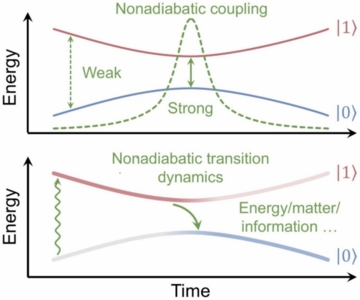 Nonadiabatic transition phenomena dominate the performance of most modern technologies, ranging from solar energy harvesting and utilization to electronics and optoelectronics. Understanding and manipulating these far-from-equilibrium processes for specific purposes play a pivotal role in numerous technological innovations, which is fundamentally determined by the interplay between energy/matter/information carriers and multiple factors, such as excitation, lattice vibration, and external field, in materials. This session will cover a wide range of topics on nonadiabatic dynamics in materials, from fundamental theory/methodologies to realistic applications, with the aim of assembling interdisciplinary experts working in this field.
Nonadiabatic transition phenomena dominate the performance of most modern technologies, ranging from solar energy harvesting and utilization to electronics and optoelectronics. Understanding and manipulating these far-from-equilibrium processes for specific purposes play a pivotal role in numerous technological innovations, which is fundamentally determined by the interplay between energy/matter/information carriers and multiple factors, such as excitation, lattice vibration, and external field, in materials. This session will cover a wide range of topics on nonadiabatic dynamics in materials, from fundamental theory/methodologies to realistic applications, with the aim of assembling interdisciplinary experts working in this field.
Session Topics Include (but not limited to):
- TBA
Session Organizer/Moderator
Andrey Vasenko – Jian Liu – Run Long
 Andrey Vasenko works in the field of computational materials science. He received his M.S. from the Moscow State University (Russia) in 2002, Ph.D. from the Chalmers University of Technology (Sweden) in 2006, and a habilitated doctorate degree from the Grenoble Alpes University (France) in 2015. He has performed his postdoctoral research at the University of Twente (Netherlands), Laue-Langevin Institute (France), and Grenoble Alpes University (France). Then he became a professor at the HSE University (Russia) in 2015. He is also a visiting professor at Donostia International Physics Center (Spain).
Andrey Vasenko works in the field of computational materials science. He received his M.S. from the Moscow State University (Russia) in 2002, Ph.D. from the Chalmers University of Technology (Sweden) in 2006, and a habilitated doctorate degree from the Grenoble Alpes University (France) in 2015. He has performed his postdoctoral research at the University of Twente (Netherlands), Laue-Langevin Institute (France), and Grenoble Alpes University (France). Then he became a professor at the HSE University (Russia) in 2015. He is also a visiting professor at Donostia International Physics Center (Spain).
 Jian Liu is the Peking University Boya Distinguished Professor. He received his B.S. from the University of Science & Technology of China in 2000 and Ph.D. from the University of Illinois at Urbana−Champaign in 2005. He then did postdoctoral work at the University of California, Berkeley, and was a research associate at Stanford University before he joined Peking University in 2012. He was the recipient of the 2019 Pople Medal of the Asia-Pacific Association of Theoretical and Computational Chemists. His research interests have been focused on the development of phase space formulations of quantum mechanics and trajectory-based methods for studying statistical mechanics and dynamics of real complex (large) molecular systems.
Jian Liu is the Peking University Boya Distinguished Professor. He received his B.S. from the University of Science & Technology of China in 2000 and Ph.D. from the University of Illinois at Urbana−Champaign in 2005. He then did postdoctoral work at the University of California, Berkeley, and was a research associate at Stanford University before he joined Peking University in 2012. He was the recipient of the 2019 Pople Medal of the Asia-Pacific Association of Theoretical and Computational Chemists. His research interests have been focused on the development of phase space formulations of quantum mechanics and trajectory-based methods for studying statistical mechanics and dynamics of real complex (large) molecular systems.
 Run Long is a Changjiang Distinguished Professor at Beijing Normal University. He earned his Ph.D. from Shandong University, China, in 2008. Following this, he conducted postdoctoral research at University College Dublin (Ireland) and the University of Rochester (USA) under the support of the Irish Research Council and a Marie Curie Fellowship. In 2012, he was appointed as a lecture at University College Dublin. His research primarily focuses on excitation dynamics in nanoscale systems, particularly on energy and charge transfer dynamics in condensed phases and at interfaces. He currently serves as a senior editor for The Journal of Physical Chemistry Letters.
Run Long is a Changjiang Distinguished Professor at Beijing Normal University. He earned his Ph.D. from Shandong University, China, in 2008. Following this, he conducted postdoctoral research at University College Dublin (Ireland) and the University of Rochester (USA) under the support of the Irish Research Council and a Marie Curie Fellowship. In 2012, he was appointed as a lecture at University College Dublin. His research primarily focuses on excitation dynamics in nanoscale systems, particularly on energy and charge transfer dynamics in condensed phases and at interfaces. He currently serves as a senior editor for The Journal of Physical Chemistry Letters.
Invited speakers include:
Oleg Prezhdo (University of Southern California, USA)
Wenjian Liu (Shandong University, China)
Daniel Escudero (KU Leuven, Belgium)
Dongyu Liu (MIEM, HSE University, Russia)
Jin-Jian Zhou (Beijing Institute of Technology, China)
Andrey Vasenko (HSE University, Russia)
Yu Zhai (Peking University, China)
Jing-Tao Lu (Huazhong University of Science and Technology, China)
Jin Zhao (University of Science and Technology of China, China)
JIAN LIU (Peking University, China)
Zhenggang Lan (South China Normal University, China)
Abstract IDs:
TBA
Abstract IDs:
TBA
Self-Organization and Transport in Bio-inspired Active Magnetic Colloids
 This session will be focused on out-of-equilibrium dynamics and self-organization in magnetic colloids. The tendency of simple building blocks to organize into complex architectures is a unique research opportunity for materials science. This session includes contributions from experimentalists and theorists working with various bio-inspired magnetic colloidal systems, and covers a broad discussion on active magnetic colloidal materials, both synthetic and living, with the emphasis on novel self-assembled phases and tunable transport properties under out-of-equilibrium conditions.
This session will be focused on out-of-equilibrium dynamics and self-organization in magnetic colloids. The tendency of simple building blocks to organize into complex architectures is a unique research opportunity for materials science. This session includes contributions from experimentalists and theorists working with various bio-inspired magnetic colloidal systems, and covers a broad discussion on active magnetic colloidal materials, both synthetic and living, with the emphasis on novel self-assembled phases and tunable transport properties under out-of-equilibrium conditions.
Session Topics Include (but not limited to):
- TBA
Session Organizer/Moderator
Alexey Snezhko
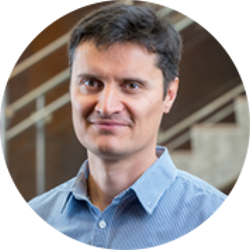 Alexey Snezhko is a Scientist and Group Leader at the Argonne National Laboratory, USA. His research focuses on out-of-equilibrium self-assembly and collective dynamics at the microscale and emergent phenomena in complex systems.
Alexey Snezhko is a Scientist and Group Leader at the Argonne National Laboratory, USA. His research focuses on out-of-equilibrium self-assembly and collective dynamics at the microscale and emergent phenomena in complex systems.
Invited speakers include:
Abstract IDs:
TBA
Superconducting Thin Films and Interface Superconductivity
 The focus of this session is on advanced studies of novel superconducting films, hetero-structures, surfaces, and interfaces. We will discuss thin film preparation, physical properties, interface superconductivity, and underlying physical mechanism, as well as superconductor-metal-insulator transition and emerging concepts and potential devices.
The focus of this session is on advanced studies of novel superconducting films, hetero-structures, surfaces, and interfaces. We will discuss thin film preparation, physical properties, interface superconductivity, and underlying physical mechanism, as well as superconductor-metal-insulator transition and emerging concepts and potential devices.
Session Topics Include (but not limited to):
- TBA
Session Organizer/Moderator
Davor Pavuna – Neven Barisic
 Following an M.Sc (Zagreb, Croatia) Ph.D. (Leeds, UK) and Post-Doc (Grenoble, France) on properties of disordered materials since 1986. Prof. Davor Pavuna is leading the High-Tc superconductivity group at Ecole Polytechnique Federale de Lausanne (EPFL), Switzerland. His interests are mainly in novel superconducting materials, thin films and their properties, interface superconductivity and metal-insulator transition.
Following an M.Sc (Zagreb, Croatia) Ph.D. (Leeds, UK) and Post-Doc (Grenoble, France) on properties of disordered materials since 1986. Prof. Davor Pavuna is leading the High-Tc superconductivity group at Ecole Polytechnique Federale de Lausanne (EPFL), Switzerland. His interests are mainly in novel superconducting materials, thin films and their properties, interface superconductivity and metal-insulator transition.

Neven Žitomir Barišić is an associate professor at the Faculty of Science and Mathematics (PMF) of the University of Zagreb and at the Technical University of Vienna (TU Wien), Austria. An exceptionally creative researcher, who gathered and honed his experiences in many recognized world laboratories, went through all the steps in his development to now be recognized as a renowned scientist: from the creation of a doctoral thesis, cooperation with distinguished scientists, the use of numerous experimental techniques necessary for the elucidation of a certain physical problem, to their presentation in publications and numerous lectures around the world.
The focus of his scientific activity today is the search and study of new electronic materials, which are of fundamental scientific importance, but also have great potential for application.
Invited speakers include:
Abstract IDs:
TBA
Frontiers in Magnetization Dynamics and Magnonics
 This session will discuss recent advances in magnetization dynamics in thin films and nanostructure devices, magnonics and spin pumping, Spin currents and spin torque devices using a broad variety of experimental techniques.
This session will discuss recent advances in magnetization dynamics in thin films and nanostructure devices, magnonics and spin pumping, Spin currents and spin torque devices using a broad variety of experimental techniques.
Session Topics Include (but not limited to):
- TBA
Session Organizer/Moderator
Farkhad Aliev, Ahmad Awad
 Farkhad G. Aliev: received the M.S. and Ph.D degrees in physics from M. V. Lomonosov Moscow State University in 1981 and 1984 respectively. From 1984 till 1996 he worked as a junior and then senior researcher at M. V. Lomonosov Moscow State University. He also spent several years as a visiting professor with at Universidad Autónoma de Madrid (1991-1995) and as research scientist at Katholieke University Leuven (1995-1998). From 1999 he works at the Faculty of Science at UAM where he has created a research group MAGNETRANS specialized in microwave dynamic response and noise in magnetic and superconducting nanostructures. He has been director of 10 PhD thesis. He is a co-author of more than 150 scientific publications indexed in Web of Science and 4 patents. He has presented more than 50 invited talks at international conferences and co-organized four international Schools and Conferences. Actually, he serves as associated editor for Scientific Reports.
Farkhad G. Aliev: received the M.S. and Ph.D degrees in physics from M. V. Lomonosov Moscow State University in 1981 and 1984 respectively. From 1984 till 1996 he worked as a junior and then senior researcher at M. V. Lomonosov Moscow State University. He also spent several years as a visiting professor with at Universidad Autónoma de Madrid (1991-1995) and as research scientist at Katholieke University Leuven (1995-1998). From 1999 he works at the Faculty of Science at UAM where he has created a research group MAGNETRANS specialized in microwave dynamic response and noise in magnetic and superconducting nanostructures. He has been director of 10 PhD thesis. He is a co-author of more than 150 scientific publications indexed in Web of Science and 4 patents. He has presented more than 50 invited talks at international conferences and co-organized four international Schools and Conferences. Actually, he serves as associated editor for Scientific Reports.
 Ahmad A. Awad, Since March 2023, has been serving as an Associate Professor at Tohoku University’s Research Institute of Electrical Communication in Japan. He also holds a position of 1st Research Engineer at the University of Gothenburg, Sweden, where he focused his research on magnetooptical high frequency dynamics, Spin Hall nanooscillators and stimulated spin dynamics. He did one-year postdoctoral research, 2013, in micromagnetics at Seoul National University after he earned his Ph.D. in Physics in 2012 from the Autonomous University of Madrid, Spain.
Ahmad A. Awad, Since March 2023, has been serving as an Associate Professor at Tohoku University’s Research Institute of Electrical Communication in Japan. He also holds a position of 1st Research Engineer at the University of Gothenburg, Sweden, where he focused his research on magnetooptical high frequency dynamics, Spin Hall nanooscillators and stimulated spin dynamics. He did one-year postdoctoral research, 2013, in micromagnetics at Seoul National University after he earned his Ph.D. in Physics in 2012 from the Autonomous University of Madrid, Spain.
Invited speakers include:
Abstract IDs:
TBA
Quantum Information Technology and Applications
 Quantum supremacy has been demonstrated by a quantum computer based on superconductive qubits. This session focuses on the vision of the future quantum internet compatible with the novel quantum computers. We will be talking about fundamental physics phenomena and the prospect of their implementation in the future real life devices, systems and related infrastructure.
Quantum supremacy has been demonstrated by a quantum computer based on superconductive qubits. This session focuses on the vision of the future quantum internet compatible with the novel quantum computers. We will be talking about fundamental physics phenomena and the prospect of their implementation in the future real life devices, systems and related infrastructure.
Session Topics Include (but not limited to):
- TBA
Session Organizer/Moderator
Joanna Skiba-Szymanska
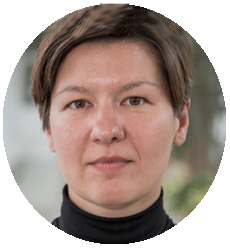 Joanna Skiba-Szymanska received her MSc in electronics engineering from the Wroclaw University of Technology (Poland) followed by PhD in semiconductor physics from Sheffield University (UK) in 2008. Since then she has been working at Toshiba Europe Limited in Cambridge and collaborating amongst others with Cambridge University (UK). She is an expert in single and entangled photon light emitters for quantum communication applications.
Joanna Skiba-Szymanska received her MSc in electronics engineering from the Wroclaw University of Technology (Poland) followed by PhD in semiconductor physics from Sheffield University (UK) in 2008. Since then she has been working at Toshiba Europe Limited in Cambridge and collaborating amongst others with Cambridge University (UK). She is an expert in single and entangled photon light emitters for quantum communication applications.
Invited speakers include:
Abstract IDs:
TBA
Recent Progresses in Renewable Energy Technology and Its Implication: Materials Perspectives
 Energy plays a pivotal role in our daily lives, its demand is on the rise more than ever and it is essential for the economic development of any country. Electric energy is of particularly vital importance for sustainable development. Forecast of energy demand is highly important and careful planning plays an essential role to meet the needs of the society in the future. Renewable, as well as other vital sources of energy, enable the existence of diversity. The use of these various sources in one grid creates some unexpected problems which, combined with global warming, could cause Earth to heat up by a few degrees in the near future. This is a particular concern, should non-renewable energy resources continue to be used within the next 30-40 years. Recent progress in the introduction of renewable energy and various associated technologies will be discussed in this session in addition to photovoltaic, solar thermal, wind, thermoelectricity and other technologies, particular attention will be paid to applications of superconductors and magnetic materials in the energy sector.
Energy plays a pivotal role in our daily lives, its demand is on the rise more than ever and it is essential for the economic development of any country. Electric energy is of particularly vital importance for sustainable development. Forecast of energy demand is highly important and careful planning plays an essential role to meet the needs of the society in the future. Renewable, as well as other vital sources of energy, enable the existence of diversity. The use of these various sources in one grid creates some unexpected problems which, combined with global warming, could cause Earth to heat up by a few degrees in the near future. This is a particular concern, should non-renewable energy resources continue to be used within the next 30-40 years. Recent progress in the introduction of renewable energy and various associated technologies will be discussed in this session in addition to photovoltaic, solar thermal, wind, thermoelectricity and other technologies, particular attention will be paid to applications of superconductors and magnetic materials in the energy sector.
Session Topics Include (but not limited to):
- TBA
Session Organizer/Moderator
German F. De la Fuente
 German F.de la Fuente is a Research Professor at the Spanish National Research Council (CSIC) working at the Aragon Institute for Materials Science (ICMA). He started the Laser Applications Laboratory at ICMA about 25 years ago, a reference in Laser Ablation and Melting. He is a co-inventor of 10 patents, co-author of 140+ scientific papers and has coordinated a large number of projects based on the use of laser technology developed in his research group.
German F.de la Fuente is a Research Professor at the Spanish National Research Council (CSIC) working at the Aragon Institute for Materials Science (ICMA). He started the Laser Applications Laboratory at ICMA about 25 years ago, a reference in Laser Ablation and Melting. He is a co-inventor of 10 patents, co-author of 140+ scientific papers and has coordinated a large number of projects based on the use of laser technology developed in his research group.
Invited speakers include:
Abstract IDs:
TBA
Ferrites: Electronics and Renewable Energy Applications

Ferrites are fascinating materials with a wide range of applications in both electronics and renewable energy. Here are a few examples but not limited to:
Electro
nics Applications
-
Transformers and Inductors: Soft ferrites are commonly used in the cores of transformers and inductors due to their high magnetic permeability and low electrical conductivity, which helps in reducing eddy current losses.
-
Magnetic/ Electric Data Storage: Ferrites are used in magnetic storage devices such as hard drives and magnetic tapes. Ferrites are used in electric based data storage/processing devices su
ch as memristors and Re-RAMs.
-
Microwave Components: Ferrites are used in various microwave components, including isolators and circulators, due to their ability to operate at high frequencies.
Renewable
Energy Applications
-
Energy Harvesting: Ferrites play a crucial role in energy harvesting technologies. They are used in the development of components for various energy sources, including hydroelectric cells.
-
Solar Cells/Fuel Cells: Ferrites are being explored for use in solar/fuel cells to improve their efficiency and reduce costs.
-
Wind Turbines: Ferrite magnets are used in the generators of wind turbines due to their high magnetic strength and durability.
Ferrites are truly versatile materials that are making significant contributions to both traditional electronics, cutting edge electronics and the emerging field of renewable energy. This session will address the reviews, recent advances, future prospects and economical industrial applications in the field of ferrite materials.
Session Topics Include (but not limited to):
- TBA
Session Organizer/Moderator
Muhammad Anis-ur-Rehman
 Dr. Muhammad Anis-ur-Rehman in an experimentalist in Condensed Matter Physics. Facile synthesis methods are utilized for the development of micro and nanostructures and then structural and thermophysical characterizations are done for advanced applications. Main themes are energy generation and salvage. High frequency applications, Radiation absorption, Data storage and Memory applications, Renewable energy materials, Thermoelectricity, Sensing applications, Fuel cells, Supercapacitors, and Solar cell applications are the name of a few projects under investigation.
Dr. Muhammad Anis-ur-Rehman in an experimentalist in Condensed Matter Physics. Facile synthesis methods are utilized for the development of micro and nanostructures and then structural and thermophysical characterizations are done for advanced applications. Main themes are energy generation and salvage. High frequency applications, Radiation absorption, Data storage and Memory applications, Renewable energy materials, Thermoelectricity, Sensing applications, Fuel cells, Supercapacitors, and Solar cell applications are the name of a few projects under investigation.
He has more than two hundred publications, which include publications in impact factor journals, book chapters, and conferences proceedings. He has supervised a number of undergraduate and graduate research theses. He has been chairman and head of the department at COMSATS University Islamabad, Pakistan. He is a recipient of the DRSM Gold medal from Pakistan Academy of Sciences, Pakistan and Young Scientist Award from CSJ, Japan. He has excellent ranking among the scientists in the field and has been awarded Research Productivity Award multiple times by his Institute as well as by Pakistan Council for Science and Technology, Pakistan.
Invited speakers include:
Abstract IDs:
TBA
Advances in Thin Films, Multi-Layers and Patterned Nanostructures
 Magnetic structures such as thin films, multilayers, nano size particles are quite attractive systems in technological fields, as their magnetic and transport properties can be manipulated by applying any external factor. Hence, they have been under intense investigation because of their useful applications in device technologies. In particular, the possibility of tuning the magnetic properties of the ultra-thin films with voltage has opened new avenues in a wide variety of technological fields, ranging from information technologies to healthcare devices. In addition, spin transport processes in nanoscale structures are very important as a promising application to reduce power consumption and realize high-density memory in various device configurations. The research regarding of this kind of magnetic structures has become an exciting field especially for spin-dependent applications such as spintronic sensors, memory devices and magneto-resistive biosensing platforms.
Magnetic structures such as thin films, multilayers, nano size particles are quite attractive systems in technological fields, as their magnetic and transport properties can be manipulated by applying any external factor. Hence, they have been under intense investigation because of their useful applications in device technologies. In particular, the possibility of tuning the magnetic properties of the ultra-thin films with voltage has opened new avenues in a wide variety of technological fields, ranging from information technologies to healthcare devices. In addition, spin transport processes in nanoscale structures are very important as a promising application to reduce power consumption and realize high-density memory in various device configurations. The research regarding of this kind of magnetic structures has become an exciting field especially for spin-dependent applications such as spintronic sensors, memory devices and magneto-resistive biosensing platforms.
The aim of this session is to bring to gather the recent findings from the current research activities and new ideas to be presented to the participants from researchers all around the world during the conference. Hopefully, this will open up good opportunities to spark new ideas in minds for future research efforts.
Session Topics Include (but not limited to):
- TBA
Session Organizer/Moderator
Mustafa Ozturk, Erdem Demirci
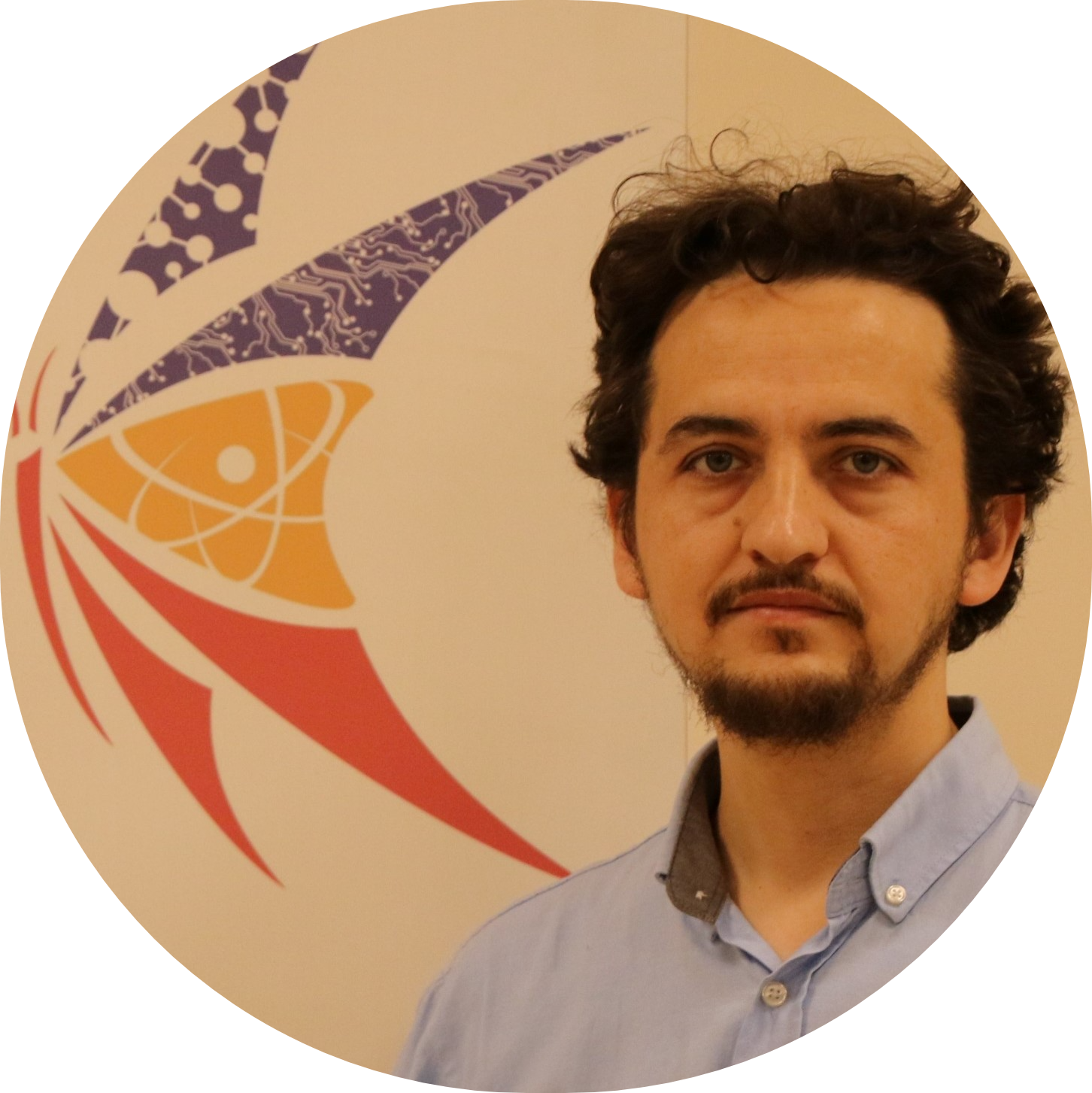 Dr. Mustafa Öztürk received the B.S. degree from the Bogazici University, Turkey, in 2003, and the Ph.D. degree from Gebze Technical University, in 2016. Now he is a researcher and experimental physicist at the Gebze Technical University. His current research interests include magnetoelectronics, magnetoresistive devices, electrical field control of magnetism, spin orbit torques in nanostructured magnetic multilayers, microlithography and microcontact printing.
Dr. Mustafa Öztürk received the B.S. degree from the Bogazici University, Turkey, in 2003, and the Ph.D. degree from Gebze Technical University, in 2016. Now he is a researcher and experimental physicist at the Gebze Technical University. His current research interests include magnetoelectronics, magnetoresistive devices, electrical field control of magnetism, spin orbit torques in nanostructured magnetic multilayers, microlithography and microcontact printing.

Dr. Erdem Demirci is an instructor in Applied Physics, and he is physicist from Gebze Technical University. He received his PhD Degree in Physics from Gebze Technical University (Turkey) in 2016. Between 2016-2017, he worked as a postdoc on graphene production and spin filter for 2 years at Istanbul Medeniyet University. In 2020, he spent 1 year on voltage control of magnetism at Universitat de Barcelona. Currently, he is working on voltage control of magnetism in magnetostrictive-piezoelectric hybrid materials for energy-efficient spintronic devices at Gebze Technical University. He has experience in magnetron sputtering deposition, micro/nano fabrication techniques for magnetic sensors, optical lithography, single layer graphene production, magneto-optic Kerr effect (MOKE), and magneto-transport properties.
Invited speakers include:
Abstract IDs:
TBA
Graphene and 2D Materials – Theory Session
 The discovery of graphene generated a remarkable research effort in understanding and exploiting these materials. The extraordinary physical properties of graphene have also triggered interest in other 2D materials such as transition metal dichalcogenides, black phosphorus, and hexagonal boron nitride.
The discovery of graphene generated a remarkable research effort in understanding and exploiting these materials. The extraordinary physical properties of graphene have also triggered interest in other 2D materials such as transition metal dichalcogenides, black phosphorus, and hexagonal boron nitride.
These materials offer new possibilities which include improved control of the electronic and optical properties, manipulation of spin degrees of freedom and confinement of excitons.
They have topological properties that are important in electronic applications such as field-effect transistors, photovoltaic devices, and bio-sensor.
In this session, the theoretical aspects of graphene and other new families of 2D materials will be discussed.
Current knowledge on the physical properties of graphene and related 2D crystals will be expanded by various computational approaches and the modeling of the electronic structure.
In particular important issues such as the dependence of the energy gap on thickness and strain, the multi-orbital character of the electronic state and the effect of the strong spin-orbit coupling will be investigated through various theoretical approaches.
This session will contribute to a better understanding of the intense activity taking place in these atomically thin 2D crystalline solids.
It is also hoped that some new possibilities with these materials will be put forward.
Session Topics Include (but not limited to):
- TBA
Session Organizer/Moderator
Oguz Gulseren
 Prof. Oğuz Gülseren obtained his Ph.D. in condensed Matter Physics at Bilkent University, 1992.
Prof. Oğuz Gülseren obtained his Ph.D. in condensed Matter Physics at Bilkent University, 1992.
His research areas are theoretical solid-state physics, nanoscience, metal nanowires, carbon nanotubes, phonons and vibrational spectrum, electronic structure of solids, materials properties from the first principle.
Invited speakers include:
Abstract IDs:
TBA
Nanocomposites: Properties and Applications
Crucial enhancements in functional and physical properties are achieved by implementing composite materials on the nanoscale. These improvements have driven the industrial research strategy to more advanced high-end applications. These applications include permanent magnets, biosensors, catalysis, storage media, supercapacitors, solar cells, drug delivery, magnetic resonance imaging, magnetic refrigeration, and microwave devices. This session presents an overview of existing and new pathways for the development of the next generation of application-targeted nanocomposites.
Session Topics Include (but not limited to):
• Nano-magnetic materials
- Oxide-ferrite nanocomposites
- Hard-soft nanocomposites
- Magnetic Exchange effect
- Dielectric materials
- Permanent magnets
- Photocatalysts
- Water treatment
- Antibacterial
To register your abstract for this session, please select “CS-33 Nanocomposites: Properties and Applications” as one of the “Preferred Topics” during the abstract submission process.
Session Organizer/Moderator
Ramadan Awad

Professor Ramadan Awad completed his Ph.D. as a channel system between Alexandria University (Egypt) and Genoa University (Italy) in 1997. He worked in the field of high-temperature superconductivity Mercury – Thallium Cuprates. He was awarded the professor degree in 2007. Prof. Awad worked as a director of the computer center at the Faculty of Science (Alexandria University) from 2011 to 2012. Currently, he is the Chairman of the Physics Department and the Dean of the Faculty of Science at Beirut Arab University (Lebanon).
His research interests are:
- Electrical and Magnetic Properties of Solids
- Superconductivity
- Nano-materials preparation
- Mechanical Properties of Solids
- Magnetic Properties of Nano-ferrite
- Composite materials
- Permanent magnets
- Photocatalysts
- Water treatment
He has more than 200 publications in the field of superconductivity and Nano Science.
Invited speakers include:
Abstract IDs:
TBA
Machine Learning (ML) and Artificial Intelligence(AI) with ab initio calculations
 Ab initio (or “first principles”) calculations play an essential role in Quantum Materials Modelling. The key advantages are accuracy and transferability, i.e.that the answers obtained are good and reliable in a wide range of different contexts. The downside is the computational cost required, which limits this approach in system size and time scale and often requires access to high-performance computing facilities. This contrasts with the traditional force-field approach, wherein “chemical intuition” is used to create the functional form of how energy varies with atomic position, and this is then parameterized by fitting to a mix of experimental data and/or ab initio results. The force-field approach is much faster to apply once it has been created but is limited in accuracy (it typically knows nothing about electrons) and transferability (it typically only works near the state point(s) it was parameterized to and is not transferable to new materials). The ML and AI approaches offer new ways of approaching the problem of materials modeling, with (typically) near-ab initio accuracy and near-force-field speed. There are a variety of different approaches being developed, and in this session, we will explore some of them, to learn more about their strengths and weaknesses.
Ab initio (or “first principles”) calculations play an essential role in Quantum Materials Modelling. The key advantages are accuracy and transferability, i.e.that the answers obtained are good and reliable in a wide range of different contexts. The downside is the computational cost required, which limits this approach in system size and time scale and often requires access to high-performance computing facilities. This contrasts with the traditional force-field approach, wherein “chemical intuition” is used to create the functional form of how energy varies with atomic position, and this is then parameterized by fitting to a mix of experimental data and/or ab initio results. The force-field approach is much faster to apply once it has been created but is limited in accuracy (it typically knows nothing about electrons) and transferability (it typically only works near the state point(s) it was parameterized to and is not transferable to new materials). The ML and AI approaches offer new ways of approaching the problem of materials modeling, with (typically) near-ab initio accuracy and near-force-field speed. There are a variety of different approaches being developed, and in this session, we will explore some of them, to learn more about their strengths and weaknesses.
Session Topics Include (but not limited to):
- TBA
To register your abstract for this session, please select “CS-25 Machine Learning (ML) and Artificial Intelligence(AI) with ab initio calculations” as one of the “Preferred Topics” during the abstract submission process.
Session Organizer/Moderator
Matt Probert, Akiyasu Yamamoto, Canan Aksoy
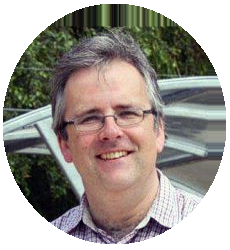 He is a Professor in the School of Physics, Engineering and Technology and a member of the Condensed Matter and Materials Physics group. He is the Director of the N8 Centre of Excellence for Computationally Intensive Research (N8-CIR). He is the chair of UKCP and one of the core developers of the CASTEP computer program.Here you will find details about Matt Probert personal research interests and the activities of his research group and some lecture notes relevant to my teaching.
He is a Professor in the School of Physics, Engineering and Technology and a member of the Condensed Matter and Materials Physics group. He is the Director of the N8 Centre of Excellence for Computationally Intensive Research (N8-CIR). He is the chair of UKCP and one of the core developers of the CASTEP computer program.Here you will find details about Matt Probert personal research interests and the activities of his research group and some lecture notes relevant to my teaching.
 Akiyasu Yamamoto has been an associate professor at the Tokyo University of Agriculture and Technology since 2015. He obtained his B.E., M.E., and Ph.D. from the University of Tokyo. In 2017, he received the Award of Young Scientists from the Minister of MEXT, Japan. He has published papers focused on the realization of MgB2 conductors by advanced processing techniques in addition to Permanent magnet with MgB2 bulk for magnetic applications.
Akiyasu Yamamoto has been an associate professor at the Tokyo University of Agriculture and Technology since 2015. He obtained his B.E., M.E., and Ph.D. from the University of Tokyo. In 2017, he received the Award of Young Scientists from the Minister of MEXT, Japan. He has published papers focused on the realization of MgB2 conductors by advanced processing techniques in addition to Permanent magnet with MgB2 bulk for magnetic applications.
 Canan Aksoy received her PhD in 2012 from Karadeniz Technical University. She currently serves as the Head of the Department of Electronics and Communication Engineering at the same university. During her PhD and postdoctoral research, she was affiliated with the Department of Materials at the University of Oxford, where she conducted research on superconducting joints. Her current research focuses on the fabrication of MgB2 bulk, the design of LTS, HTS, and MgB2 joints for superconducting magnet applications, as well as the radiation shielding properties of materials.
Canan Aksoy received her PhD in 2012 from Karadeniz Technical University. She currently serves as the Head of the Department of Electronics and Communication Engineering at the same university. During her PhD and postdoctoral research, she was affiliated with the Department of Materials at the University of Oxford, where she conducted research on superconducting joints. Her current research focuses on the fabrication of MgB2 bulk, the design of LTS, HTS, and MgB2 joints for superconducting magnet applications, as well as the radiation shielding properties of materials.
Invited speakers include:
Abstract IDs:
TBA
High Temperature Superconductors for fusion applications
The key enabling technology for the development of compact fusion reactor is that of High-Temperature Superconducting (HTS) tapes, which can generate the high magnetic fields necessary for the development of compact fusion reactors.
However, the development of these materials is far from complete, and several challenges are still to be faced, in particular:
– technology of HTS cables and magnets for fusion
– HTS thermal stability and quenching under fusion conditions
– fusion radiation environment effects on HTS properties
In this session, speakers will focus on the topics above, providing a comprehensive picture of the paths that can be followed to optimize these materials and their use, in order to achieve the production of energy from fusion reactions.
Session Topics Include (but not limited to):
- HTS technology
- Irradiation effects
- Fusion magnets
To register your abstract for this session, please select “CS-20 High Temperature Superconductors for fusion applications” as one of the “Preferred Topics” during the abstract submission process.
Session Organizer/Moderator
Daniele Torsello, Francesco Laviano, Giuseppe Celentano
 Daniele Torsello is a Research Fellow at Politecnico di Torino, where he received his Ph.D. in Physics in 2020. His research is focused on the investigation of the response of superconductors to crystallographic disorder caused by high energy particle irradiation. These studies are aimed to: i) the understanding of the fundamental mechanism of superconductivity in novel materials such as Fe-based superconductors, 2) the optimization of vortex pinning in practical superconductors, and 3) the investigation of the radiation hardness of high-temperature superconductors for fusion applications.
Daniele Torsello is a Research Fellow at Politecnico di Torino, where he received his Ph.D. in Physics in 2020. His research is focused on the investigation of the response of superconductors to crystallographic disorder caused by high energy particle irradiation. These studies are aimed to: i) the understanding of the fundamental mechanism of superconductivity in novel materials such as Fe-based superconductors, 2) the optimization of vortex pinning in practical superconductors, and 3) the investigation of the radiation hardness of high-temperature superconductors for fusion applications.
 Francesco Laviano is Associated Professor of Experimental Physics at Politecnico di Torino and received his Ph.D. in Physics in 2005. His recent research activity is mainly devoted to exploiting superconducting materials for renewable-energy applications. In particular, his team is currently studying the radiation effects on high temperature superconductors in view of their use in high field magnets for confining the plasma in compact nuclear fusion reactors.
Francesco Laviano is Associated Professor of Experimental Physics at Politecnico di Torino and received his Ph.D. in Physics in 2005. His recent research activity is mainly devoted to exploiting superconducting materials for renewable-energy applications. In particular, his team is currently studying the radiation effects on high temperature superconductors in view of their use in high field magnets for confining the plasma in compact nuclear fusion reactors.
 Giuseppe Celentano, physicist, is a researcher at the Superconductivity Laboratory of ENEA (Italian National Agency for New Technologies, Energy and Sustainable Economic Development) since 2000. His field of interest are the physics and technology of superconducting YBCO thin films and multilayer epitaxial structures on metallic substrates for the development of coated conductor technology. In the last decade, he started working on the development of HTS conductors for fusion magnets based on REBCO coated conductors.
Giuseppe Celentano, physicist, is a researcher at the Superconductivity Laboratory of ENEA (Italian National Agency for New Technologies, Energy and Sustainable Economic Development) since 2000. His field of interest are the physics and technology of superconducting YBCO thin films and multilayer epitaxial structures on metallic substrates for the development of coated conductor technology. In the last decade, he started working on the development of HTS conductors for fusion magnets based on REBCO coated conductors.
Invited speakers include:
Abstract IDs:
TBA
Quantum Transport and Novel Broken Symmetry Ground States
 The field of quantum transport, with its broad set of formalisms and experimental techniques, provides a valuable connection between experimental observables and physical properties of electronic ground states. Among such systems, our focus is set on the novel broken symmetry ground states such as: exotic superconductivity, charge ordering outside of standard nesting model, nontrivial topological materials etc.
The field of quantum transport, with its broad set of formalisms and experimental techniques, provides a valuable connection between experimental observables and physical properties of electronic ground states. Among such systems, our focus is set on the novel broken symmetry ground states such as: exotic superconductivity, charge ordering outside of standard nesting model, nontrivial topological materials etc.
The other aspect of quantum transport we focus on is realized in heterostructures of different types. Among them we single out just few examples: different types of normal and superconducting mesoscopic weak links, interfaces between systems in different ground states and/or topology, manipulation of collective modes in heterostructures, etc.
Session Topics Include (but not limited to):
- Extended Drude model and memory function
- Optical- and magneto-conductivity
- Dirac and Weyl semimetals
- Topological materials and their junctions
- Exotic and topological superconductivity
- Charge ordering in quasi-2D systems with closed Fermi surface
- Normal, magnetic and superconducting mesoscopic heterostructures
- Nanoelectromechanical weak links
To register your abstract for this session, please select “CS-44 Quantum Transport and Novel Broken Symmetry Ground States” as one of the “Preferred Topics” during the abstract submission process.
Session Organizer/Moderator
Danko Radić – Zoran Rukelj
 Prof. Danko Radić works in the field of theoretical condensed matter physics at the University of Zagreb, Faculty of Science (PMF), Croatia. His research interests cover systems of anomalous dimensionality with broken symmetry ground state (charge and spin density waves), theory of phase transitions, nonlinear physics, nanoelectromechanical systems (NEMS), NEMS qubits and quantum information. He keeps active collaborations are with the Institute for Basic Science, Daejeon, Korea, Chalmers University of Technology and University of Gothenburg, Sweden and Ruhr Universität Bochum, Germany.
Prof. Danko Radić works in the field of theoretical condensed matter physics at the University of Zagreb, Faculty of Science (PMF), Croatia. His research interests cover systems of anomalous dimensionality with broken symmetry ground state (charge and spin density waves), theory of phase transitions, nonlinear physics, nanoelectromechanical systems (NEMS), NEMS qubits and quantum information. He keeps active collaborations are with the Institute for Basic Science, Daejeon, Korea, Chalmers University of Technology and University of Gothenburg, Sweden and Ruhr Universität Bochum, Germany.
 The current scientific interest of Assistant professor Zoran Rukelj (University of Zagreb, Faculty of Science) is focused on the study of charge transport. This includes intraband and interband single- particle excitations as well as collective charge excitations such as excitons and plasmons in systems like quasi-two dimensional conductors, insulators and heterostructures, Dirac and Weyl semimetals, etc. The used techniques revolve around the semiclassical transport equations with the generalised energy and momentum dependent scattering within the so called memory function formalism.
The current scientific interest of Assistant professor Zoran Rukelj (University of Zagreb, Faculty of Science) is focused on the study of charge transport. This includes intraband and interband single- particle excitations as well as collective charge excitations such as excitons and plasmons in systems like quasi-two dimensional conductors, insulators and heterostructures, Dirac and Weyl semimetals, etc. The used techniques revolve around the semiclassical transport equations with the generalised energy and momentum dependent scattering within the so called memory function formalism.
Invited speakers include:
Abstract IDs:
TBA
Magnetism of Nanoparticles, Nano-Wires and Nano-Structures
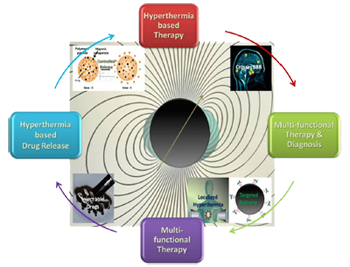 Interest in nanotechnologies and nanoscale materials, particularly magnetic nanomaterials, has grown recently and their applications have attracted the attention of both the research and industrial communities in the biomedical, environmental, clinical, energy and technological applications owing to their many unique properties.
Interest in nanotechnologies and nanoscale materials, particularly magnetic nanomaterials, has grown recently and their applications have attracted the attention of both the research and industrial communities in the biomedical, environmental, clinical, energy and technological applications owing to their many unique properties.
Session Topics Include (but not limited to):
• Synthesis and Characterization of Magnetic Nanomaterials
- Magnetic Properties
- Biomedical Applications
- Energy and Technological Applications of Magnetic Nanomaterials
To register your abstract for this session, please select “CS-29 Magnetism of Nanoparticles, Nano-Wires and Nano-Structures” as one of the “Preferred Topics” during the abstract submission process.
Session Organizer/Moderator
Hakan Köckar
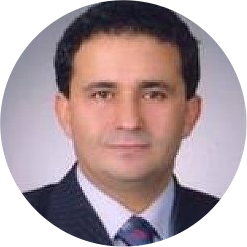 Hakan Köckar is a Professor at Balıkesir University. He received his Ph. D. in 1998 from the University of Wales Cardiff.
Hakan Köckar is a Professor at Balıkesir University. He received his Ph. D. in 1998 from the University of Wales Cardiff.
Details about his research activities can be found here;
http://w3.balikesir.edu.tr/~nanomanyetizma/index_dosyalar/Page435.html
Invited speakers include:
Abstract IDs:
TBA
Fe-Based Superconductors: Growth and Properties Relevant to Applications
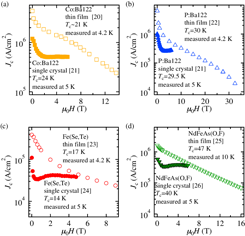 Fe-based superconductors (FBS) discovered in 2008 have significant potential for high field magnet applications thanks to their high upper critical field and its low electromagnetic anisotropy. Several research groups have already demonstrated FBS wires, tapes and bulks as proof-of-principle studies for conductor and magnet applications. However, even after 15 years of research, crystal and thin film growth still remains challenging in some of the systems. In this session, the recent development and advances in the processing of FBS wires, tapes, and bulk magnets, involving processing and materials properties will be covered.
Fe-based superconductors (FBS) discovered in 2008 have significant potential for high field magnet applications thanks to their high upper critical field and its low electromagnetic anisotropy. Several research groups have already demonstrated FBS wires, tapes and bulks as proof-of-principle studies for conductor and magnet applications. However, even after 15 years of research, crystal and thin film growth still remains challenging in some of the systems. In this session, the recent development and advances in the processing of FBS wires, tapes, and bulk magnets, involving processing and materials properties will be covered.
Session Topics Include (but not limited to):
- TBA
Session Organizer/Moderator
Iida Kazumasa
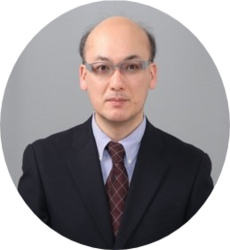 Kazumasa Iida was appointed as a full professor at Nihon University, Japan in 2022. He received the doctor of engineering from Nagoya University in 2003. He spent the University of Cambridge from 2004 to 2007 as a postdoctoral researcher under the supervision of Prof. David A Cardwell. After spending 3.5 years in Cambridge, he joined the group led by Prof. Bernhard Holzapfel at the IFW Dresden as a senior scientist. He was appointed as an associate professor at Nagoya University in 2014. His research experience covers a wide range of materials, involving the fabrication of Sr-ferrite magnets, the growth of garnet films for magneto-optical imaging, and the growth of HTS and Fe-based superconducting materials in the form of bulk and thin films
Kazumasa Iida was appointed as a full professor at Nihon University, Japan in 2022. He received the doctor of engineering from Nagoya University in 2003. He spent the University of Cambridge from 2004 to 2007 as a postdoctoral researcher under the supervision of Prof. David A Cardwell. After spending 3.5 years in Cambridge, he joined the group led by Prof. Bernhard Holzapfel at the IFW Dresden as a senior scientist. He was appointed as an associate professor at Nagoya University in 2014. His research experience covers a wide range of materials, involving the fabrication of Sr-ferrite magnets, the growth of garnet films for magneto-optical imaging, and the growth of HTS and Fe-based superconducting materials in the form of bulk and thin films
Invited speakers include:
Abstract IDs:
TBA
Theory of Magnetism
 The purpose of this session is to bring together the different scientists working from a theoretical point of view on magnetism and superconductivity. These are the different theories used today to understand, explain, and predict the different phenomena related to magnetism and superconductivity, such as first-principles methods. The session attempts to cover a broad spectrum of news material to shed light on the most important recent research.
The purpose of this session is to bring together the different scientists working from a theoretical point of view on magnetism and superconductivity. These are the different theories used today to understand, explain, and predict the different phenomena related to magnetism and superconductivity, such as first-principles methods. The session attempts to cover a broad spectrum of news material to shed light on the most important recent research.
Session Topics Include (but not limited to):
- Theory of Magnetism
- First Principles
- Ab Initio Calculations
To register your abstract for this session, please select “CS-56 Theory of Magnetism” as one of the “Preferred Topics” during the abstract submission process.
Session Organizer/Moderator
Ali Zaoui
 Ali Zaoui has been a full professor of the Universities ( Polytech’Lille/ University of Lille1) since February 2005. He is an actual professor of Exceptional Class 2 ( maximum promotion of professor in France). He got his Ph.D. from the University of Metz. In September 1999 he was employed as a research associate at the INFM (National Institute of Matter Physics). Italy. He then joined the Max Planck Institute of Stuttgart, Germany. His research has been mainly dedicated to modeling and simulation methods based on ab initio, molecular dynamics, and Monte Carlo. They cover a wide range of materials including semiconductors metals, ceramics, clathrates, energetic materials, geomaterials (rocks, clays,…) nanocomposites.. In addition, several of his works focused mainly on magnetism. He has published over 170 papers in international journals.
Ali Zaoui has been a full professor of the Universities ( Polytech’Lille/ University of Lille1) since February 2005. He is an actual professor of Exceptional Class 2 ( maximum promotion of professor in France). He got his Ph.D. from the University of Metz. In September 1999 he was employed as a research associate at the INFM (National Institute of Matter Physics). Italy. He then joined the Max Planck Institute of Stuttgart, Germany. His research has been mainly dedicated to modeling and simulation methods based on ab initio, molecular dynamics, and Monte Carlo. They cover a wide range of materials including semiconductors metals, ceramics, clathrates, energetic materials, geomaterials (rocks, clays,…) nanocomposites.. In addition, several of his works focused mainly on magnetism. He has published over 170 papers in international journals.
Invited speakers include:
Abstract IDs:
TBA
Quantum Functional Materials and Their Emerging Technologies

 Quantum technology is a new and advanced area of physics and engineering, based on the use of some of the phenomena in quantum mechanics, such as quantum entanglement, quantum superposition, and quantum tunneling and interference effects for practical applications such as quantum computing, quantum materials, quantum sensing, quantum cryptography, high precision quantum metrology, and quantum imaging.
Quantum technology is a new and advanced area of physics and engineering, based on the use of some of the phenomena in quantum mechanics, such as quantum entanglement, quantum superposition, and quantum tunneling and interference effects for practical applications such as quantum computing, quantum materials, quantum sensing, quantum cryptography, high precision quantum metrology, and quantum imaging.
The progress made in condensed matter physics during the last two decades leads to discovery principally new phenomena and engineering of advanced functional materials which may play a crucial role in the developments in modern science and technology. Especially, this concerns a relatively new area, quantum technology which is based on the use of quantum phenomena in the functionalization of advanced nanoscale materials. It is commonly believed that low-dimensional quantum functional materials such as graphene, topological insulators, novel superconductors, quantum sensors, and quantum spin liquids may replace in near future traditional ones in electronic, optical and mechanical devices by increasing their energy- and resource-saving efficiency, durability, making them maximally compact, flexible and environmentally safe. Unusual properties of these materials make possible realization and practical utilization of new quantum phenomena related to underlying fundamental phenomena such as topological effects, relativistic-like behavior (in graphene and Majorana fermions), disorder and coherence effects, quantum transport, etc. Fabrication of new materials and devices requires the study of such effects and tuning of the physical properties of these materials.
Session Topics Include (but not limited to):
- TBA
Session Organizer/Moderator
Davron Matrasulov
 TBA
TBA
Invited speakers include:
Abstract IDs:
TBA
Quantum Error Mitigation
Current quantum hardware for information processing is prone to errors, limiting the complexity of computations that can be performed. Traditional error mitigation techniques have involved encoding the logical quantum information content of a single qubit in an array of physical qubits— the surface code and the toric code being examples of qubits on a square grid or more complex graph in the case of the latter. More recently, designs have been proposed requiring a smaller number of physical qubits, and architectures which are hardware efficient and protect against only the most prevalent of errors. Additionally, noise suppression techniques have been developed where the processing capacity of quantum hardware can be enhanced by tailoring one type of noise into another. This session explores the different modalities of quantum error mitigation currently being developed and highlights open challenges in the field.
Session Topics Include (but not limited to):
TBA
To register your abstract for this session, please select “CS-40 Quantum Error Mitigation” as one of the “Preferred Topics” during the abstract submission process.
Session Organizer/Moderator
Irfan Siddiqi
 Irfan Siddiqi is the head of the Physics Department at UC Berkeley where he is the Douglas Giancoli Chair Professor. He is also a professor of Electrical Engineering and Computer Science, and a Faculty Scientist at Lawrence Berkeley National Laboratory. Irfan received his undergraduate degree in chemistry & physics at Harvard University, and a PhD in applied physics from Yale University and joined the Berkeley Faculty in 2005. His research group focuses on the development of advanced superconducting circuits for quantum information processing, including computation and metrology. Irfan is also the director of the Advanced Quantum Testbed at LBNL, which develops and operates full-stack quantum computing platforms based on superconducting qubits. He is known for key contributions to quantum measurement science, including real time observations of wavefunction collapse, tests of the Heisenberg uncertainty principle, quantum feedback, and the development of a range of microwave frequency, quantum noise limited amplifiers and detectors. Irfan is co-author of the book Quantum Measurement: Theory and Practice, a fellow of the American Academy of Arts and Sciences and the American Physical Society. He is the recipient of the APS George E. Valley prize and the Joseph F. Keithley Award. He is also a recipient of the Berkeley Distinguished Teaching Award—the university’s highest award for commitment to pedagogy.
Irfan Siddiqi is the head of the Physics Department at UC Berkeley where he is the Douglas Giancoli Chair Professor. He is also a professor of Electrical Engineering and Computer Science, and a Faculty Scientist at Lawrence Berkeley National Laboratory. Irfan received his undergraduate degree in chemistry & physics at Harvard University, and a PhD in applied physics from Yale University and joined the Berkeley Faculty in 2005. His research group focuses on the development of advanced superconducting circuits for quantum information processing, including computation and metrology. Irfan is also the director of the Advanced Quantum Testbed at LBNL, which develops and operates full-stack quantum computing platforms based on superconducting qubits. He is known for key contributions to quantum measurement science, including real time observations of wavefunction collapse, tests of the Heisenberg uncertainty principle, quantum feedback, and the development of a range of microwave frequency, quantum noise limited amplifiers and detectors. Irfan is co-author of the book Quantum Measurement: Theory and Practice, a fellow of the American Academy of Arts and Sciences and the American Physical Society. He is the recipient of the APS George E. Valley prize and the Joseph F. Keithley Award. He is also a recipient of the Berkeley Distinguished Teaching Award—the university’s highest award for commitment to pedagogy.
Invited speakers include:
Abstract IDs:
TBA
Theory of Superconductivity
The aim of this session is to bring together the different scientists working in the area of theoretical descrşption of superconductivity. These are the different theories used today to understand, explain and predict the different properties of superconductivity, such as first-principles methods. The session attempts to cover a broad spectrum of news material and the anisotropy and multiband effects in new superconductors: cuprate superconductors, borocarbides, magnezium-diboride and oxypnictides.
Session Topics Include (but not limited to):
• Multiband and anisotropic Ginzburg-Landau theory in application to new compounds
- Electron-boson coupling theory of superconductivity (BSC and Eliashberg theory)
- Theortetical description of superconductivity in strong correlated systems
- BCS-BEC crossover in new superconductors
To register your abstract for this session, please select “F9 – Theory of Superconductivity” as one of the “Preferred Topics” during the abstract submission process.
Session Organizer/Moderator
Iman Askerzade
 Iman Askerzade is a scientist in Ankara University, Turkey (since 2001). He received his Ph. D. in 1995 from the Azerbaijan Academy of Sciences and he was working in the Institute of Physics. His research is focused on theory of superconductivity including many-band Gizburg-Landau theory, Eliasgberg equations, Josephson Dynamics and superconducting qubits.
Iman Askerzade is a scientist in Ankara University, Turkey (since 2001). He received his Ph. D. in 1995 from the Azerbaijan Academy of Sciences and he was working in the Institute of Physics. His research is focused on theory of superconductivity including many-band Gizburg-Landau theory, Eliasgberg equations, Josephson Dynamics and superconducting qubits.
Invited speakers include:
Igor Herbut (Simon Fraser University, Canada)
Chi Ho Wong (Division of Science, Engineering, and Health Studies, School of Professional Education and Executive, Hong Kong)
Tomáš Novotný (Department of Condensed Matter Physics, Faculty of Mathematics and Physics, Charles University in Pr, Czech Republic)
Iman Askerzade (Ankara University, Turkey)
Abstract IDs:
TBA
Abstract IDs:
TBA
Superconducting Spintronics: Novel Quantum Circuits
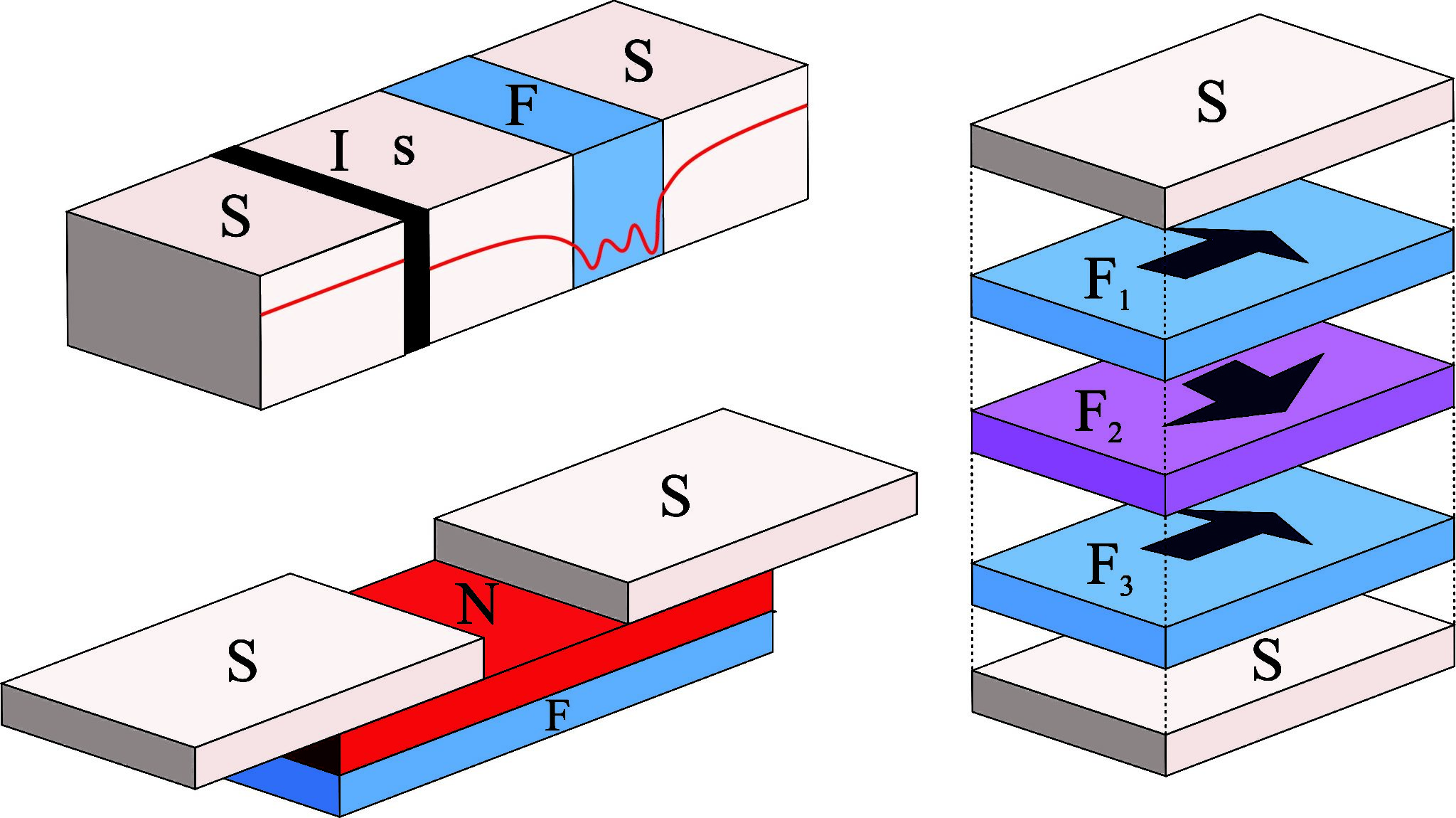 The emerging field of spintronics is based on electron spin and magnetization. This new area of research and technology aims at enhancing the storage capacity of computer hard drives and potentially play an important role in quantum computing’s future. Superconductor-ferromagnet (SF) structures are widely regarded as the building blocks of this superconducting spintronic technology. It is generally accepted that conventional spintronic devices typically require large currents with high resistance giving rise to heat concerns, so researchers are investigating the viability of superconductors showing no/low resistance (dc/ac) to the current flow. In superconductors, there is no magnetic field in the interior of the superconductor, while there is a saturated magnetic field presence in the ferromagnetic material, when these two materials meet at a boundary interface, there could be an electromagnetic proximity effect. This session will consist of world-wide leading speakers with new results in a way to understand longstanding questions about how SF structures interact, and these could lead to a fast and effective technology of superconducting spintronics.
The emerging field of spintronics is based on electron spin and magnetization. This new area of research and technology aims at enhancing the storage capacity of computer hard drives and potentially play an important role in quantum computing’s future. Superconductor-ferromagnet (SF) structures are widely regarded as the building blocks of this superconducting spintronic technology. It is generally accepted that conventional spintronic devices typically require large currents with high resistance giving rise to heat concerns, so researchers are investigating the viability of superconductors showing no/low resistance (dc/ac) to the current flow. In superconductors, there is no magnetic field in the interior of the superconductor, while there is a saturated magnetic field presence in the ferromagnetic material, when these two materials meet at a boundary interface, there could be an electromagnetic proximity effect. This session will consist of world-wide leading speakers with new results in a way to understand longstanding questions about how SF structures interact, and these could lead to a fast and effective technology of superconducting spintronics.
Session Topics Include (but not limited to):
•Proximity effects in SF structures
•Josephson pi-juncitons
•Spin-triplet supercurrents
•Memory devices
To register your abstract for this session, please select “CS-49 Superconducting Spintronics: Novel Quantum Circuits” as one of the “Preferred Topics” during the abstract submission process.
Session Organizer/Moderator
Alexander A. Golubov

Dr. Alexander Golubov is an Associated Professor at Moscow Institute of Physics and Technology (MIPT), Russia. Published more than 400 scientific papers in internationally recognized journals, received over 12000 citations, h-index 54. APS Fellow (2021). His scientific interests involve theory of electronic transport in superconducting structures, including superconducting spintronics and the physics of unconventional and multiband superconductivity.
Invited speakers include:
Abstract IDs:
TBA


 Multicomponent superconductivity is the superconducting state that cannot be described by a single component order parameter or associated with a single characteristic energy scale. The most known example of this state is superconductivity, which breaks the time-reversal symmetry or nematic superconductivity. These superconducting states can result in various new phenomena such as spontaneous generation of magnetic fields, formation of superconducting domain walls, vortex skyrmions, fractional vortices, Majorana bound states in the superconducting vortex cores and the appearance of the electron quadrupling, including change 4e superconductivity. In a more general context, these phenomena are related to systems with intertwined orders, such as the coexistence of superconductivity and charge or spin density waves. In this session, we would like to get together scientists with different backgrounds and various visions of these complex states and discuss theoretical and experimental progress in this field.
Multicomponent superconductivity is the superconducting state that cannot be described by a single component order parameter or associated with a single characteristic energy scale. The most known example of this state is superconductivity, which breaks the time-reversal symmetry or nematic superconductivity. These superconducting states can result in various new phenomena such as spontaneous generation of magnetic fields, formation of superconducting domain walls, vortex skyrmions, fractional vortices, Majorana bound states in the superconducting vortex cores and the appearance of the electron quadrupling, including change 4e superconductivity. In a more general context, these phenomena are related to systems with intertwined orders, such as the coexistence of superconductivity and charge or spin density waves. In this session, we would like to get together scientists with different backgrounds and various visions of these complex states and discuss theoretical and experimental progress in this field.